On Wednesday, we went out to lunch again, at a restaurant near the school. Afterwards, students returned to the Yucai School for their last culture classes. Their two options were kite-making and Chinese yo-yo.
On Tuesday afternoon, students left school immediately after class to eat lunch at a nearby noodle restaurant. After a delicious lunch, students headed to a nearby karaoke place and spent the next 3 hours letting loose, belting their hearts out to songs in both English and Chinese. Some students invited their host siblings. The Chinese teachers also came along and sang, as well! Erica and her host sibling got to sing together! On Monday, students were back to calligraphy class. This time, they learned a new script. Having previously learned to write clercal script and "oracle bones" pictographs, on Monday they learned seal script. This is the style of writing that is used on Chinese name seals (the red stamps that Chinese artists use to sign their work). They made four pieces in all, writing 4-character Chinese sayings from right to left. On Saturday morning, students boarded the bus for a 6 hour long ride to the Bashang Plateau in Hebei Province (it is, as students know it, part of "Inner Mongolia", which is part of China, not Mongolia). Though it was raining, it was a beautiful scenic drive through the mountains. Upon arriving in Bashang, students had some time to eat lunch and settle in at the hotel before climbing aboard the bus once more to head to a park in the grasslands. At the park, students had the opportunity to do ATV-riding, grass sledding, archery, and play a version of laser tag. Luckily, it didn't rain much while we were at the park. We went back to the hotel, where the weekend festivities were just beginning. There were lambs roasting over a fire, a colorful tent, fireworks going off in every direction, and people lighting paper lanterns. Many of the students thought it was a Chinese holiday of sorts, but in fact, Bashang holds these kinds of festivities every weekend--a joyous getaway from city life. After dinner, a delicious leg of lamb was prepared for the students! Using chopsticks, students ate it fresh off the grill. Then, students were given paper lanterns to set off on their own! The first one caught on fire and broke, but the next few attempts were more successful. The final lantern was decorated with "SSC Beijing 2013" and the students all signed their names in Chinese. After the lanterns, there was singing and dancing around a fire under a tent! The students even got to sing karaoke, singing a couple English songs from the machine's limited selection. The biggest hit of the night was "YMCA"! Finally, exhausted from all the singing and dancing, the students went to bed. On Sunday morning, about half the students chose to wake up at 4:30 AM to catch the sunrise. We walked out to the edge of town, but unfortunately the sunrise was obscured by clouds. Still, it felt great to be outside in the crisp morning air, before the rest of the town woke up. The fog also lent itself to some beautiful pictures! Then, students returned to the hotel where they had a couple more hours to sleep. After breakfast, we left to go horseback riding. Unfortunately, as it turned out to be a gorgeous day, all the horses were booked at every place we tried. We ended up going to another park by a lake, this one with carnival rides and carnival games. Something especially striking was that you could see the moon in the sky all day! If you look closely, you can see a crescent moon in the picture below. Then, we went back to the hotel to pack and eat lunch. Around noon, we boarded the bus back to Beijing. We arrived around 6:30 PM, and students went home with their host families to rest. On Thursday afternoon, students climbed on the bus for the Dandelion School, a middle school for the children of migrant workers. Because migrant workers are classified as "rural", they are not entitled to the same social benefits as other Beijingers who are classified as "urban". One of these benefits is education, so it is very difficult for the children of migrant workers to receive a decent education away from their family's home. The Dandelion School is a nonprofit organization aiming to give these children a high-quality education. In the summer, they run an English language camp. Read more about the Dandelion School here! Upon arriving at the school, we were taken on a tour of the campus. It's a beautiful, cheerful campus with bright colors, mosaics, and murals--anything to make it more inviting and uplifting for the students. We even saw a classroom which was donated to the school by the China Institute in 2009! At 3:00, students split into various groups to visit the Dandelion School's classes such as English, music, art, PE, and English reading. The students were able to watch the classes to see how the English summer camp worked, and many students participated in class games and activities! The students all had fun learning about the Dandelion School and getting to participate in the summer camp activities. The Dandelion School is definitely a successful organization, though not without its difficulties (it has moved locations multiple times and will again, due to government plans for the area, also, they will have to cut down on enrollment due to space issues). Students agreed that it was neat to visit such a school and interact with its students. Before we left, each student was given a lovely thank you card. On Wednesday afternoon, students participated in culture classes for the third time. The two choices were Chinese instrument, where students learned to play the hulusi, and paper-cutting. Some students also chose to finish the masks they began making in the Beijing opera mask-making classes from weeks past. Culture classes ended at 2:20, so students had free time afterwards to explore Beijing. Some students went to Jingshan Park, some students went to Nanluoguxiang, some students went indoor ice skating (perfect on such a hot day!), and some students did activities with their host families! Tuesday started off with tai-chi under a bright blue sky! Then, after a regular morning of classes and lunch, students boarded the bus to the Beijing Olympic Park to see the famous Bird's Nest (Niao Chao) and Water Cube (Shui Lifang). Students had fun checking out the Olympic Park and everyone took pictures in front of the Bird's Nest! On Monday morning, only 17 students arrived at the Yucai School. While they all agreed they missed the East China students, they also thought that it was nice to have a smaller group so that everyone could really get to know everyone else. After a morning of tai-chi and regular classes, students had their third calligraphy class. This time, they learned to paint pictographs (called "oracle bones" in Chinese), that is, characters that have evolved from pictures. After a brief introduction, students got to work painting pictographs of the 12 zodiac signs! Afterwards we had a lecture/discussion on China and Chinese culture. We started off by watching this ten-minute video to help students understand China. Afterwards, Shen Laoshi led a discussion about Chinese culture and customs. We discussed the concept of face (mianzi) and what it meant to "lose face." We also talked about the importance of interpersonal relationships and connections (guanxi) in China. Students spoke up to share their own experiences with life in China. Afterwards, students were free to head home or off to whatever activities they had planned for the afternoon. Earlier, I had offered to take a couple of students to a bakery and bubble tea shop about 20 minutes from the Yucai School at the end of the day. However, I ended up taking eleven students! Many of them bought pastries and they all enjoyed the milk tea with boba (zhenzhu naicha). Lily was especially excited as she'd been looking all over Beijing for good bubble tea. She ordered two bubble teas and drank them both in the store! Today, 13 of the 30 SSC students left Beijing by train, and will spend the next two weeks traveling in Nanjing, Suzhou, and Shanghai. As I will be staying in Beijing, I will work with Feng Laoshi, the program assistant, and one of the SSC-East China students to keep a blog about the daily activities of the East China students. To get to that blog, click "East China" at the top of the website page or click this link to the East China blog.
It may take a couple days to update the blog, as we don't yet know what internet access will be like in Jiangsu (the province which Nanjing and Suzhou are in). The Beijing blog will continue with daily updates about the activities of the SSC-Beijing students! The last two days have been a whirlwind of sightseeing, class projects, celebrations, and other Kodak moments (meaning tons of photos in this blog post--see below)! On Thursday and Friday, students did not have regular class, and instead engaged in a two day-long project on the Forbidden City (Gugong). On Thursday, students spent all day at the Forbidden City, and on Friday, they made presentations on their chosen topic about the Forbidden City. On Thursday morning, students had tai-chi class (for the East China students, this was their last tai-chi class) and then boarded the bus for the Forbidden City. After a long and crowded walk through Tiananmen Square, we finally made it to the Forbidden City, an imperial palace from the Ming Dynasty until the end of the Qing Dynasty. It was built in the 15th century and its architecture is exemplary of Chinese palatial architecture of the time. Before touring the huge site, students attended an academic lecture by an expert from the Palace Museum. Students learned about the history of the site, the architecture (including the imperial axis, who could go through which gates, etc.), the celebrations, and more. They also became experts at identifying pebble mosaics which had everything from pumpkins to bicycles on them. Many of the images stood for harmony, power, and most importantly, longevity. Afterwards, students formed groups based on four themes concerning the Forbidden City: Architecture and the Forbidden City, Chinese Culture and the Forbidden City, Forbidden City as Home, Forbidden City as Seat of Power. Each group of 3-4 students was accompanied by a teacher. From there, they were given three hours to explore the Forbidden City as well as complete a photo scavenger hunt on their chosen theme. Students utilized their Chinese skills in asking for directions around the huge and very crowded site. After the scavenger hunt, the students met at the back of the Forbidden City to head back to the Yucai School. On Friday, students met at school and had about two hours to meet with their groups and prepare a presentation on the Forbidden City and their experiences of life in Beijing. Students collected photos and each student wrote up their portion of the presentation entirely in Chinese. With the help of the Chinese teachers, they incorporated recently learned vocabulary and grammar structures into their presentations. Some students took a break to embark on a fish-saving mission in the pond by our classrooms! Then at 10 AM, the presentations began. All the students did a wonderful job speaking entirely in Chinese and according to the teachers, you could see how far the students had come in just two weeks of language classes! Afterwards, the departing East China students were each presented with a surprise gift--their own calligraphy work matted and made into a scroll! As this was the East China students' last day at the Yucai School, there were many hugs and goodbyes, both between East China and Beijing students and between East China students and their teachers. Then students headed to lunch, to be met by yet another surprise--cake for Abby and Olivia's birthdays! The students and teachers all sung Happy Birthday to the twins in Chinese. Finally, the students left the Yucai School to spend their free afternoon at the park, shopping, or at the museum. Outside the school, the Beijing and East China students snapped pictures with each other, as many would not see each other for the next two weeks. |
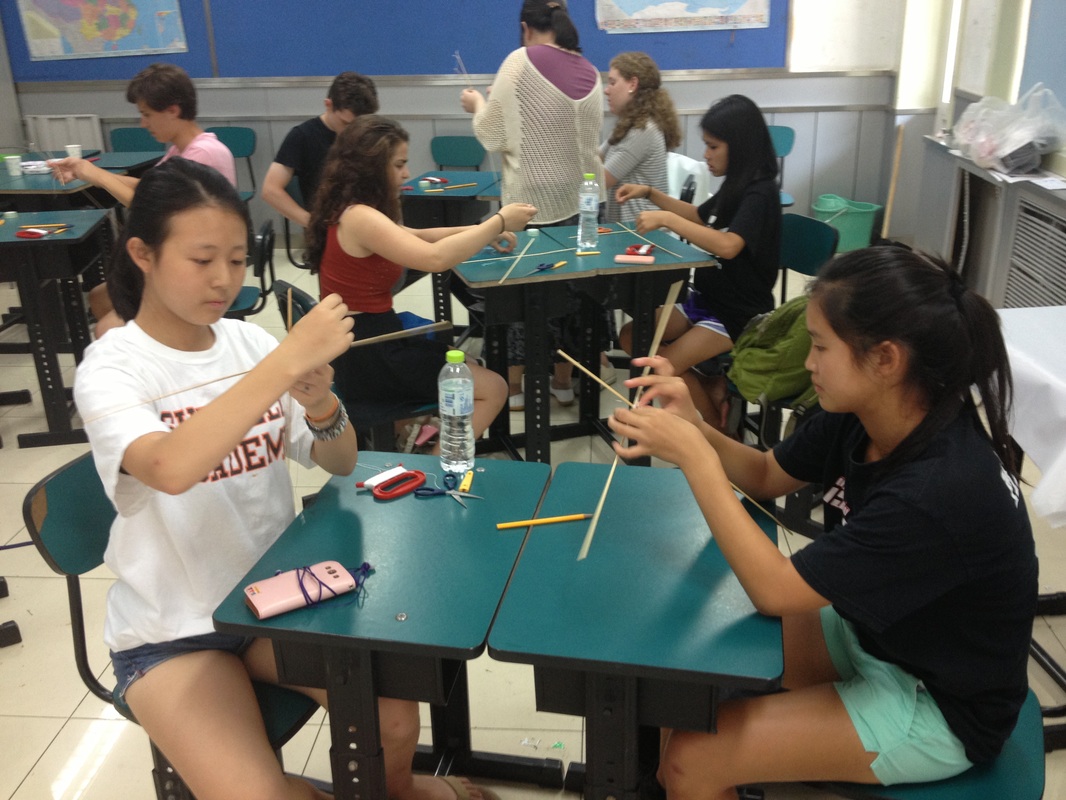
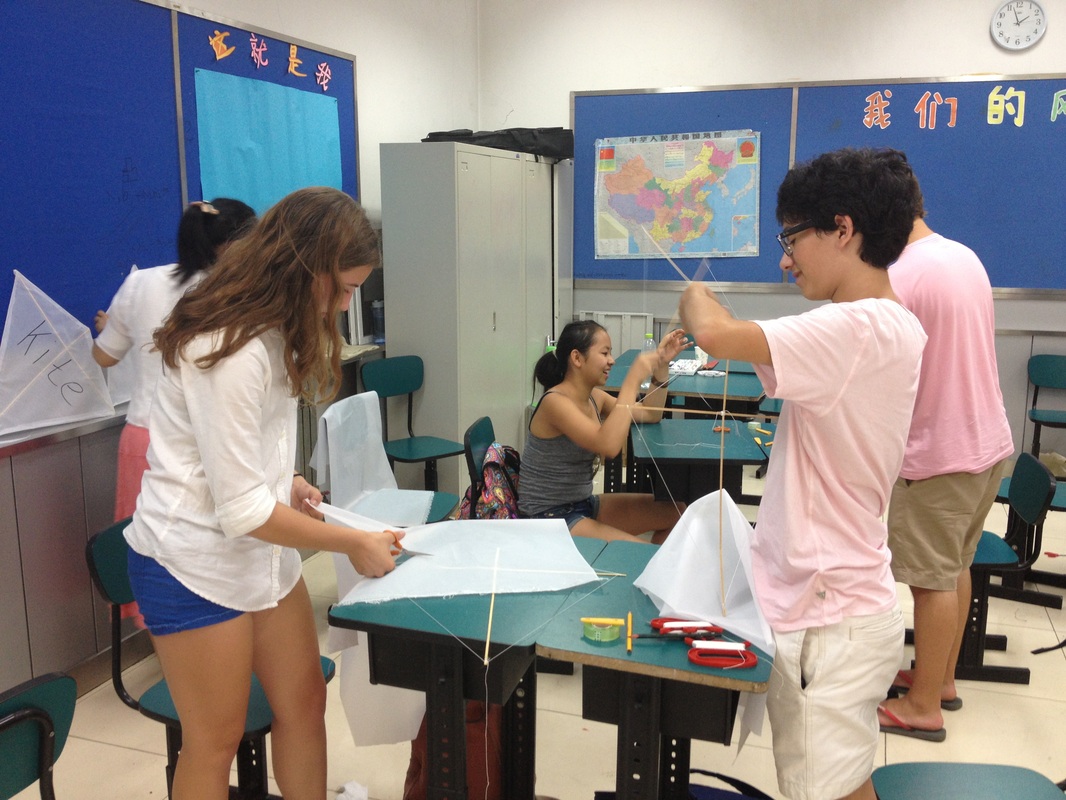
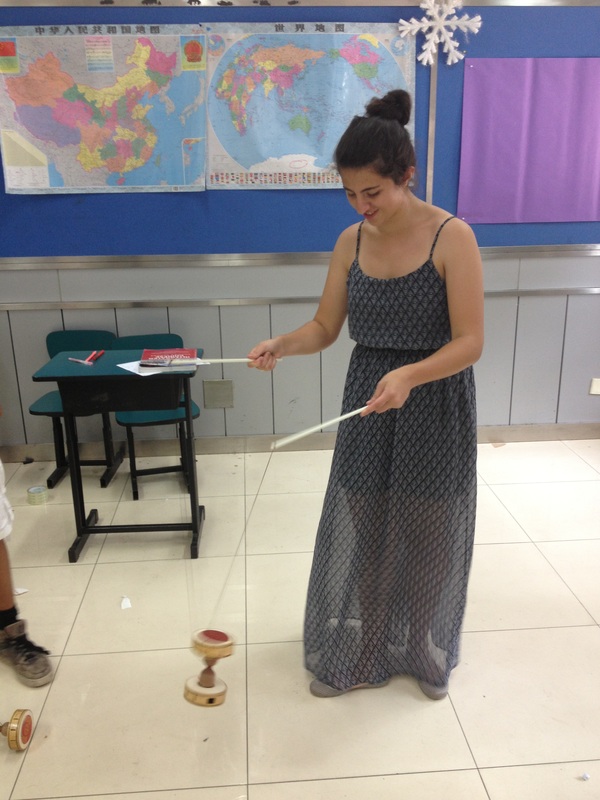
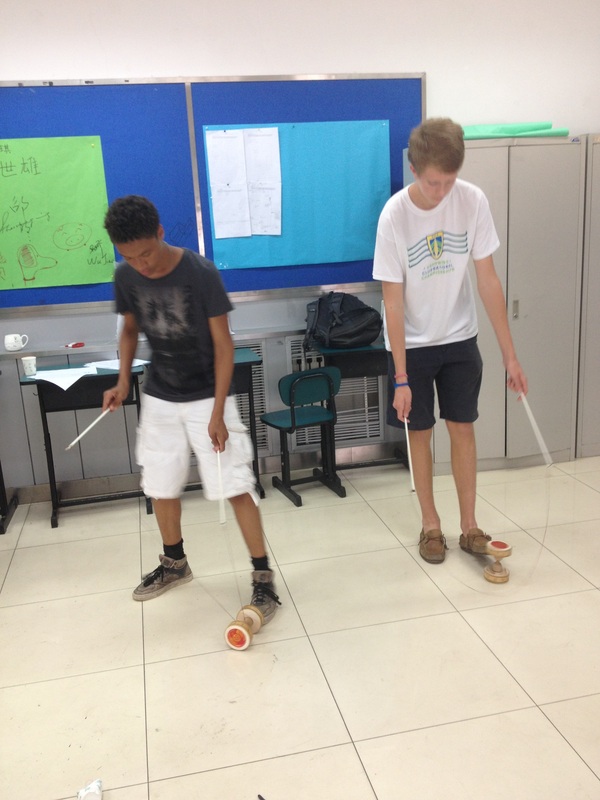
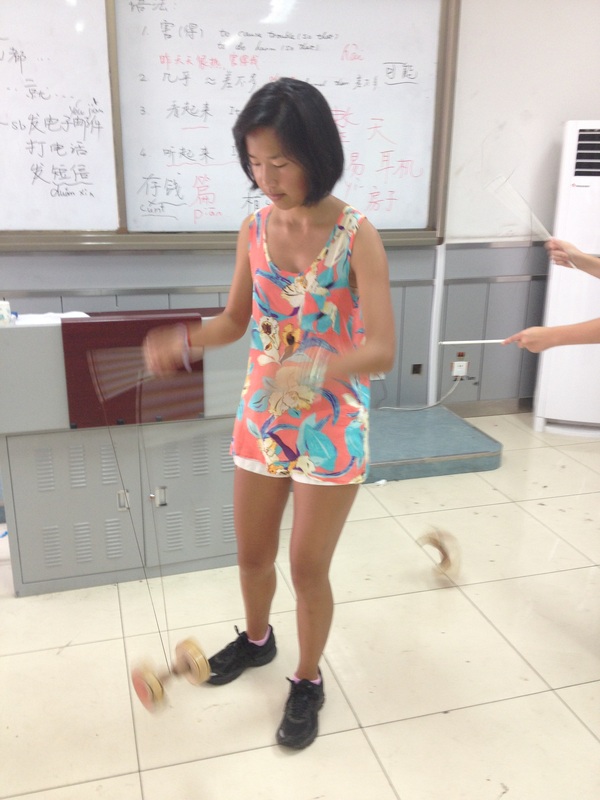
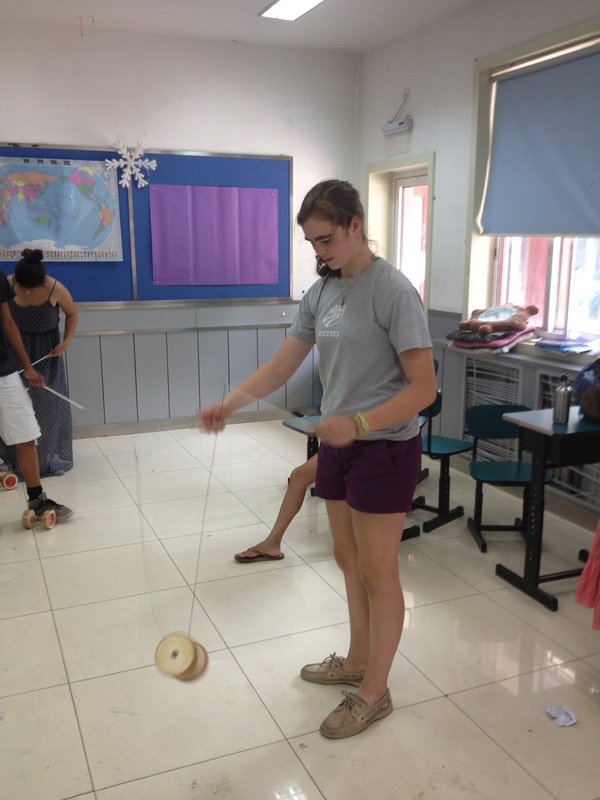
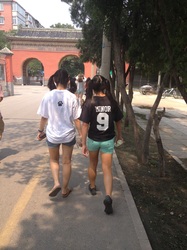
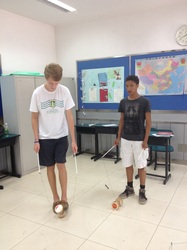
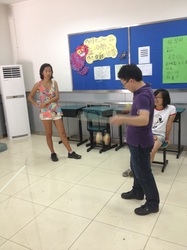
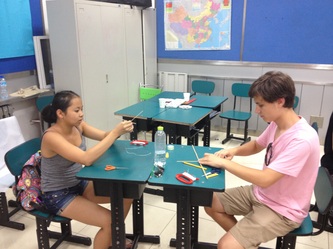
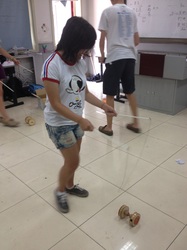
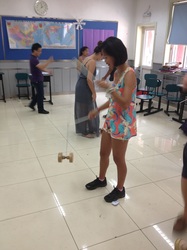
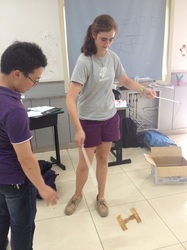
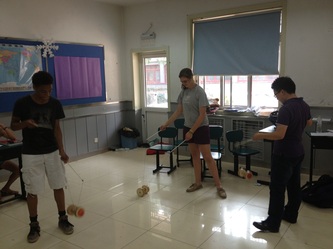
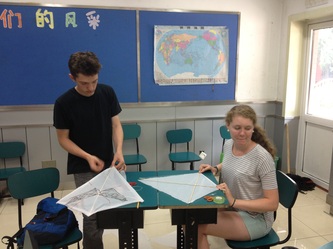
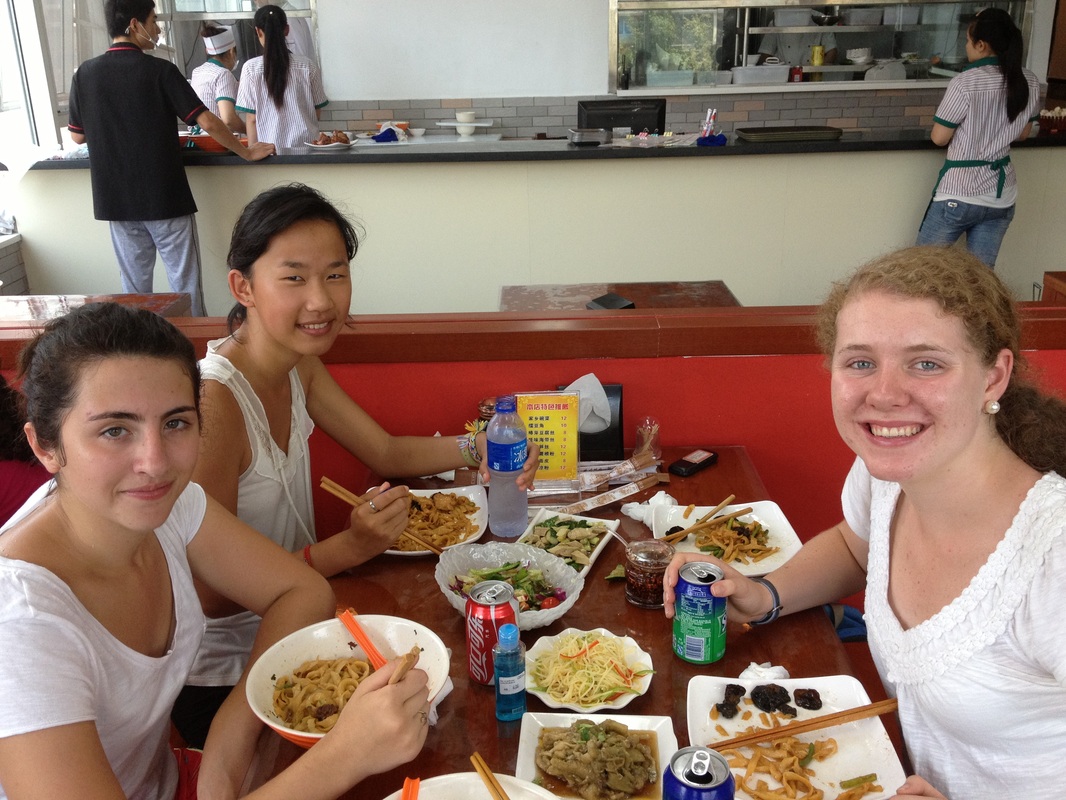
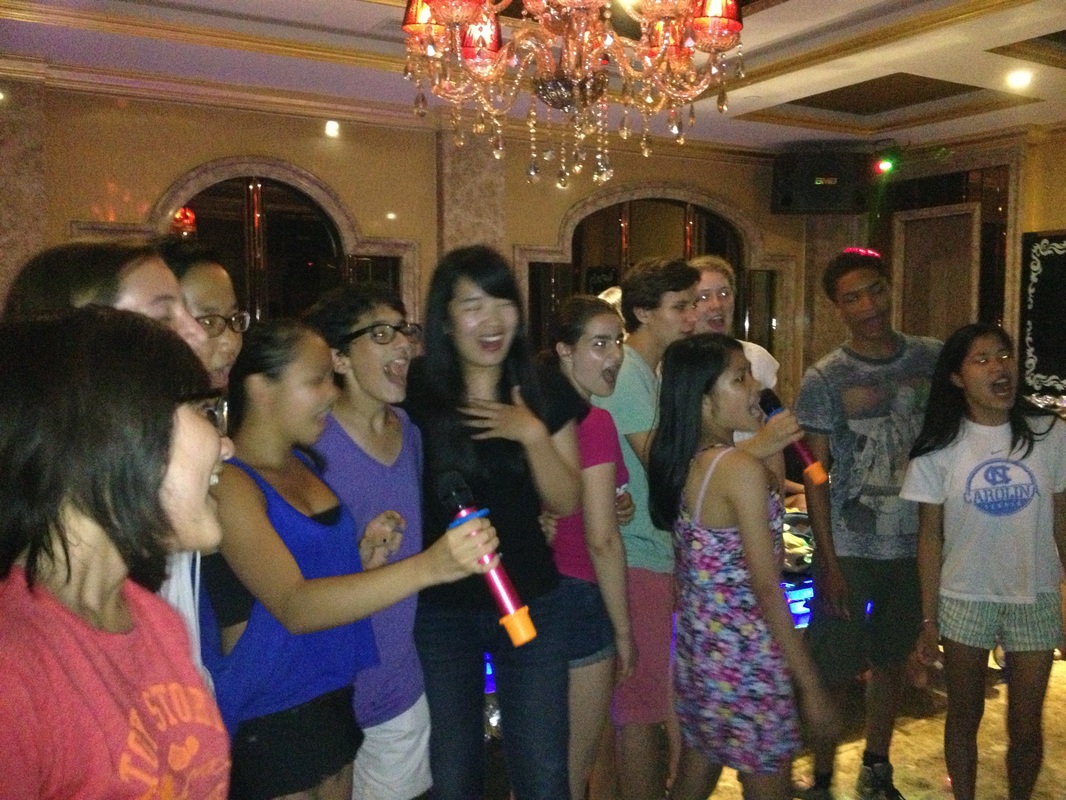
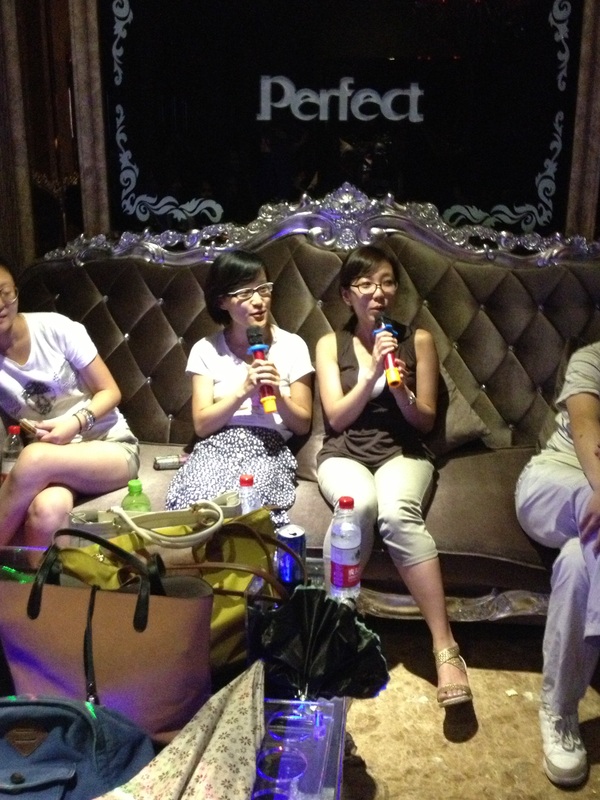
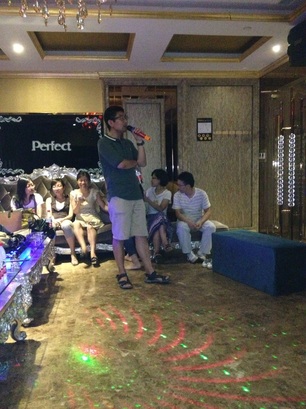
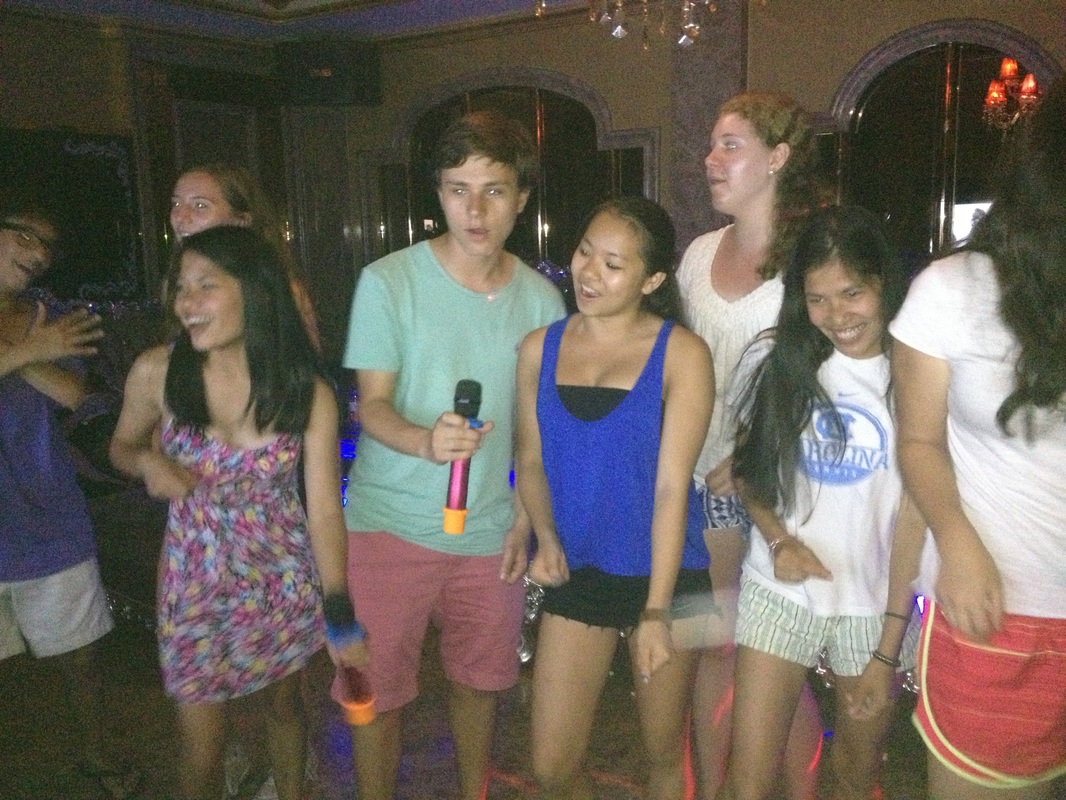
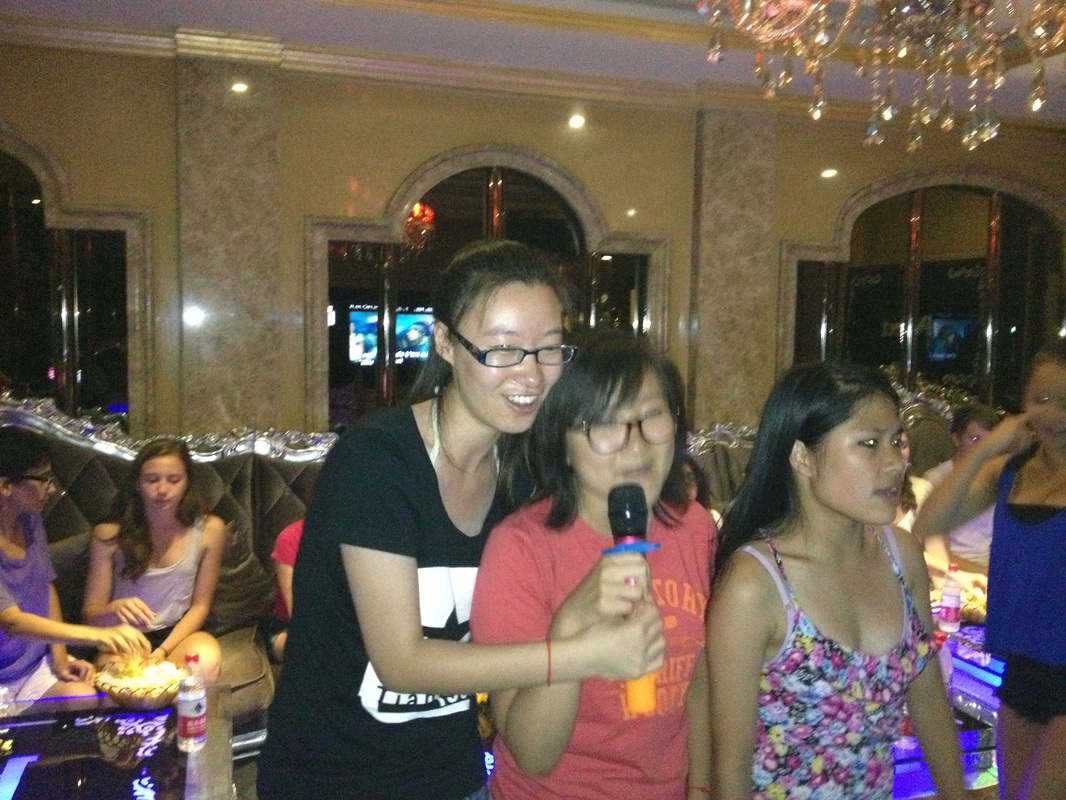
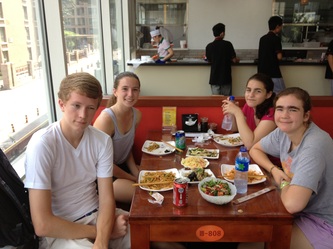
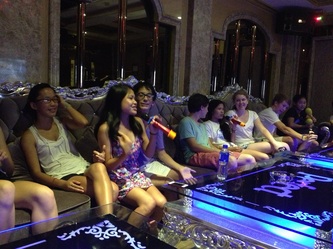
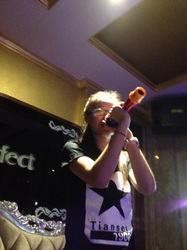
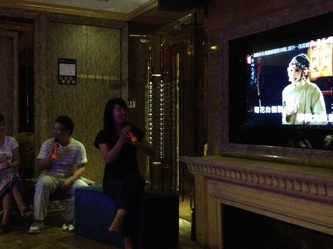
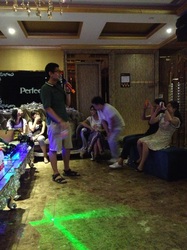
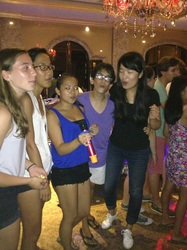
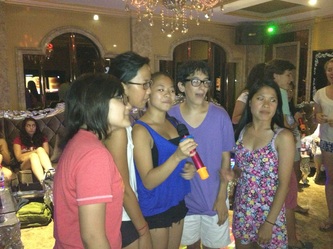
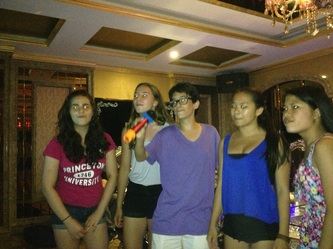
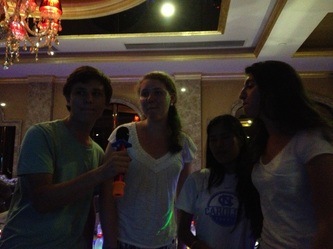

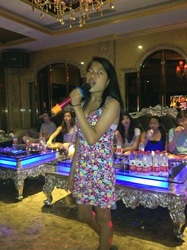
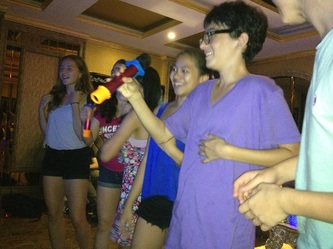
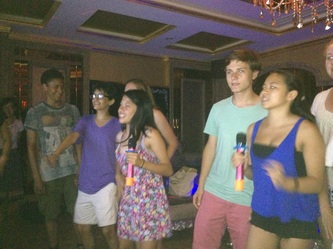
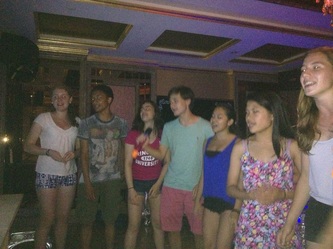
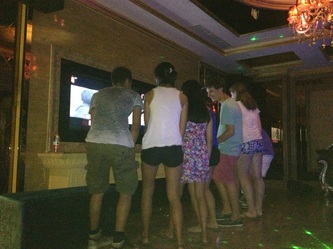
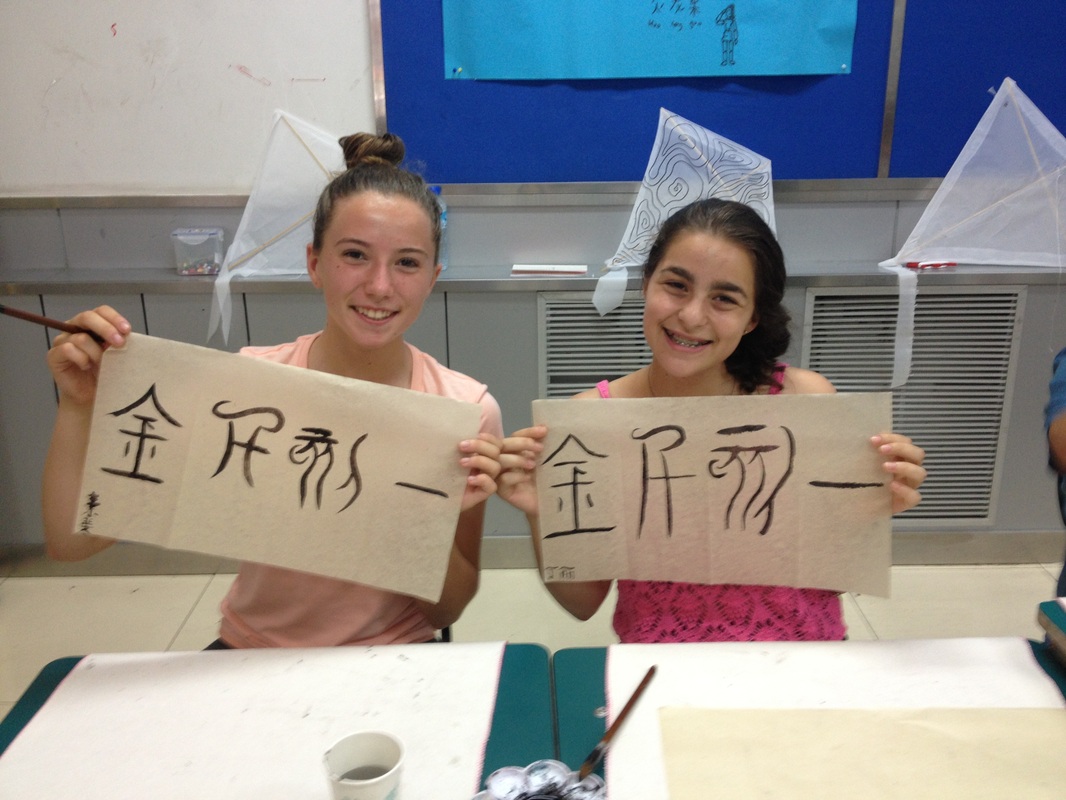
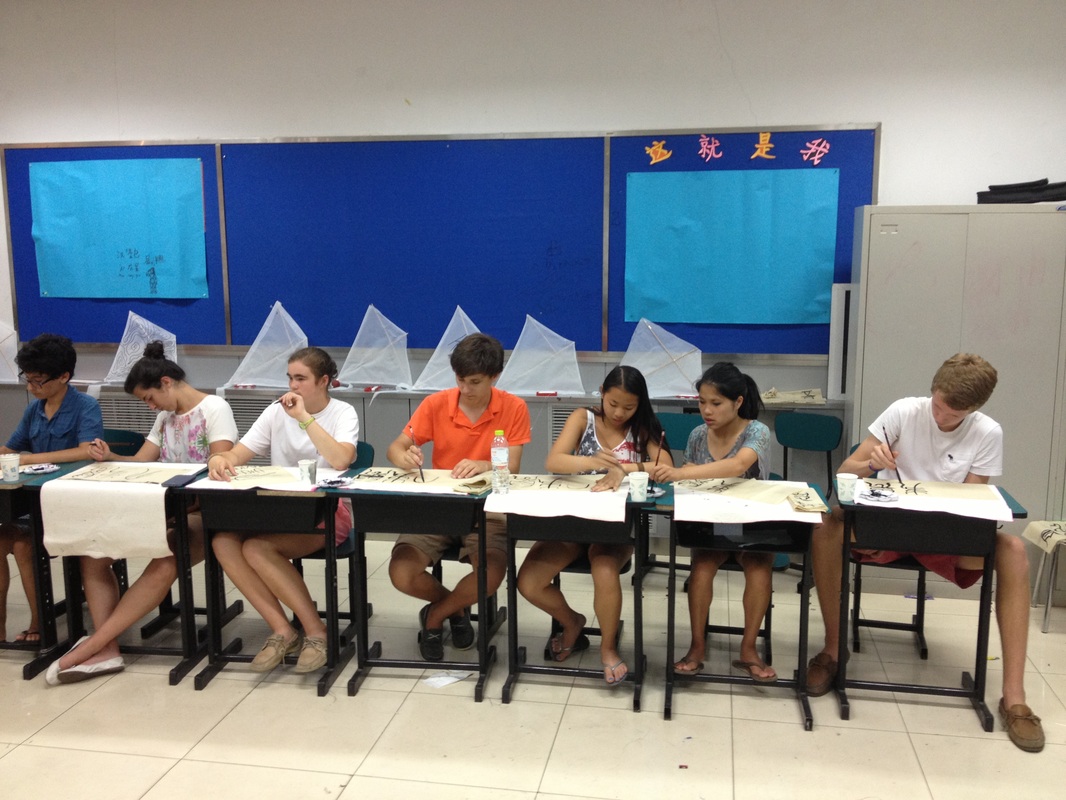
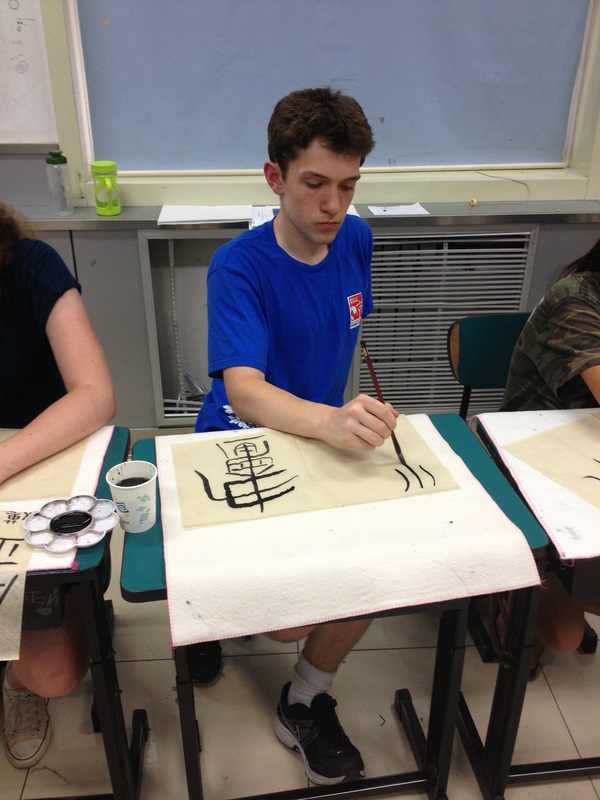
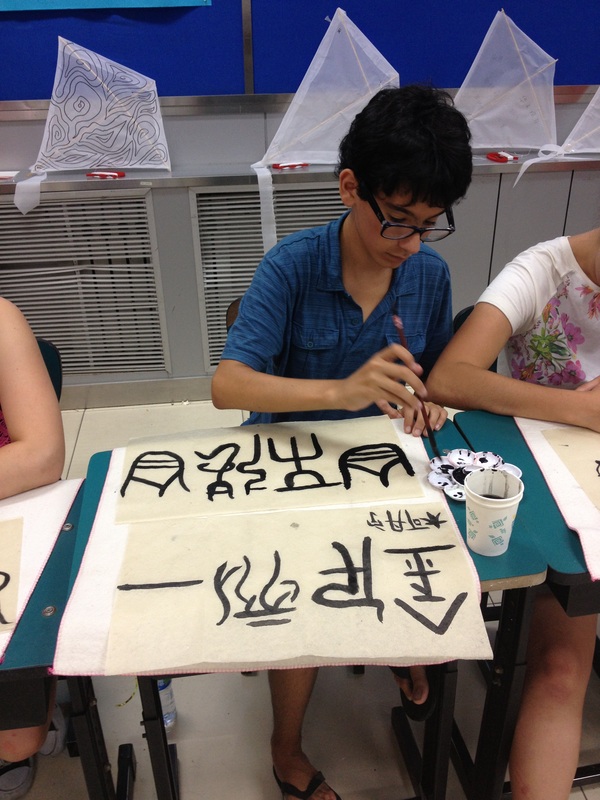
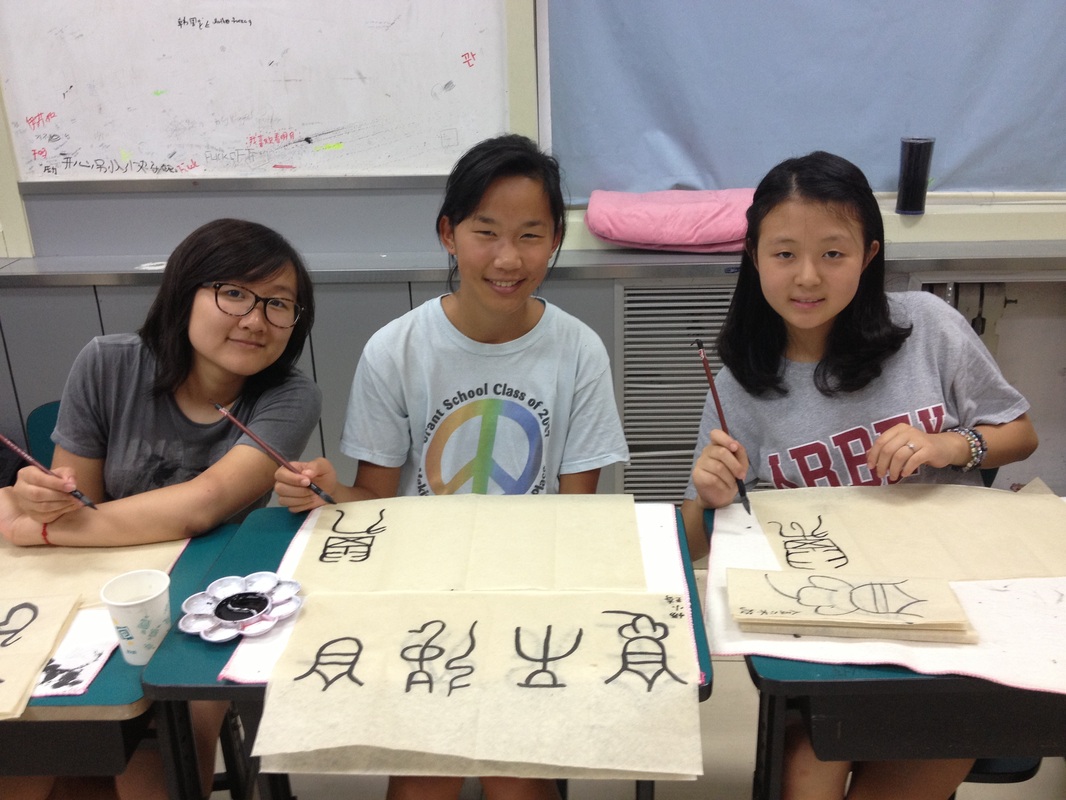
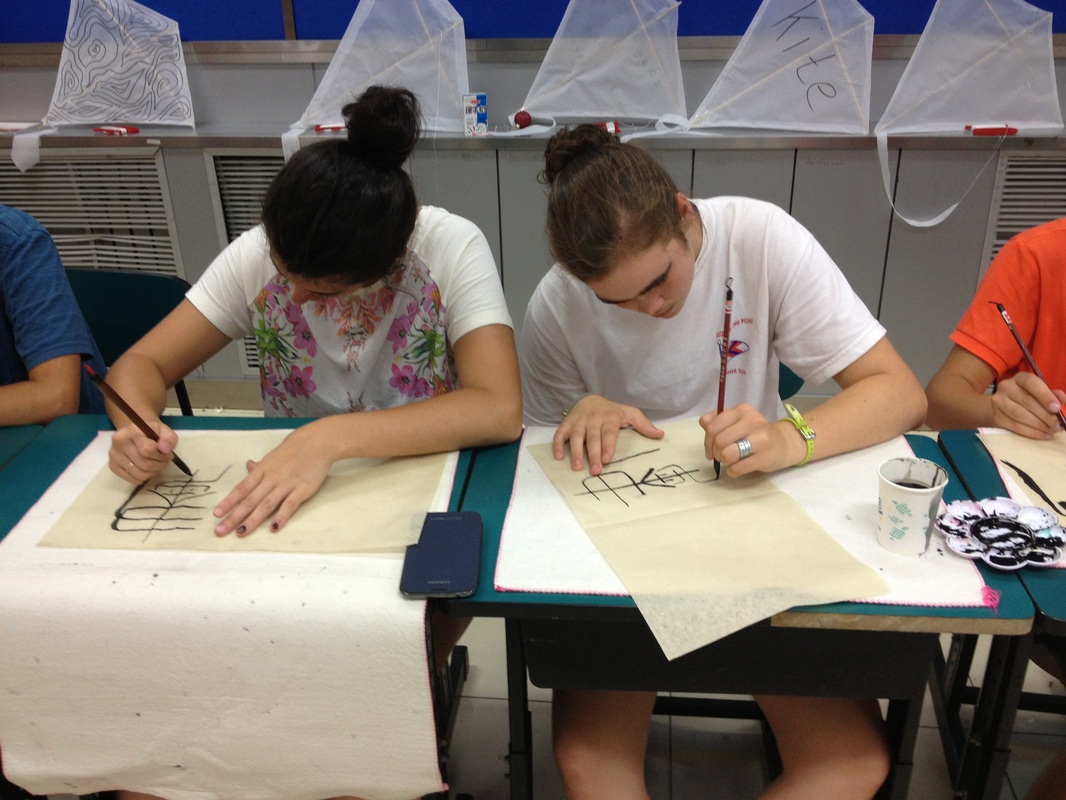
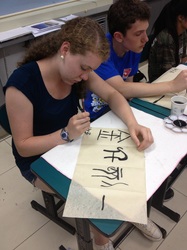
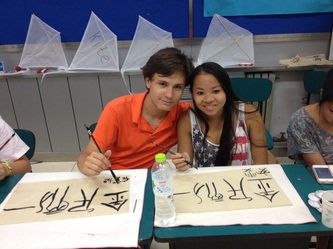
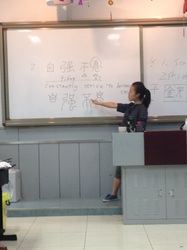
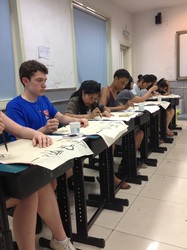
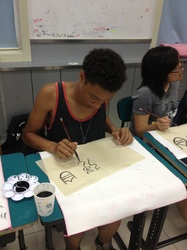
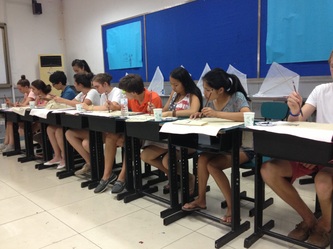
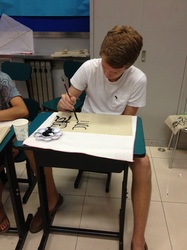
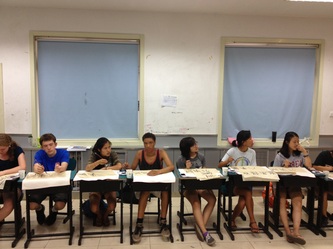
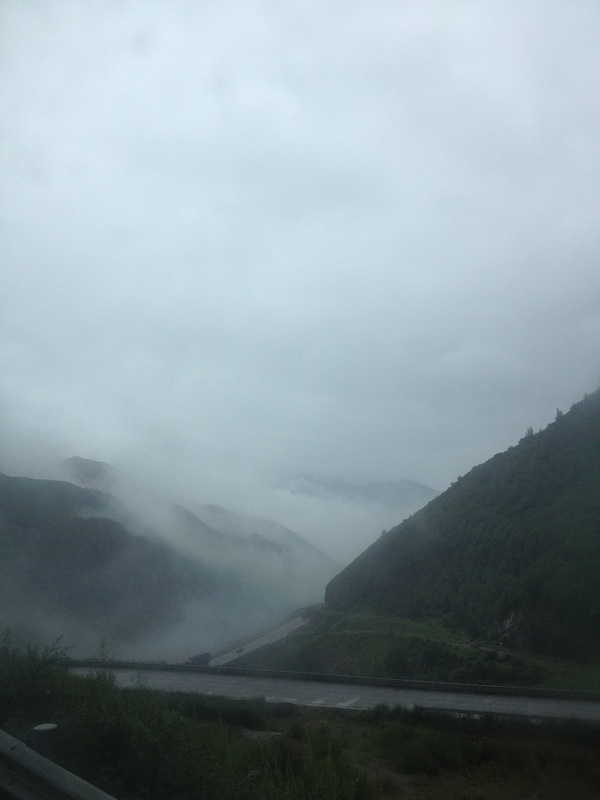
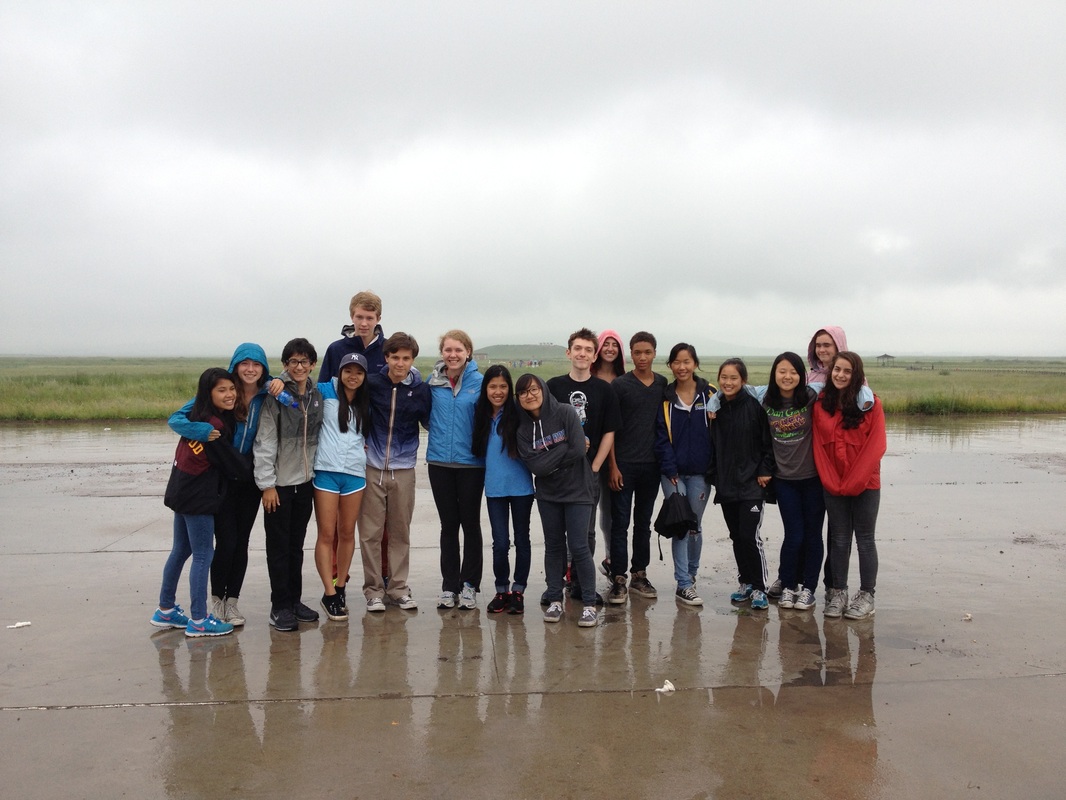
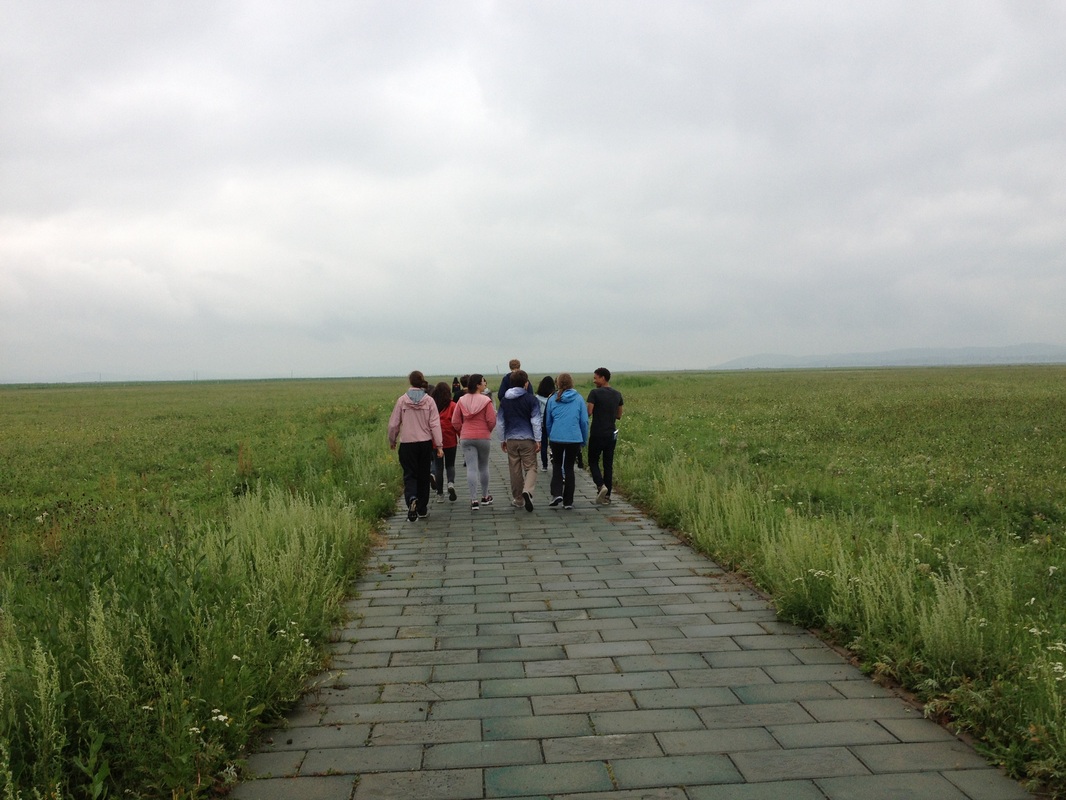
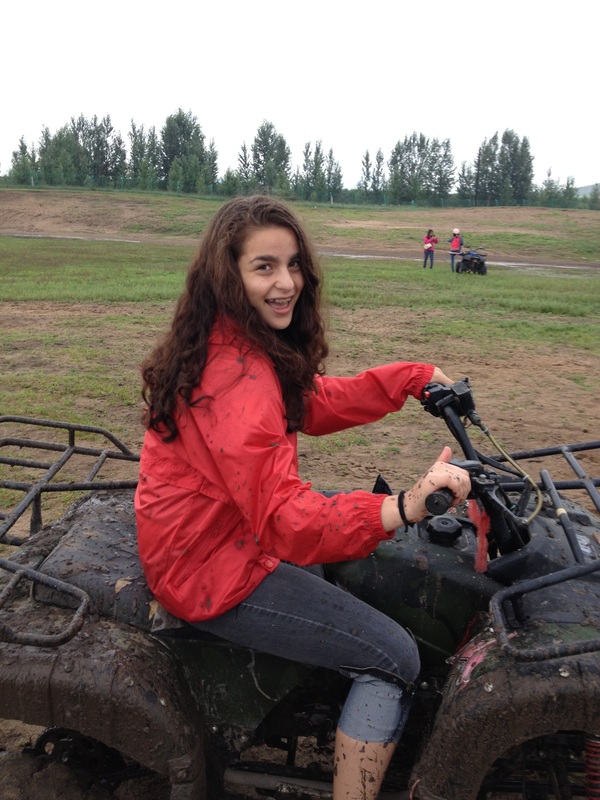
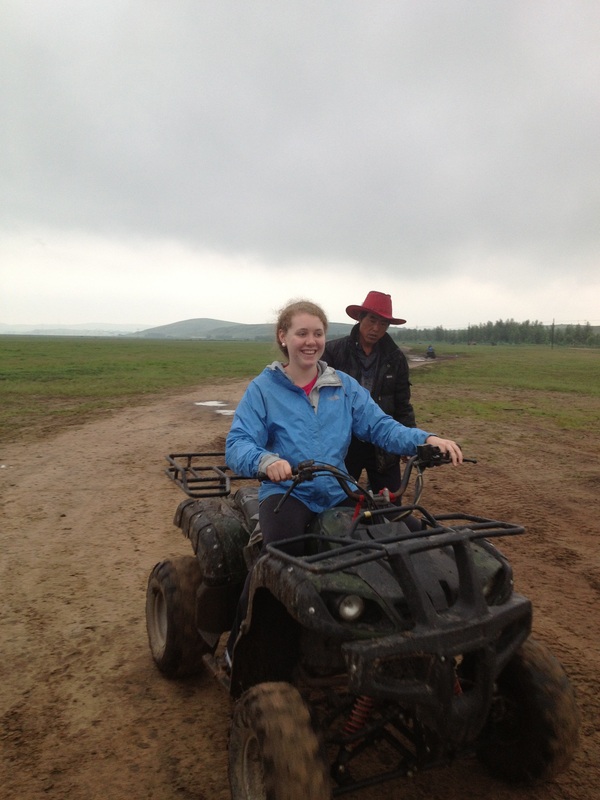
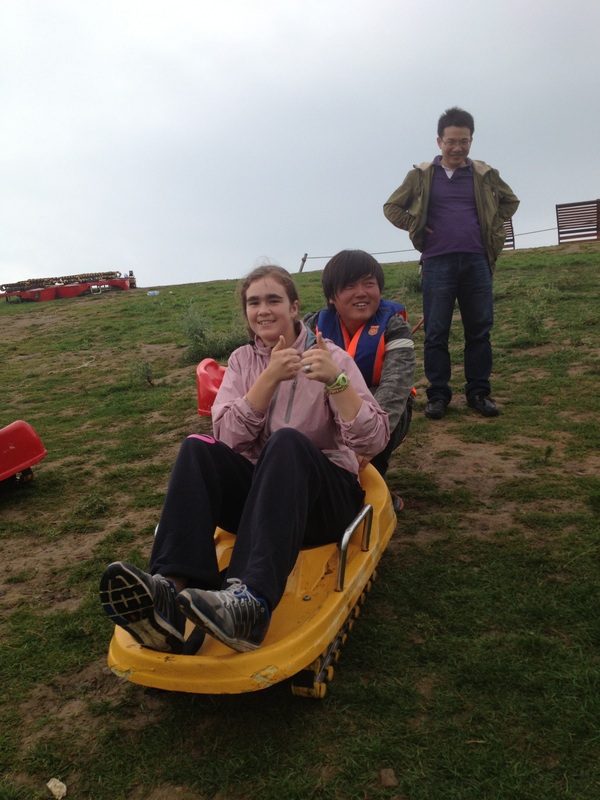
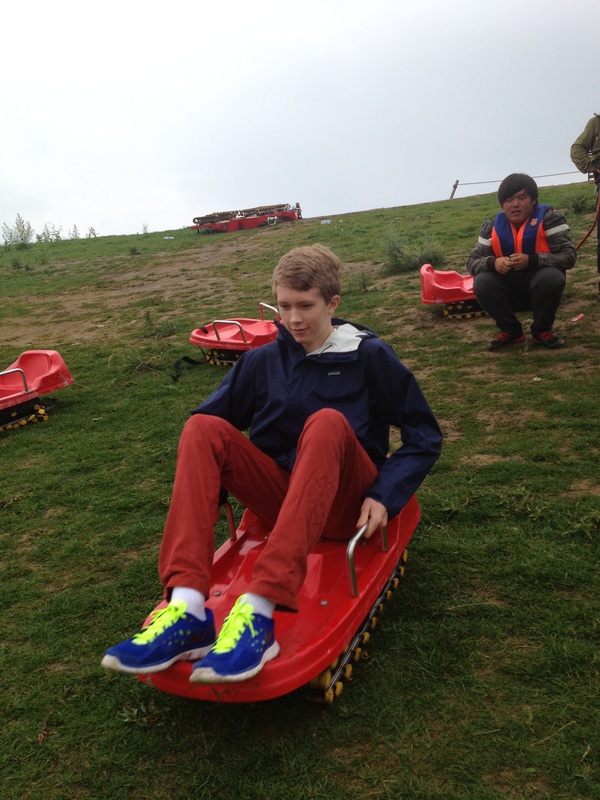
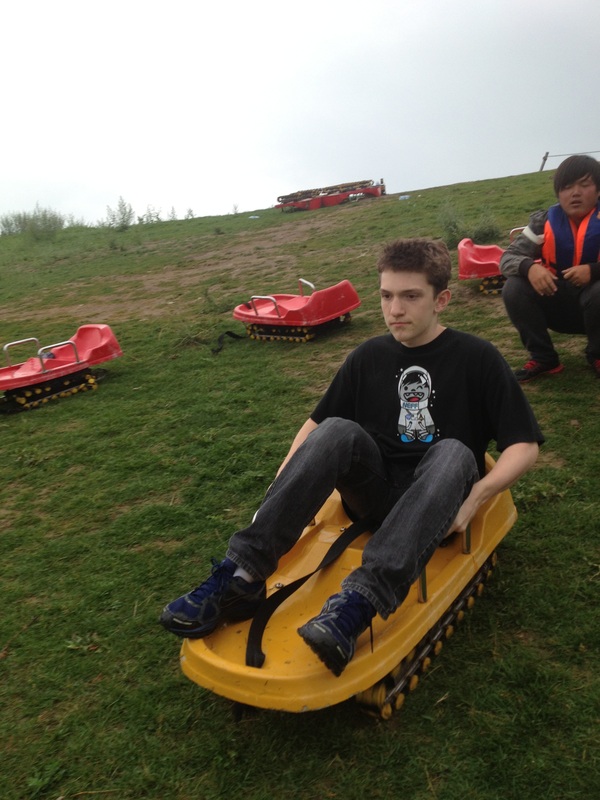
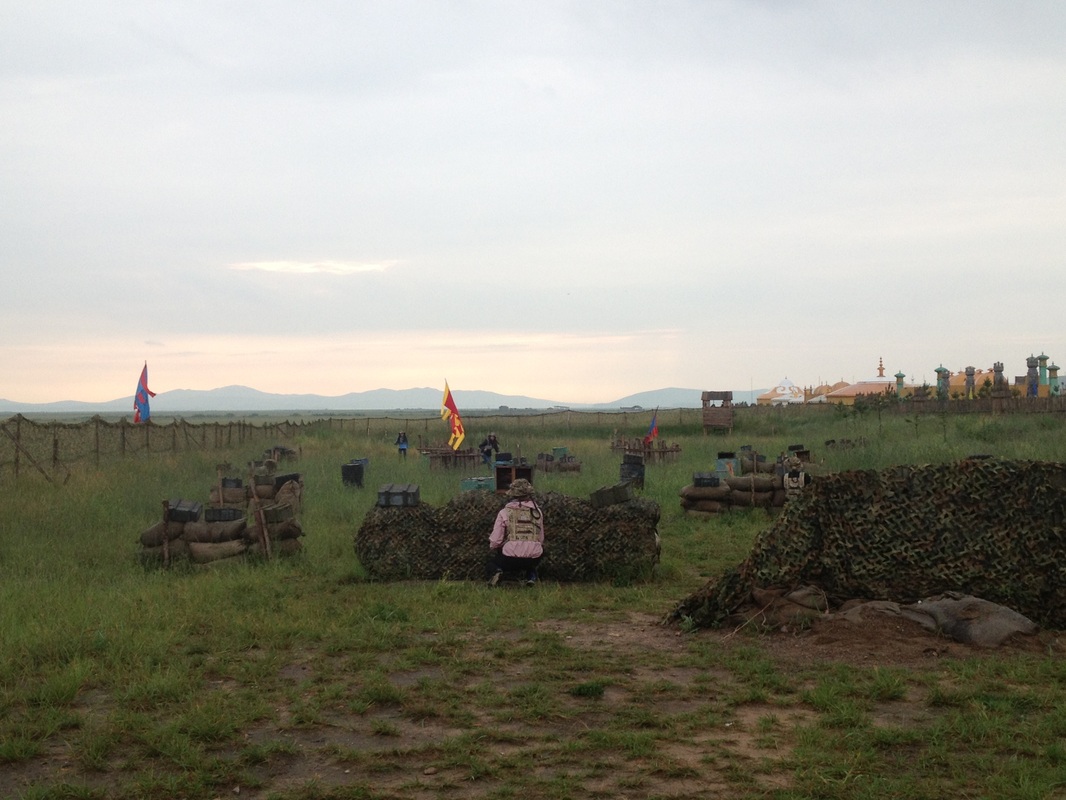
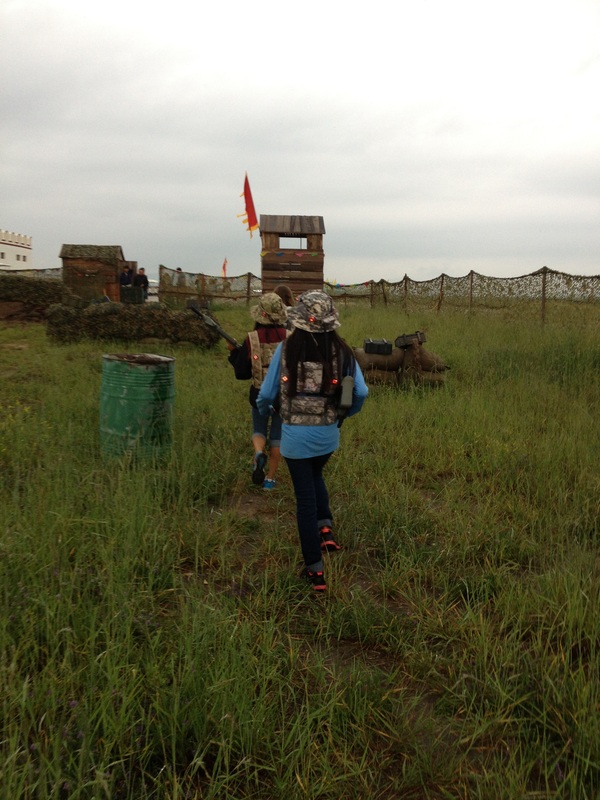
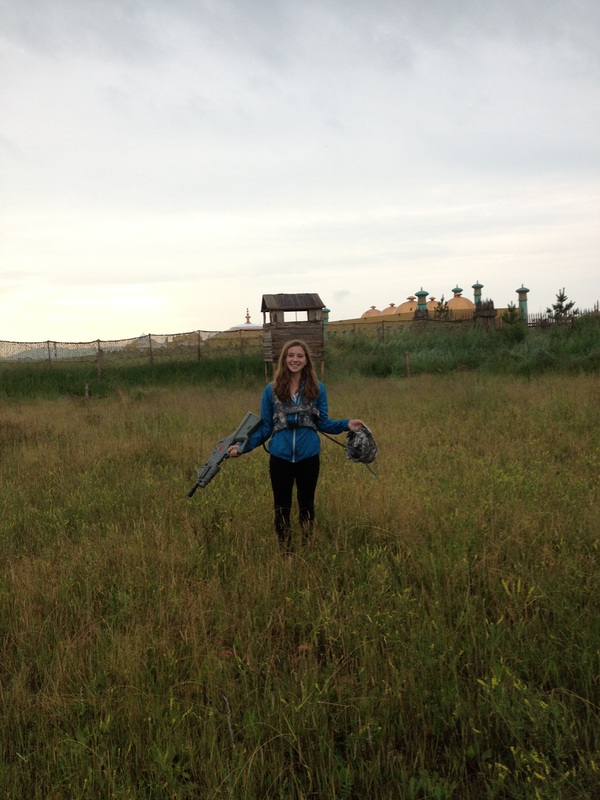
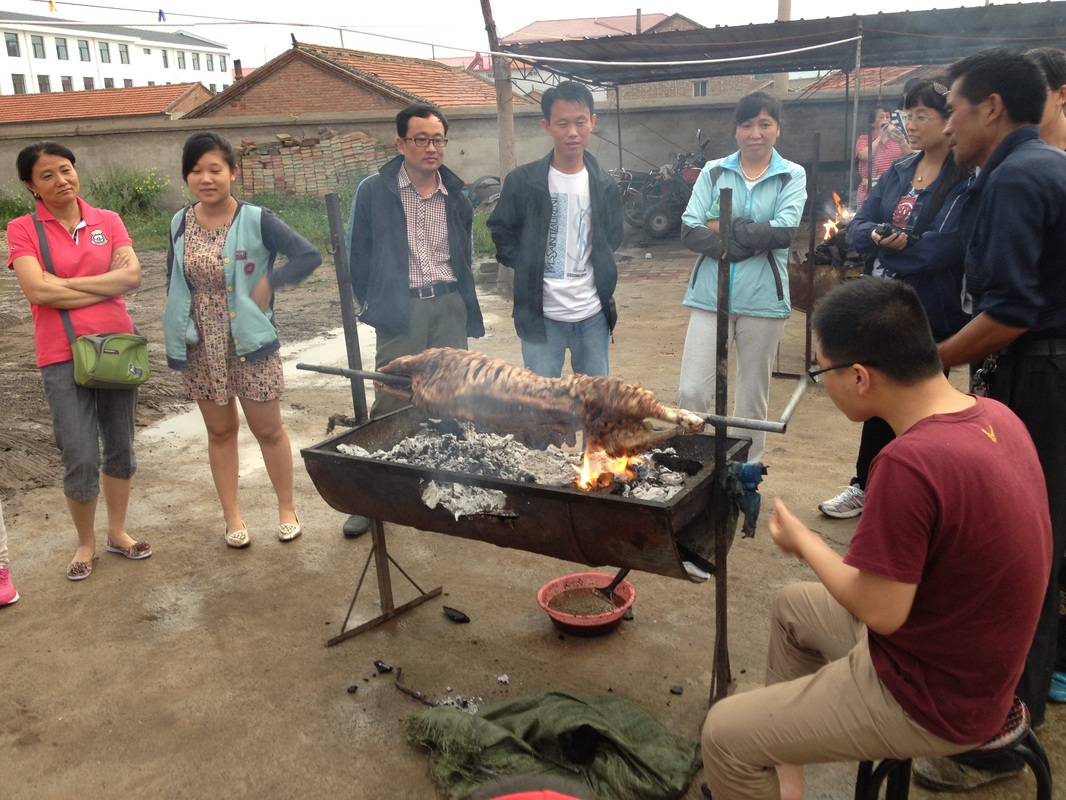
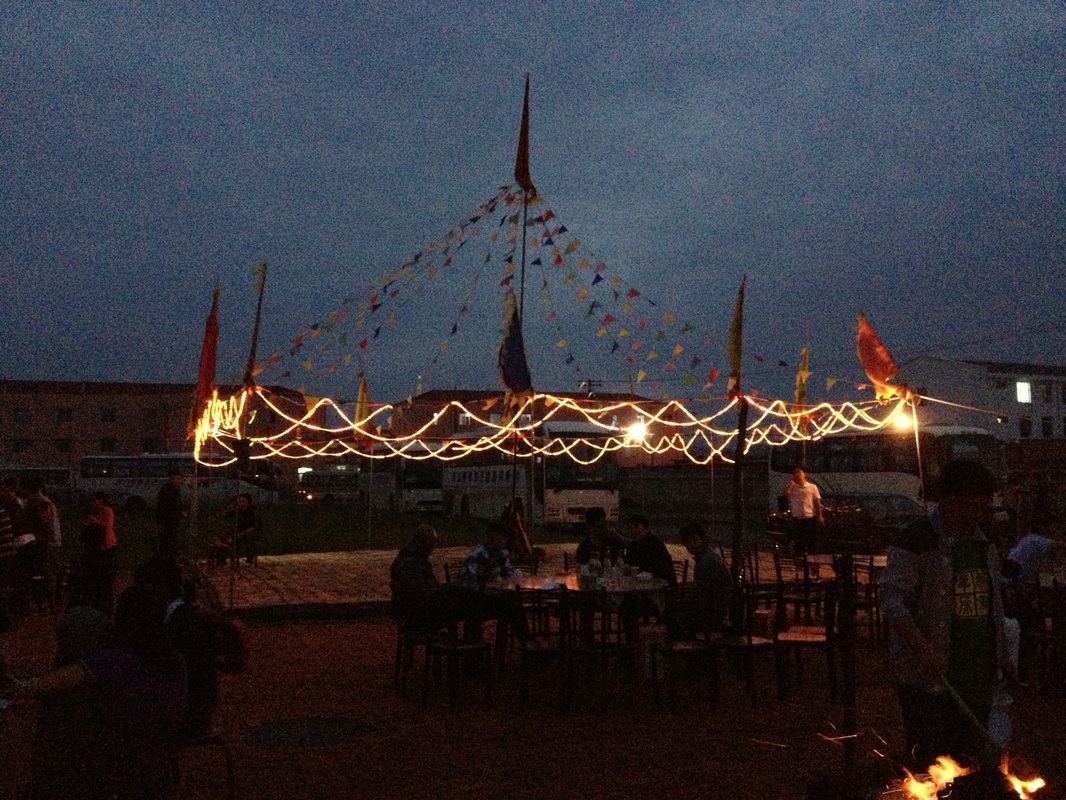
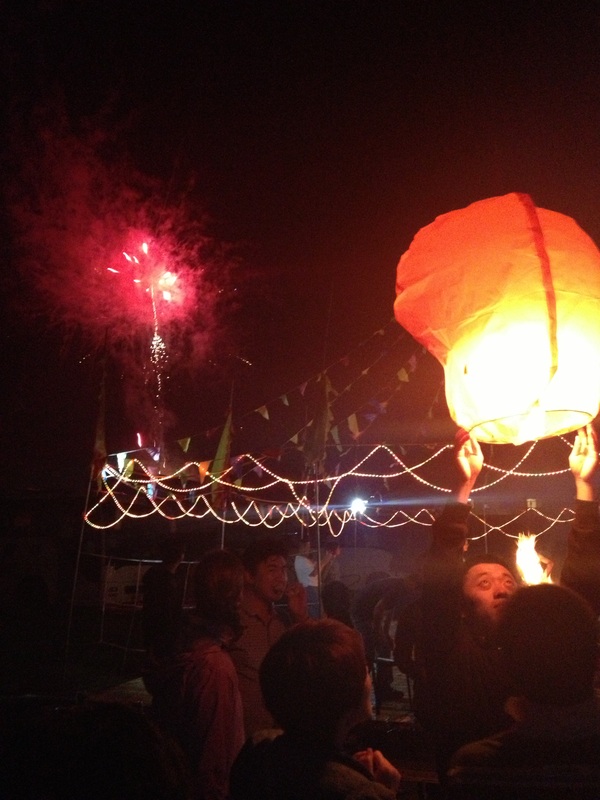
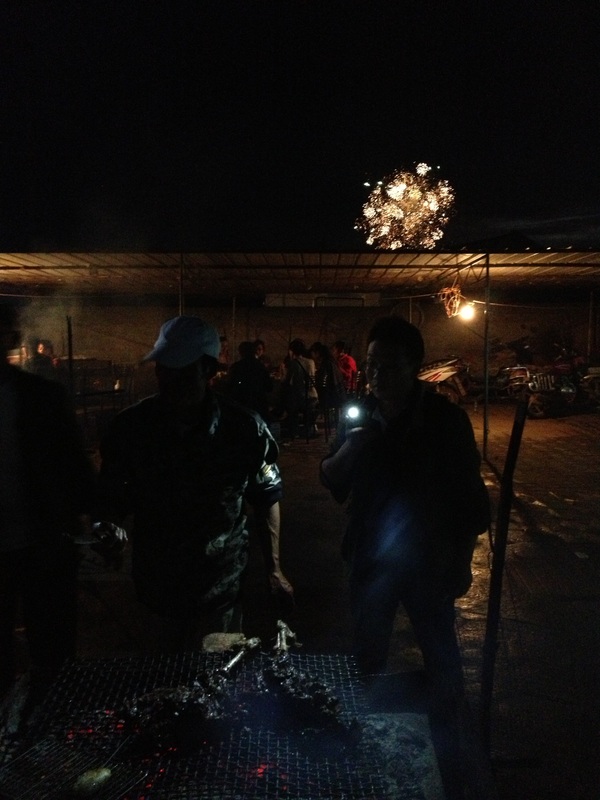
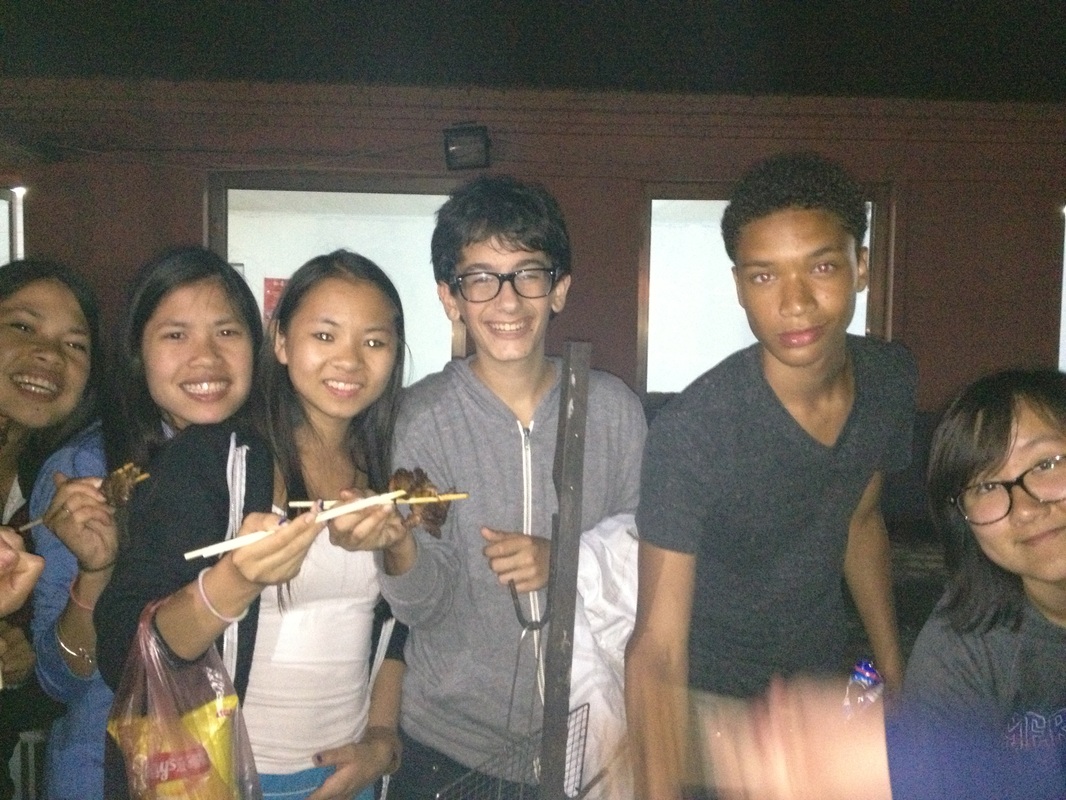
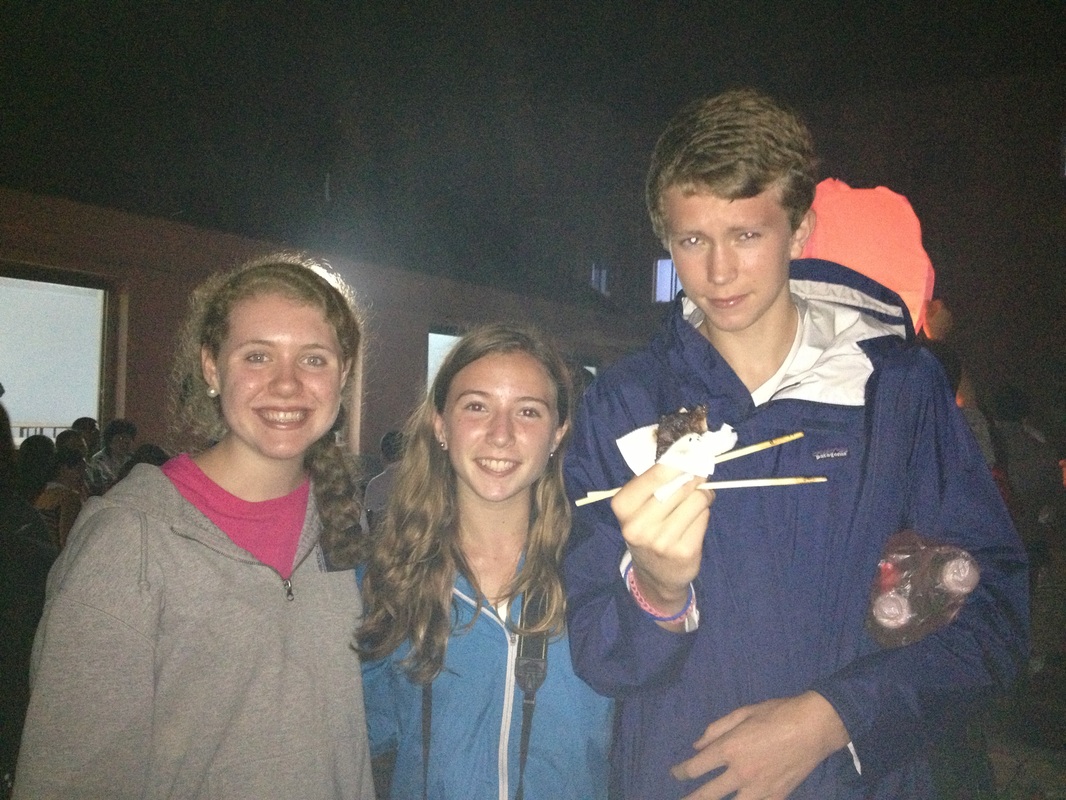
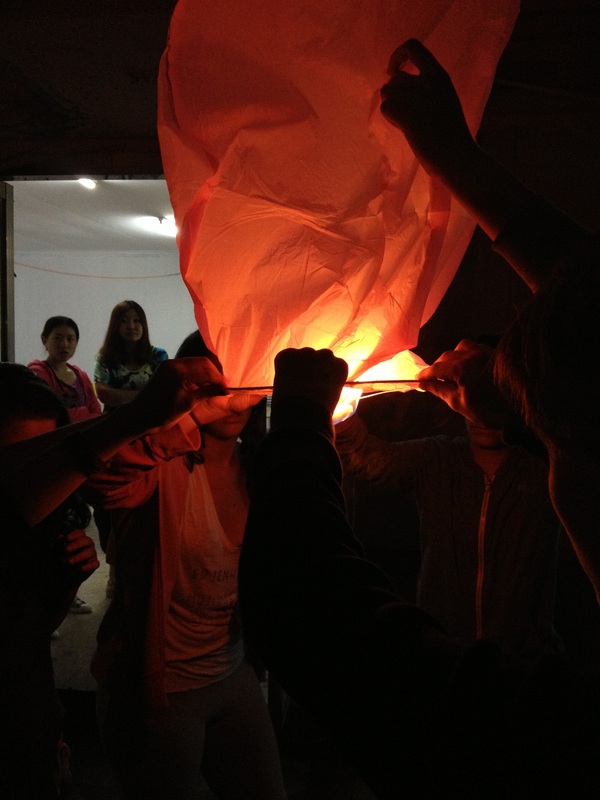
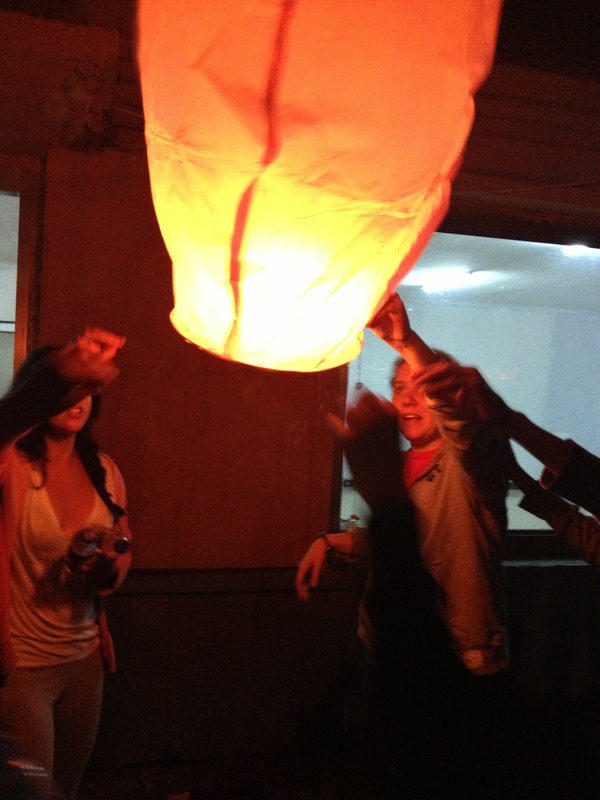
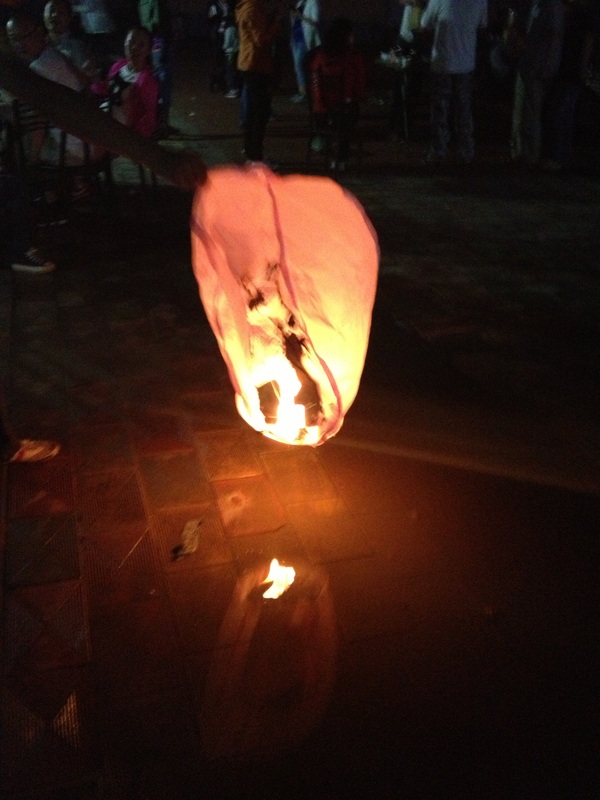
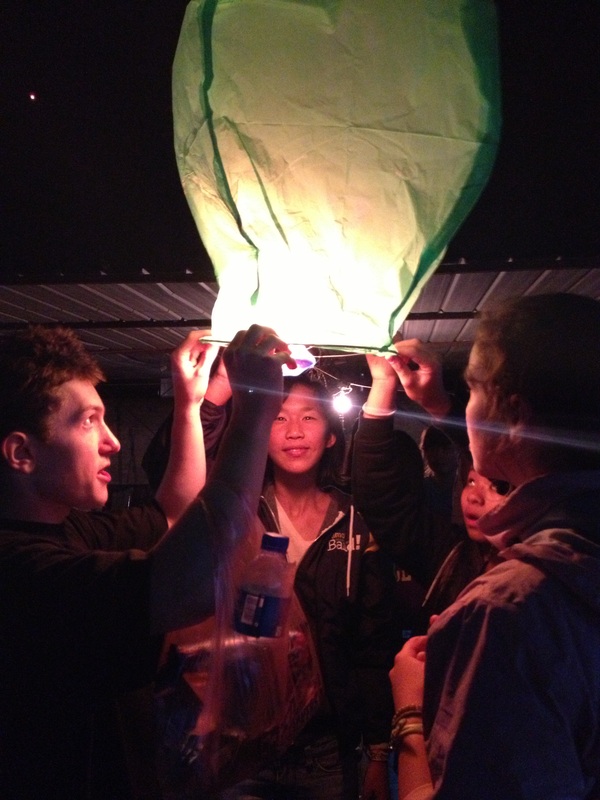
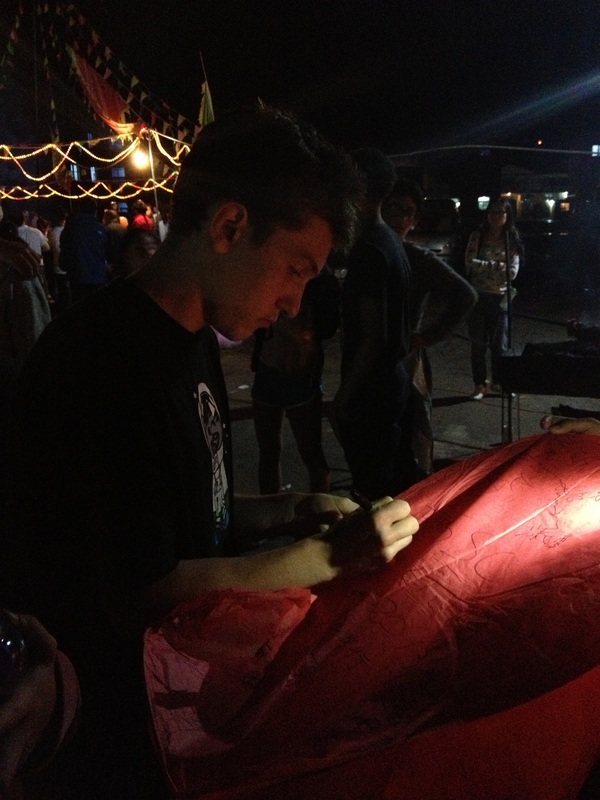
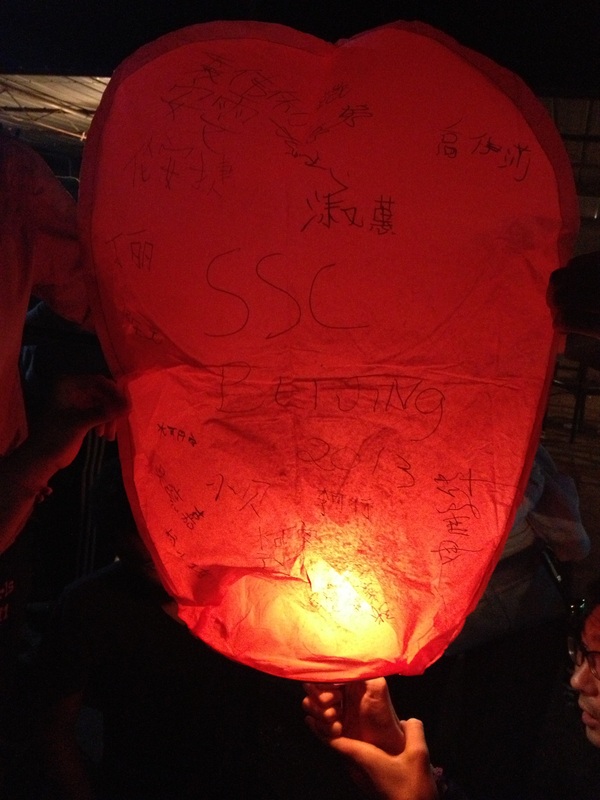
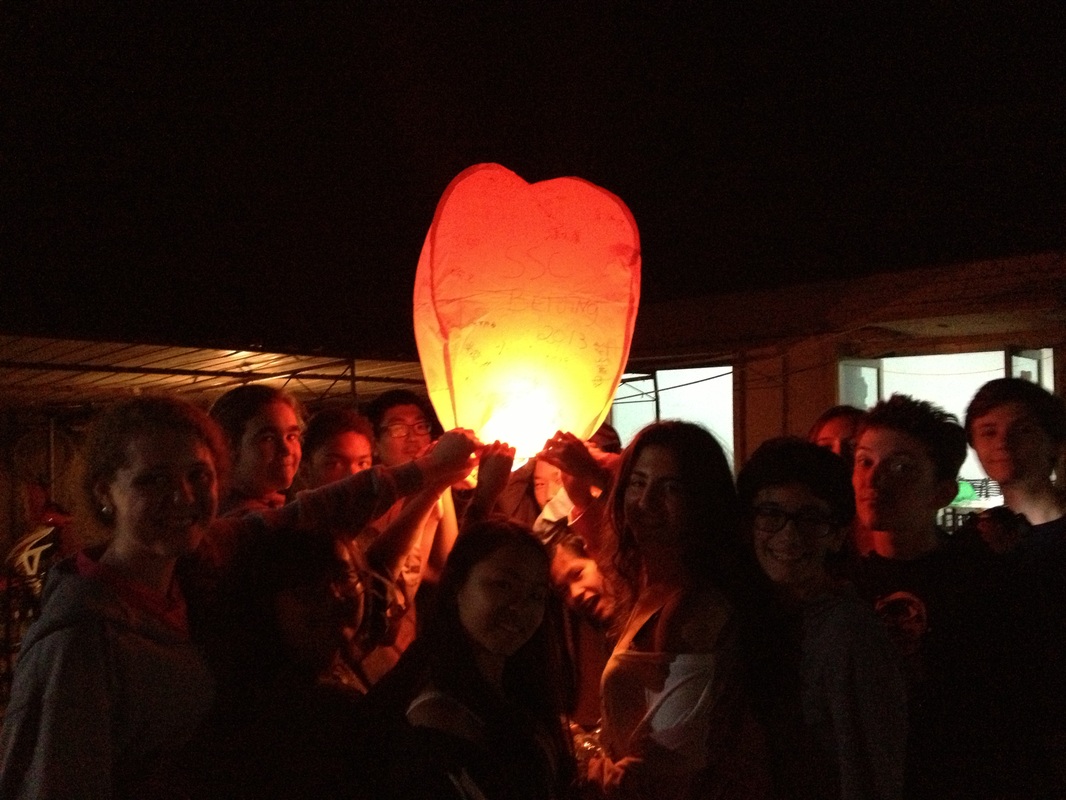
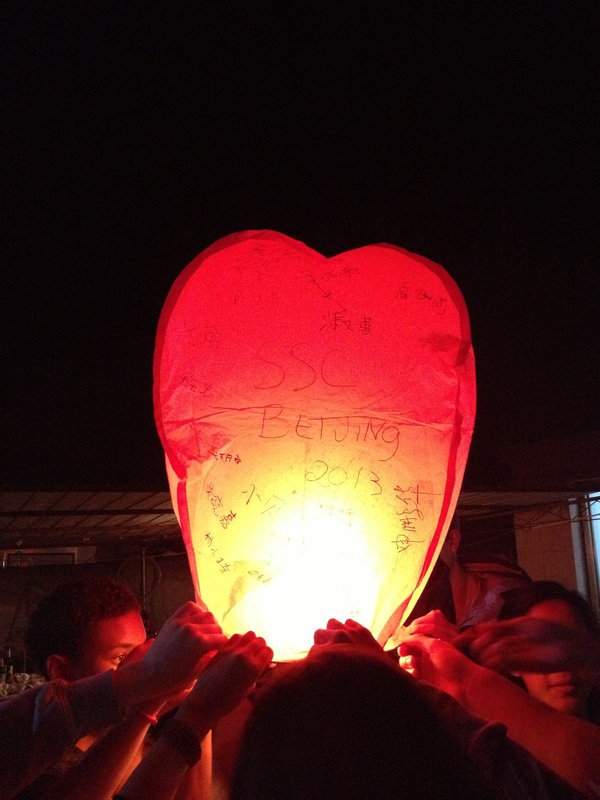
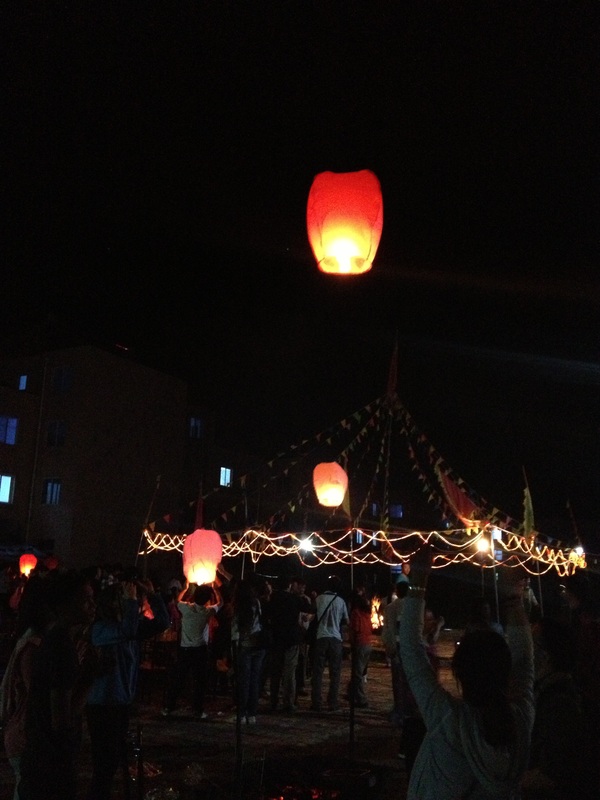
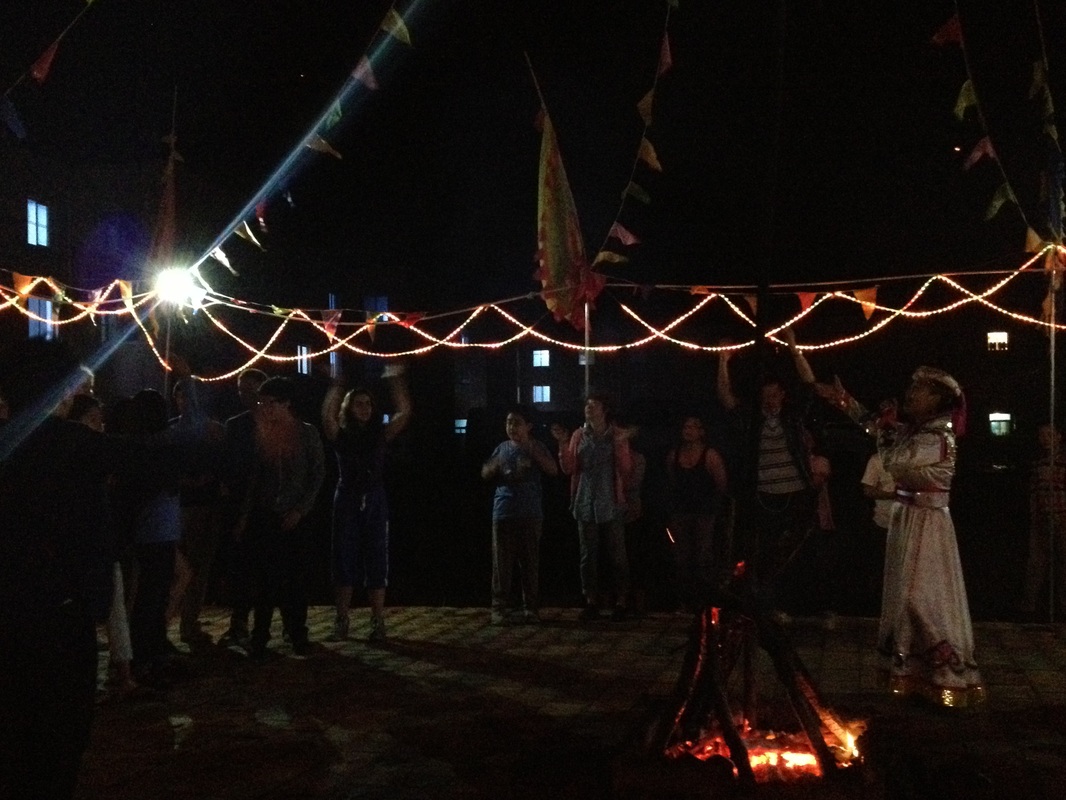
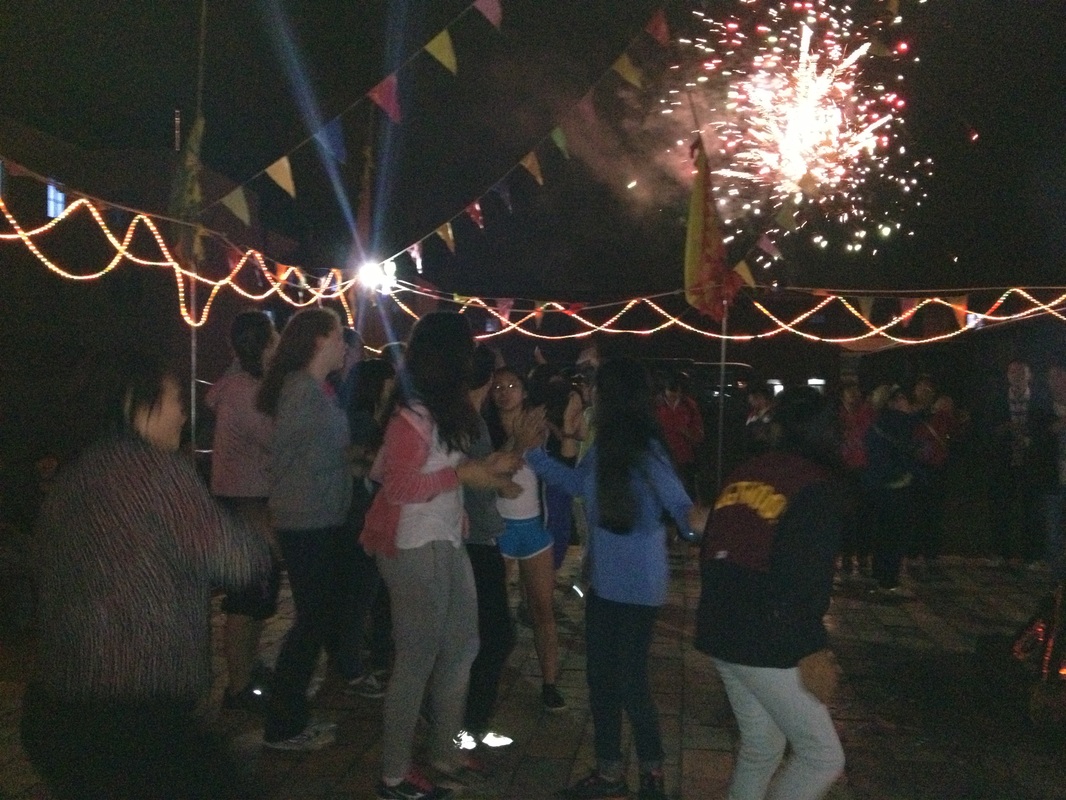
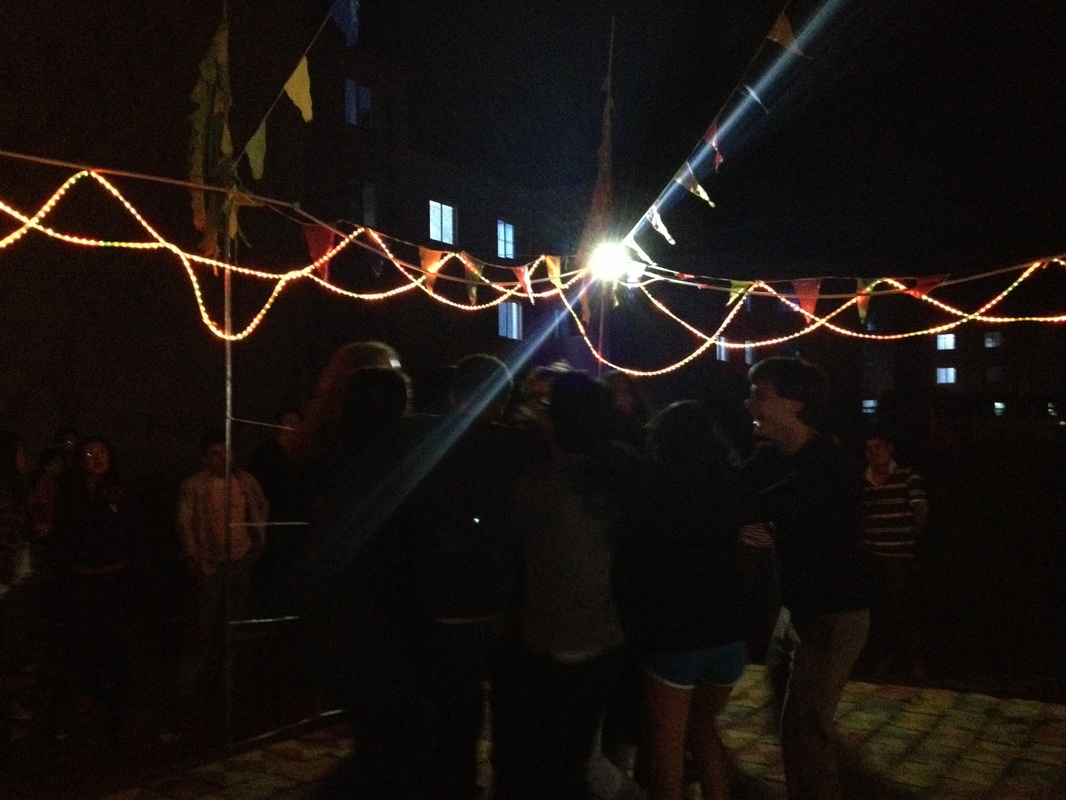
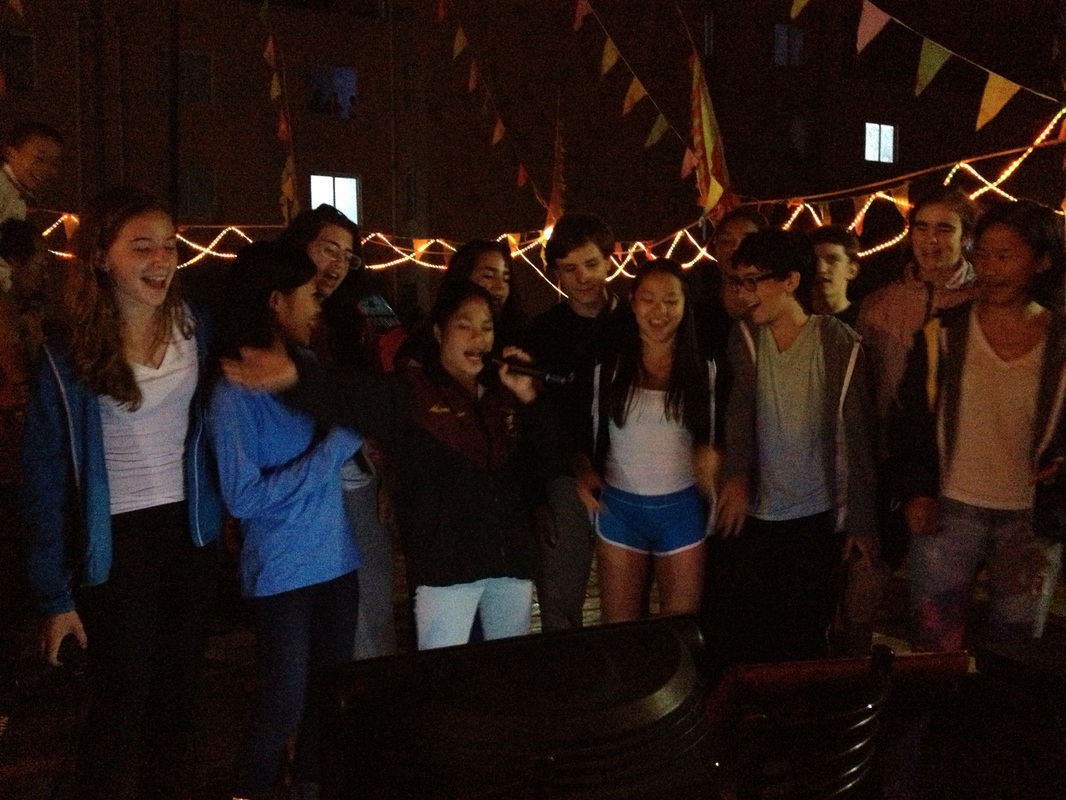
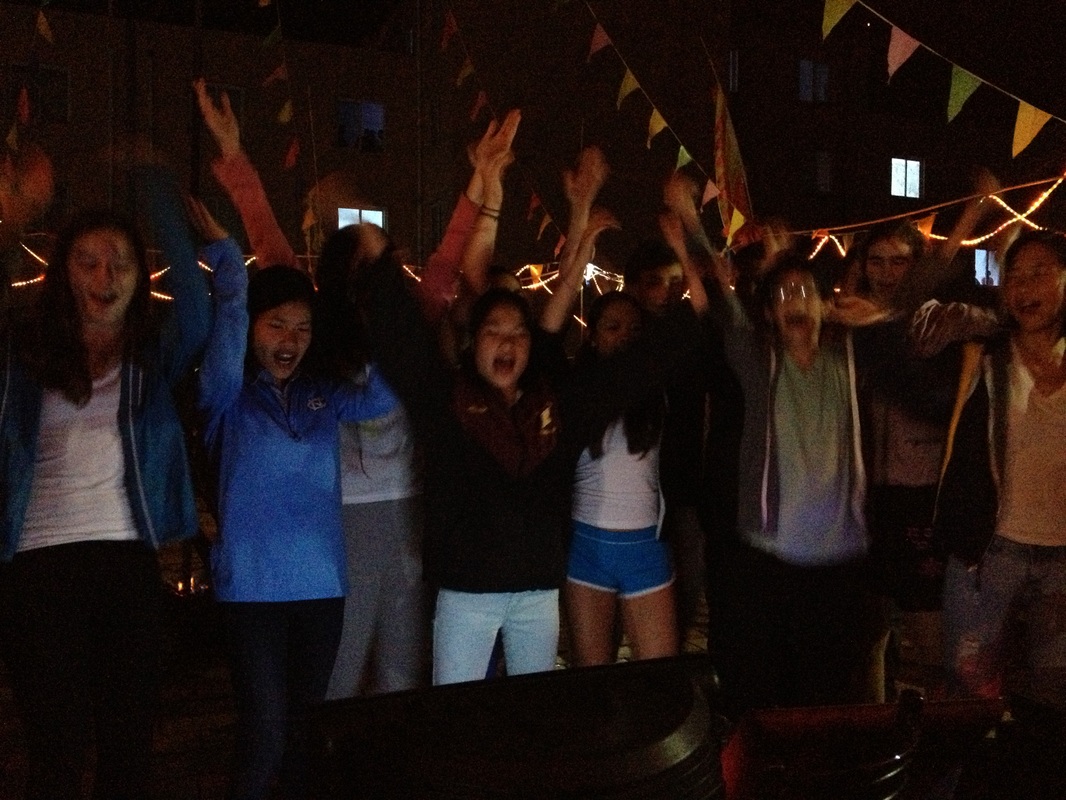
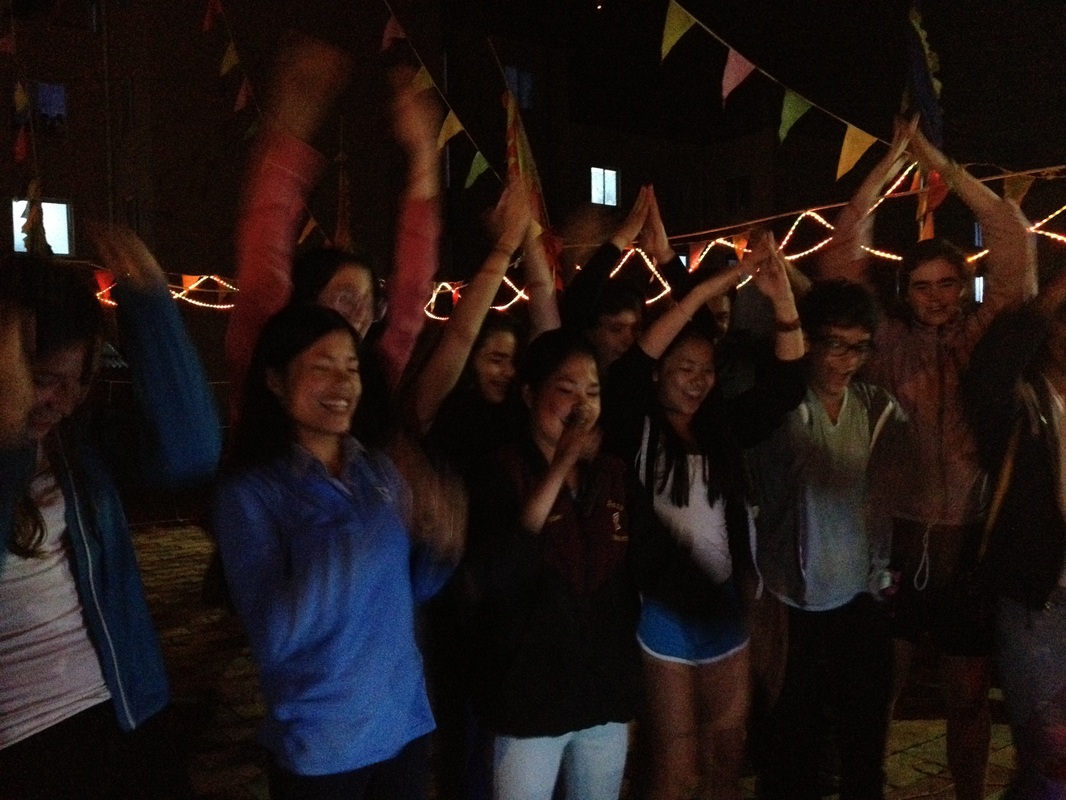
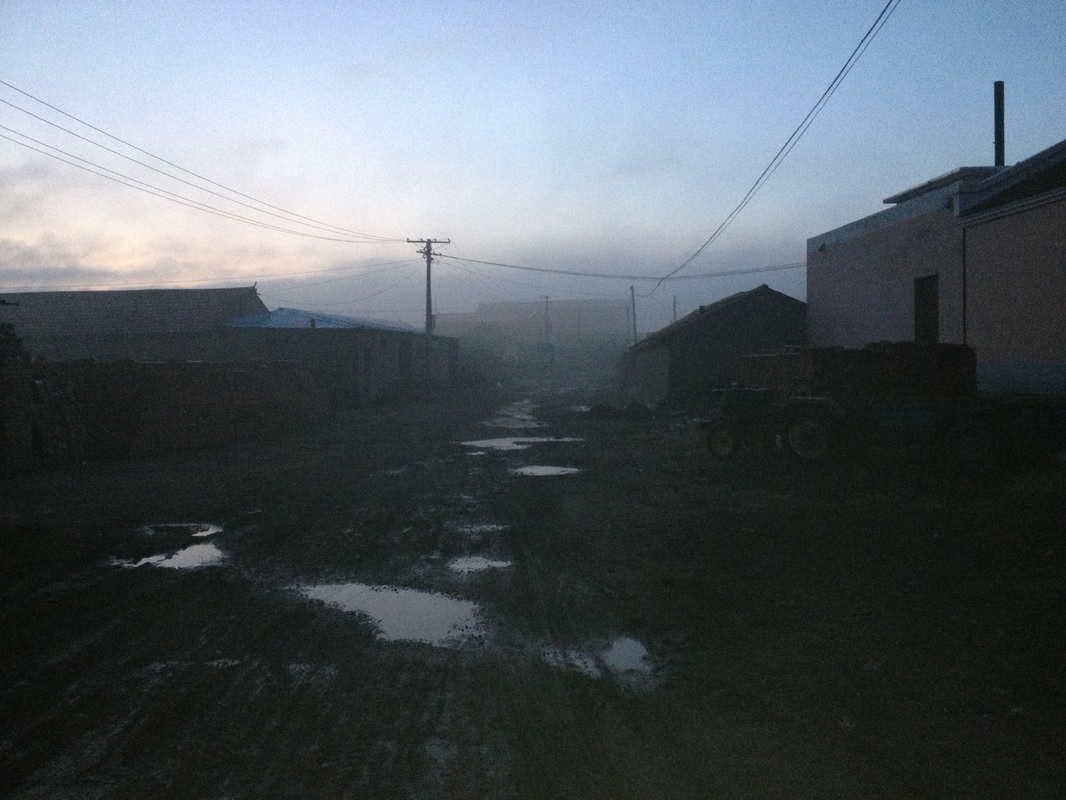
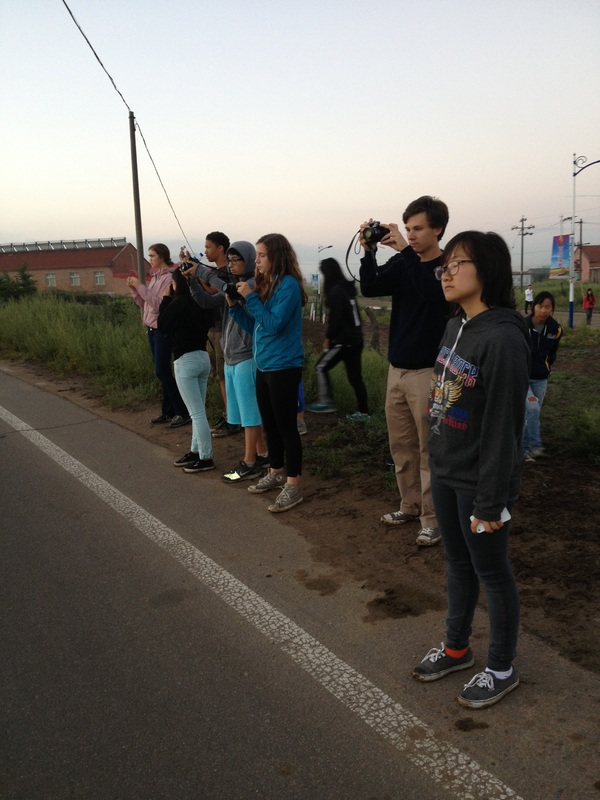
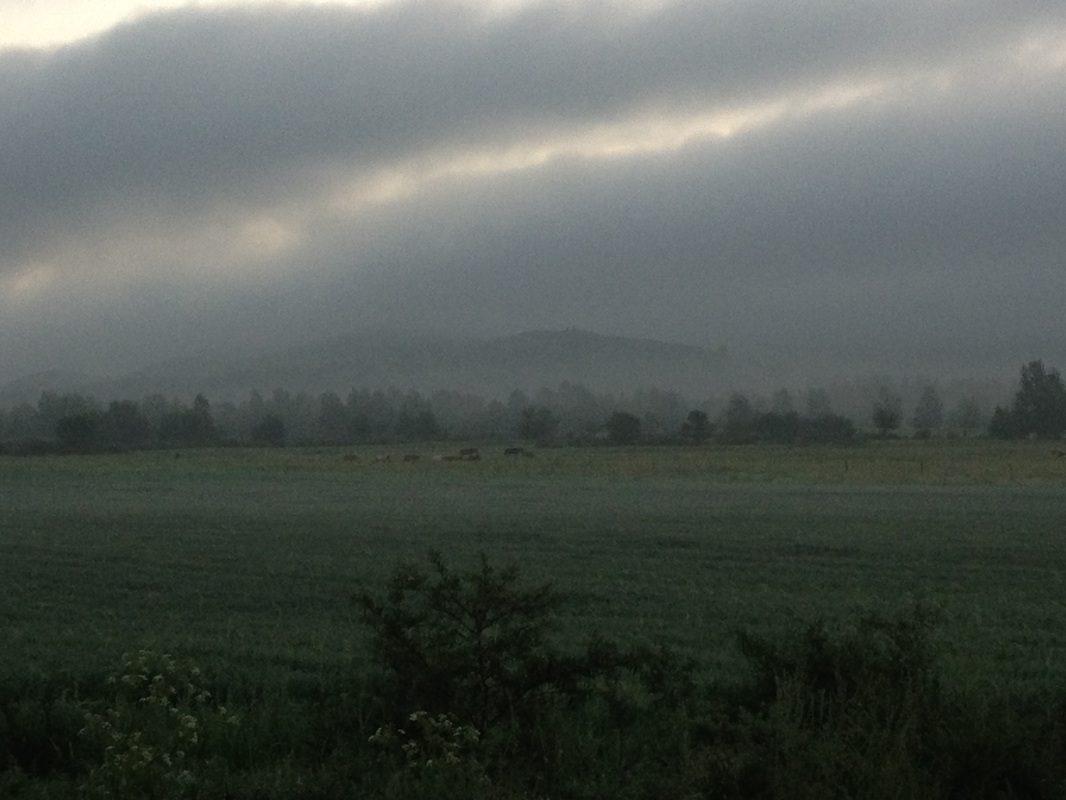
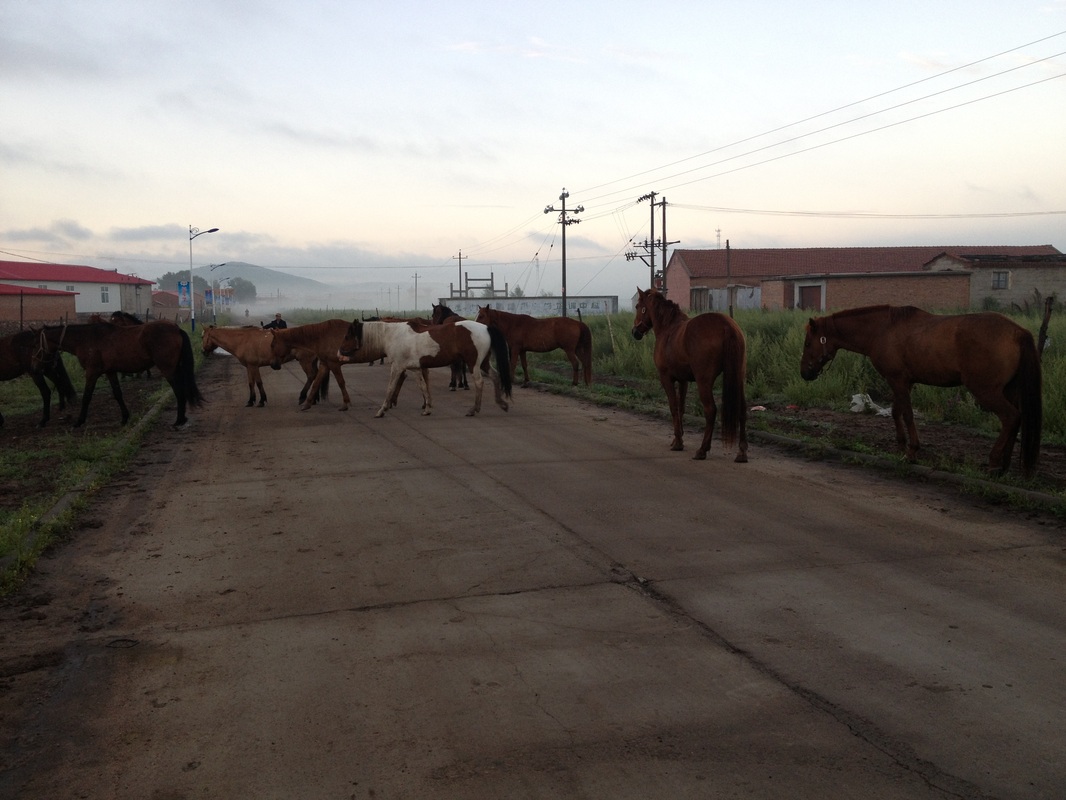
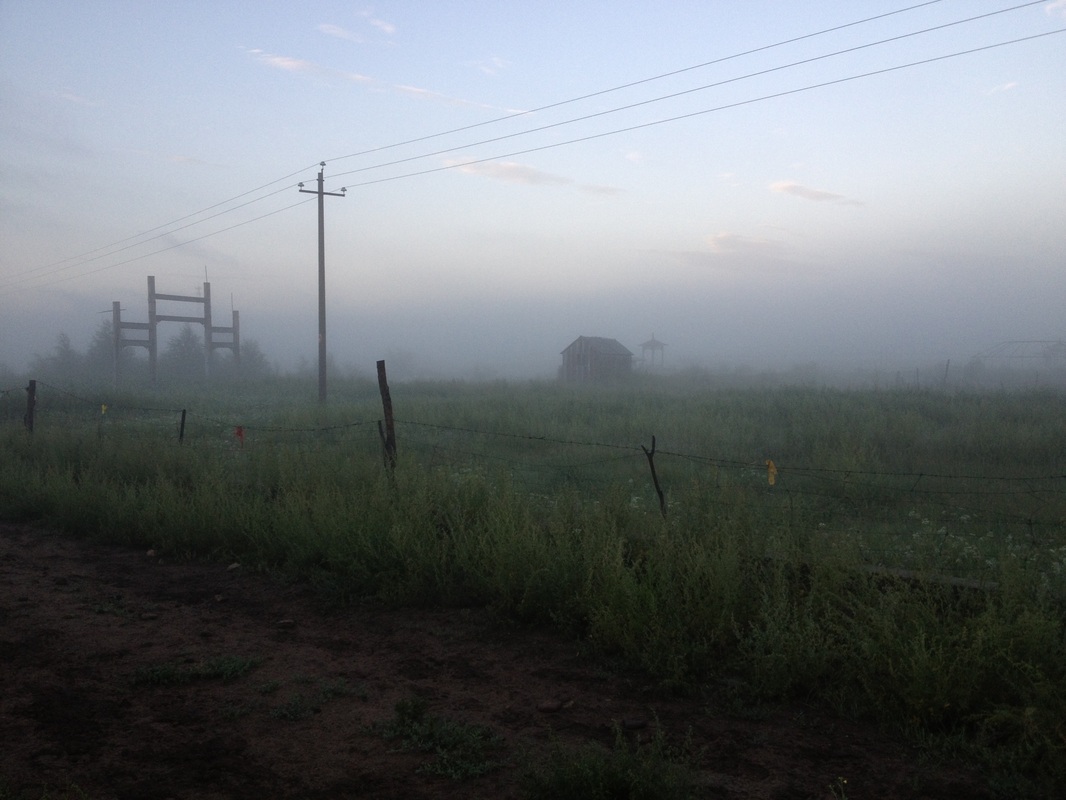
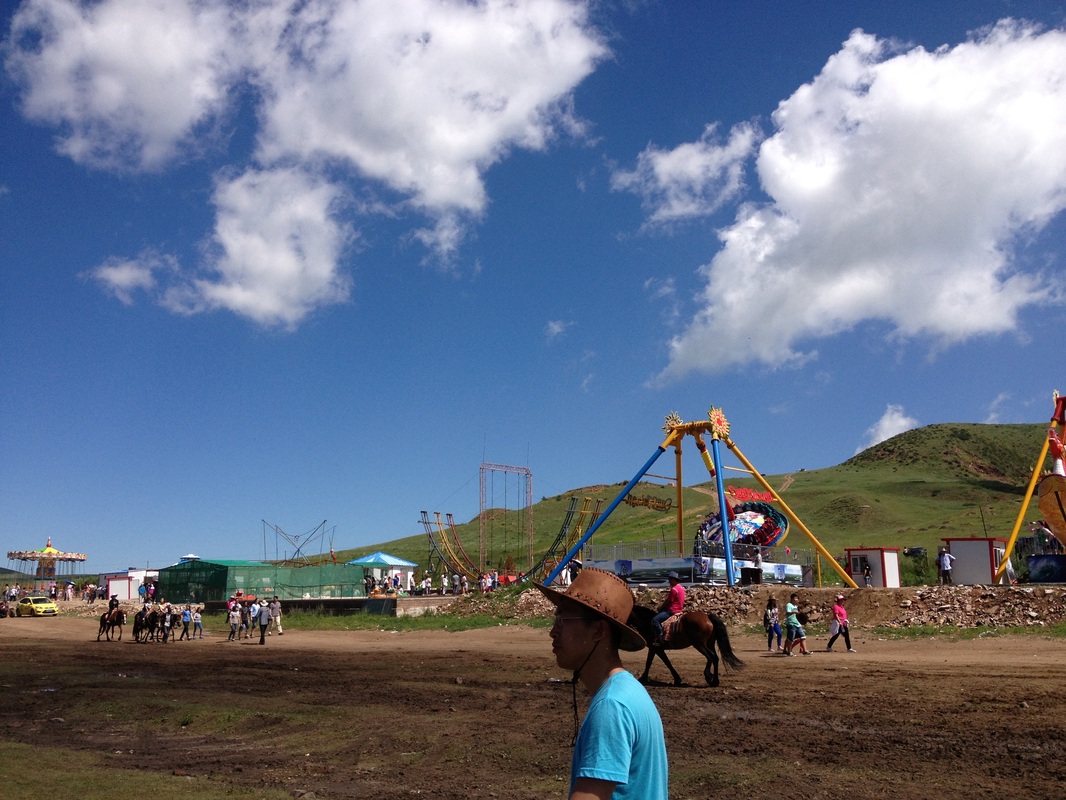
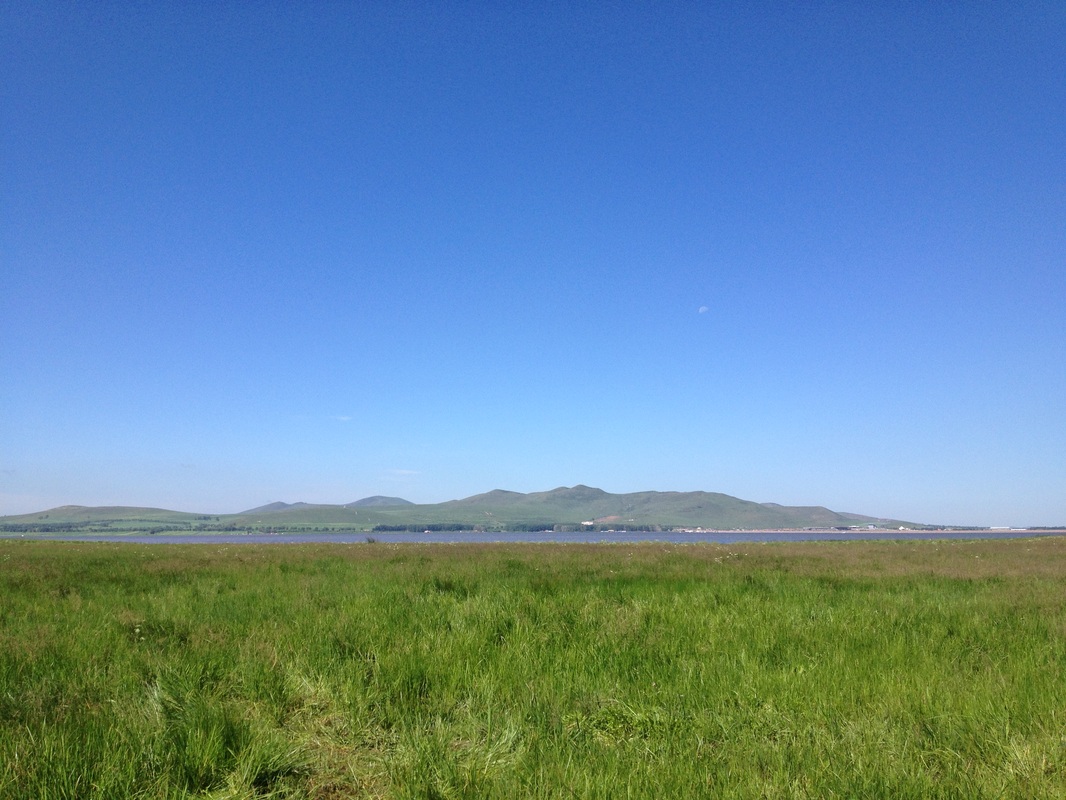
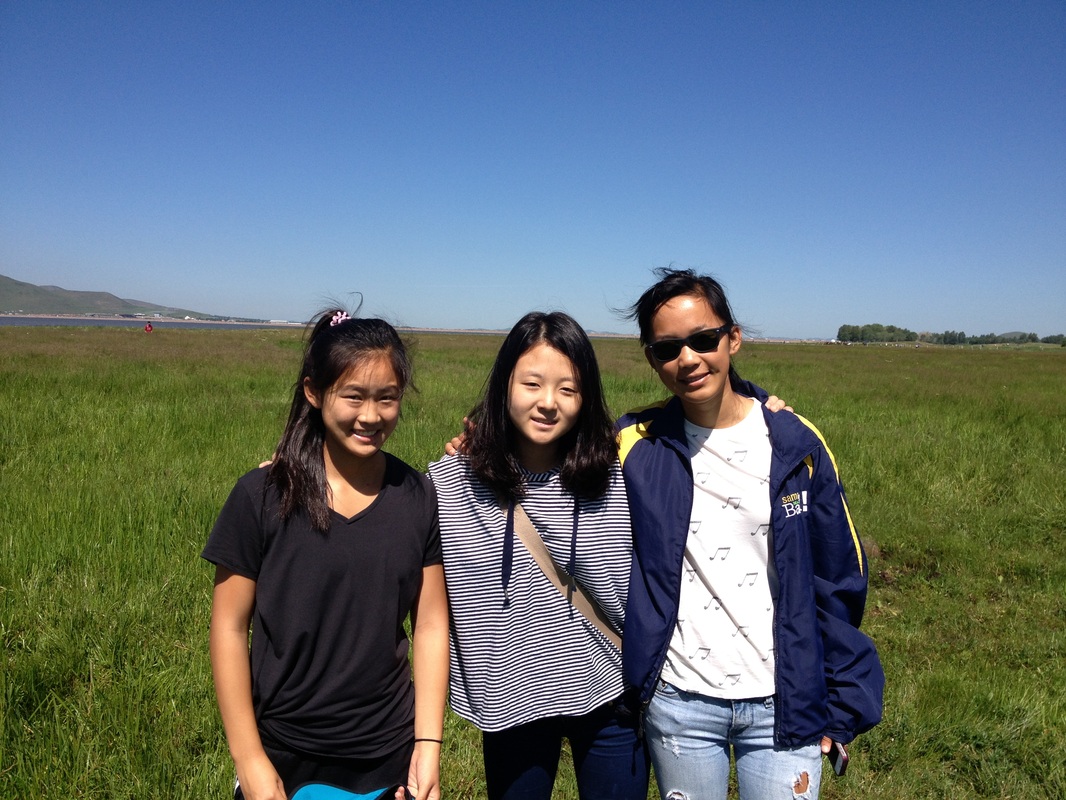
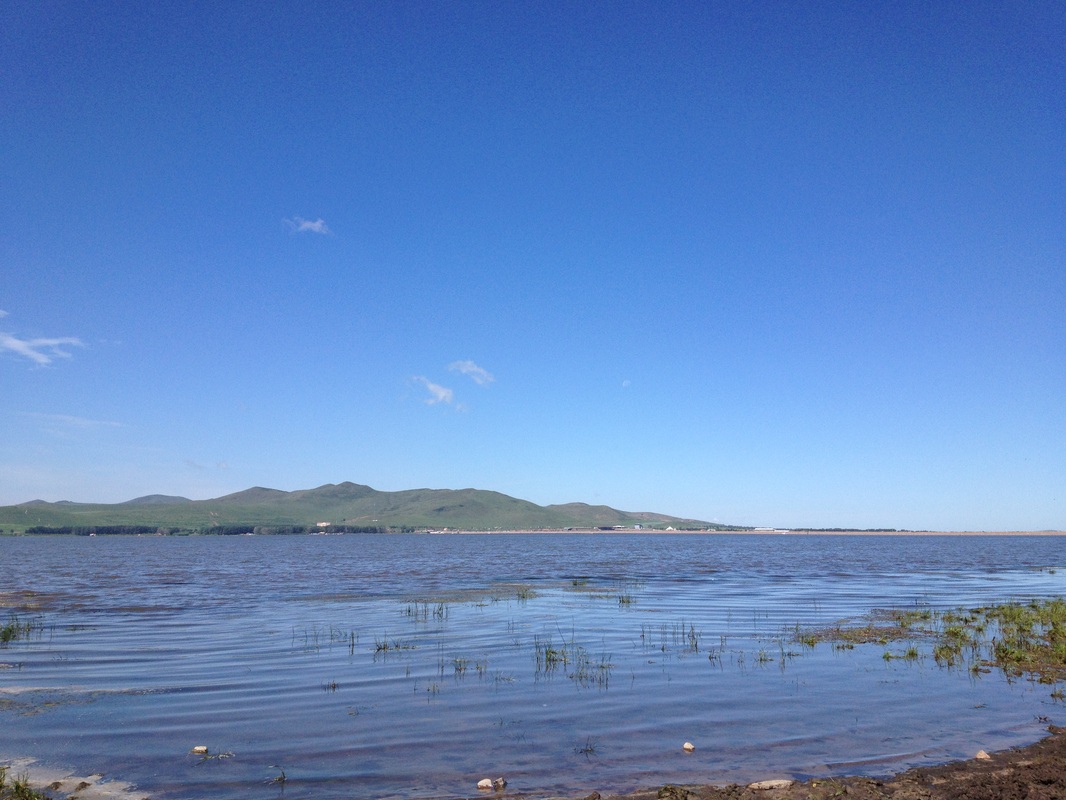
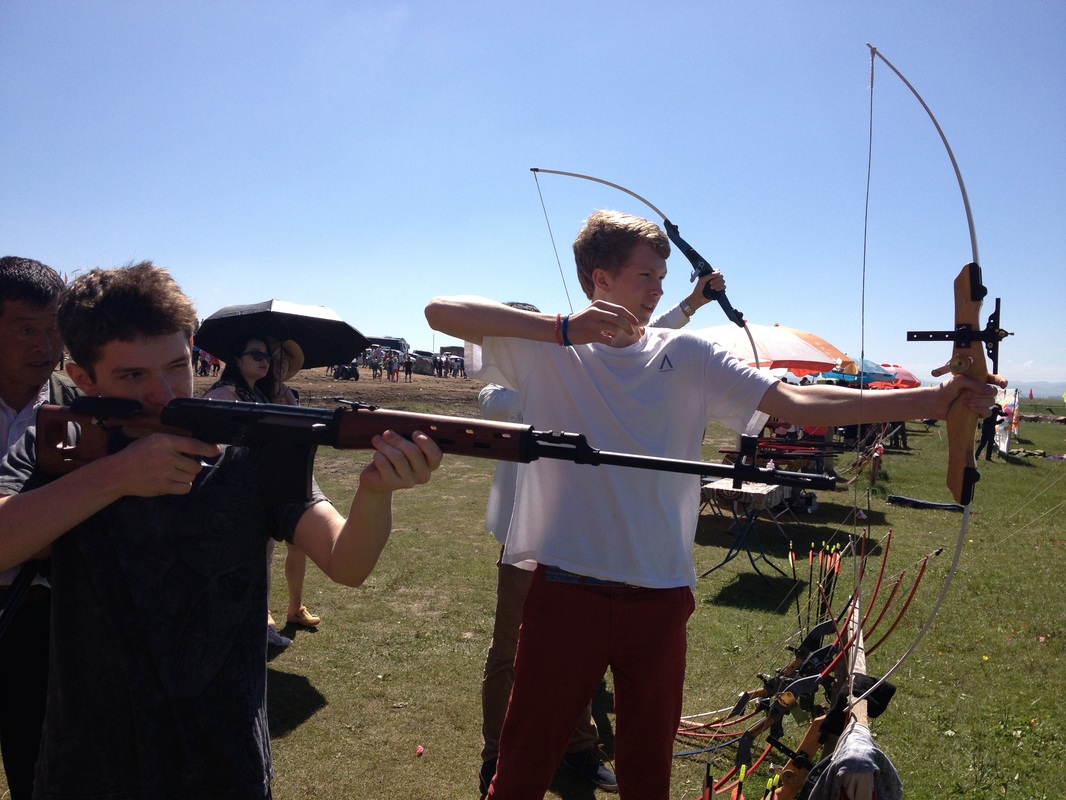
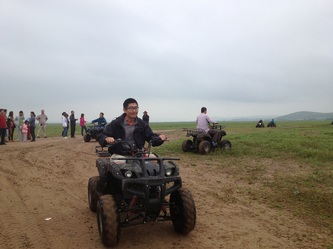
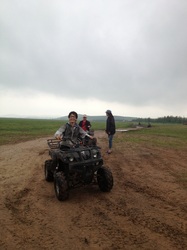
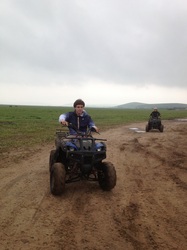
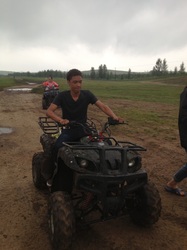
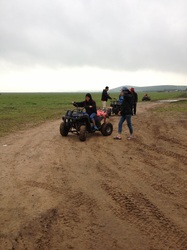
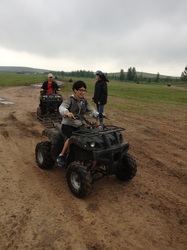

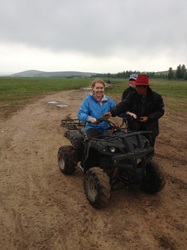
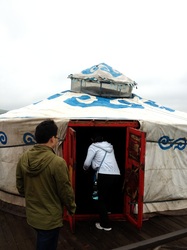
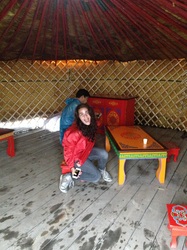
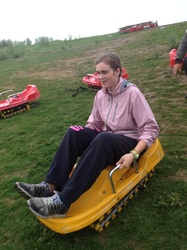
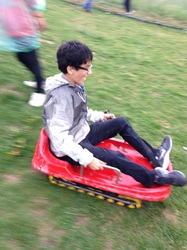
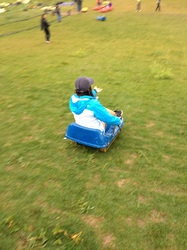
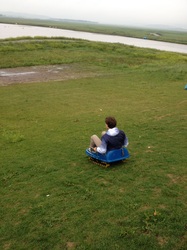
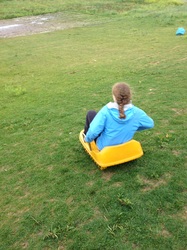
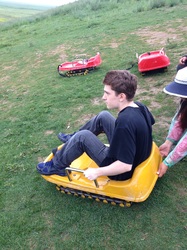
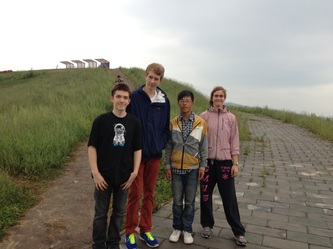
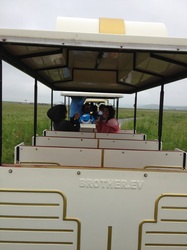
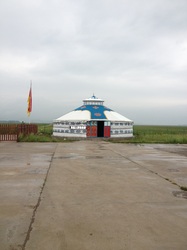
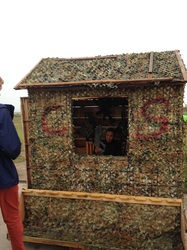
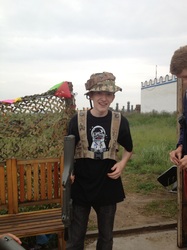
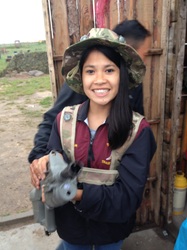
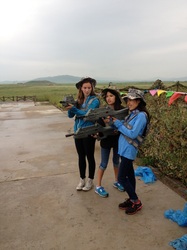
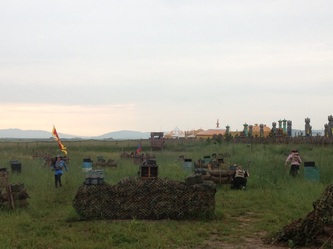
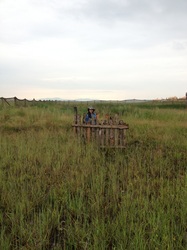
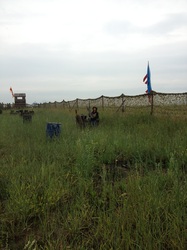
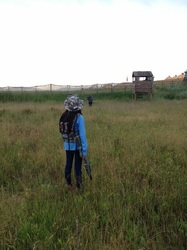
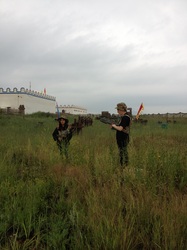
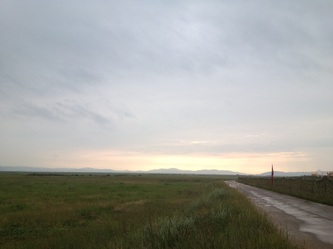
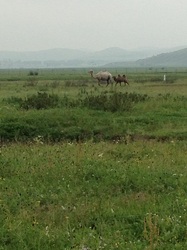
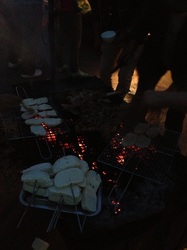
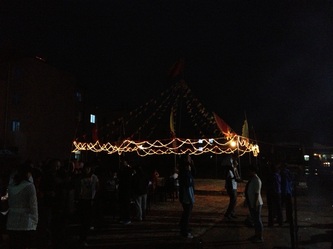
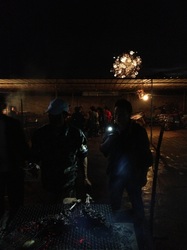
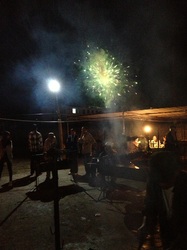
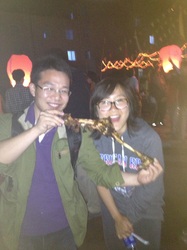
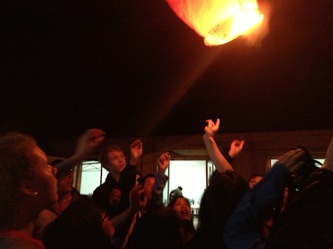
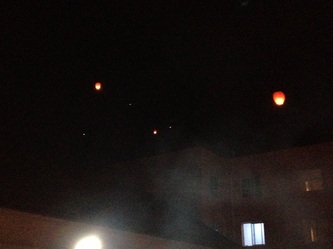
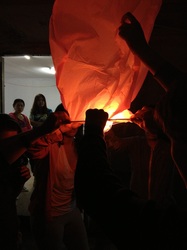
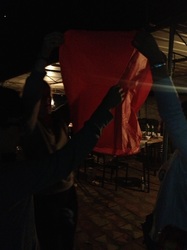
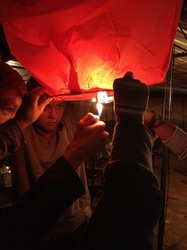
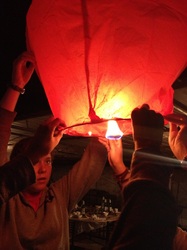
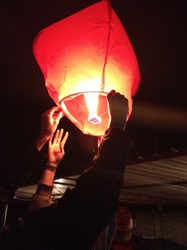
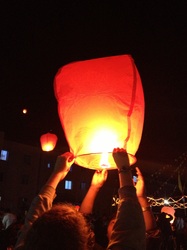
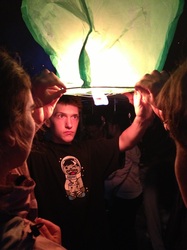
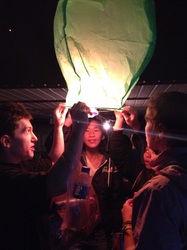
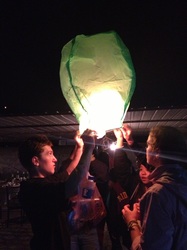
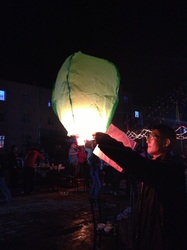
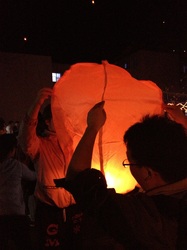
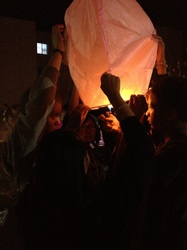
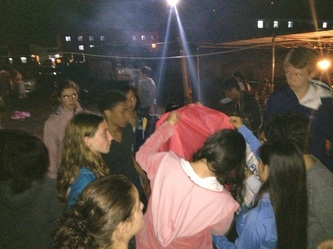
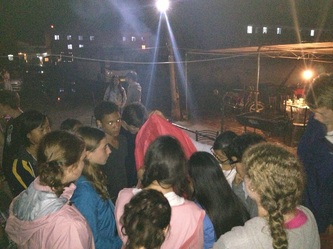
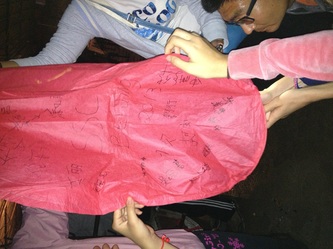
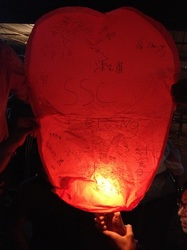
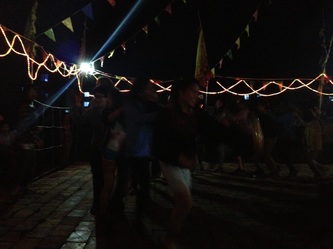
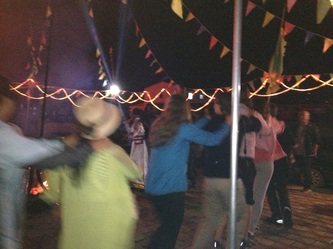
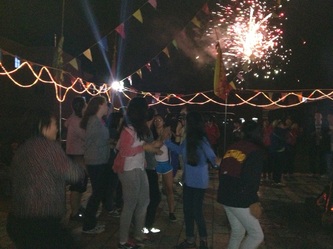
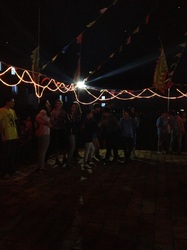
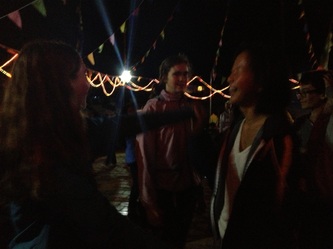
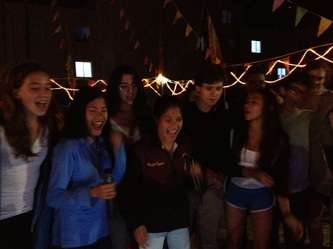
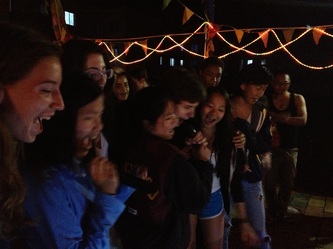
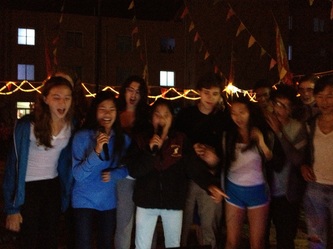
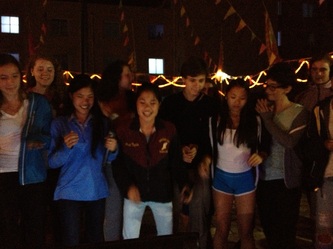
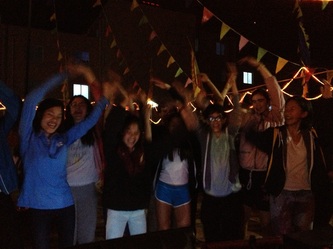
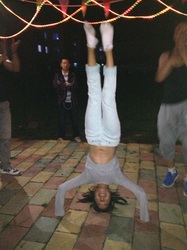
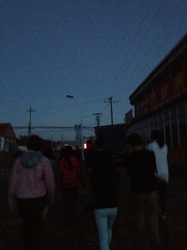
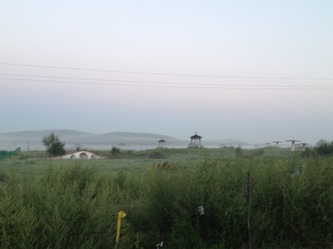
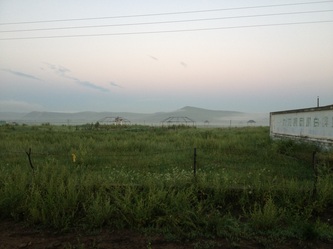
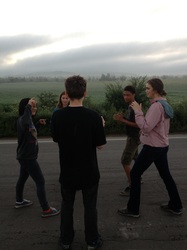
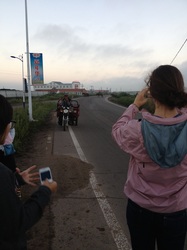
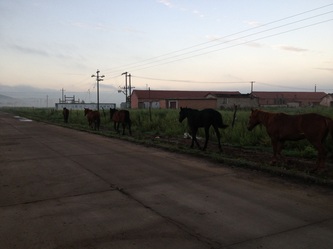
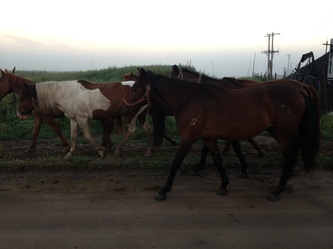
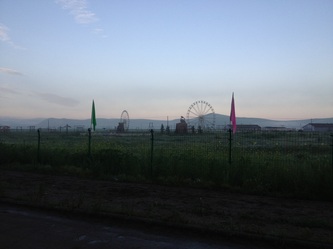
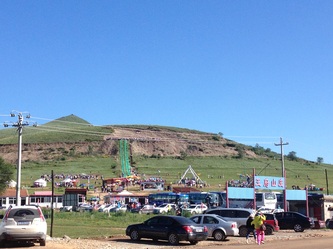
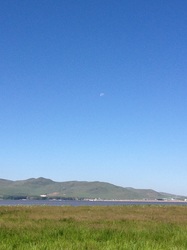
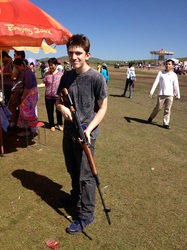
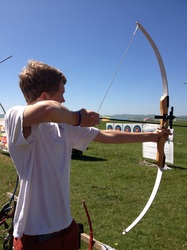
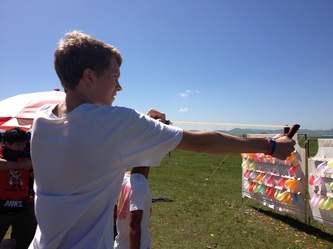
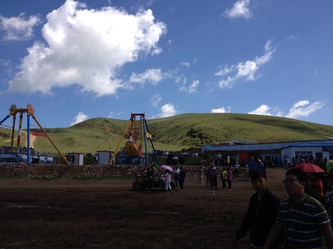
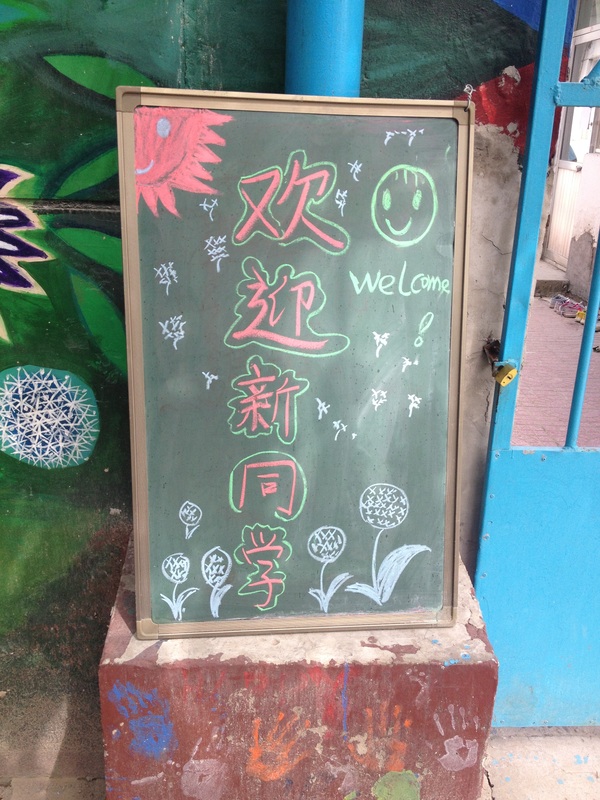
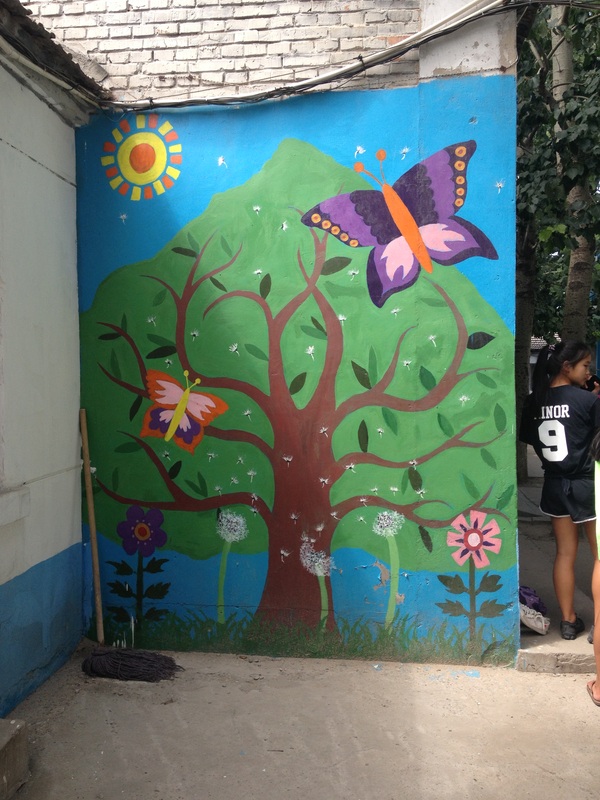
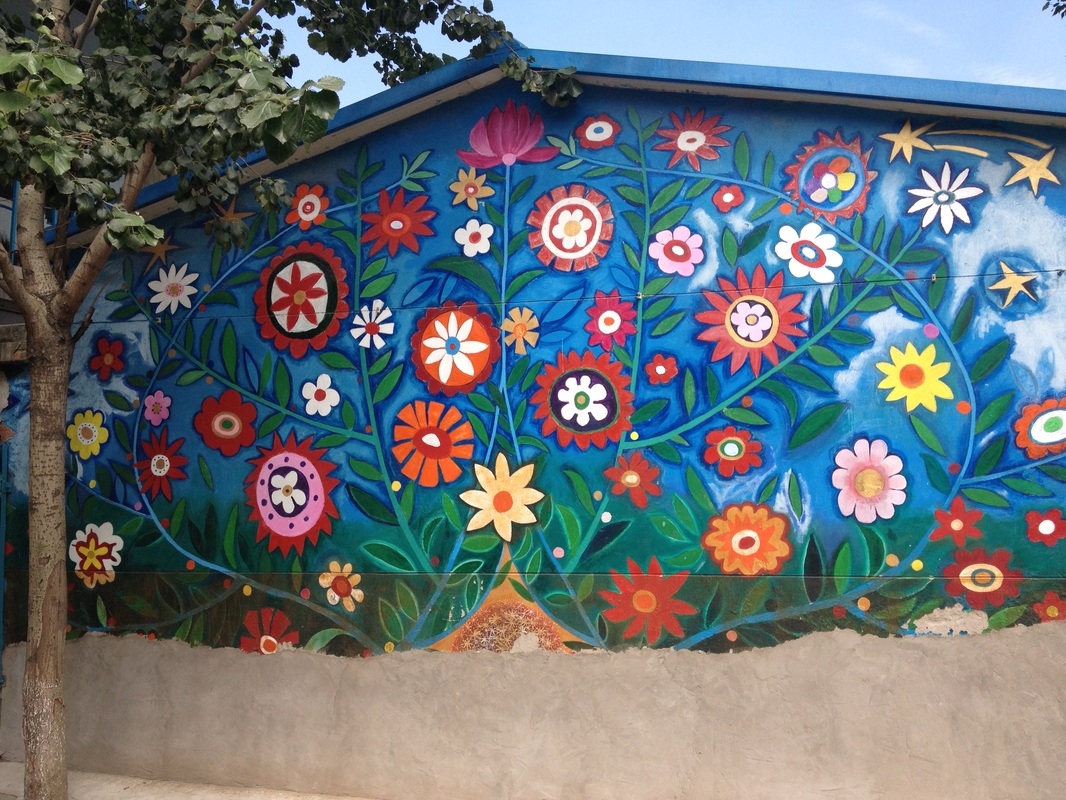
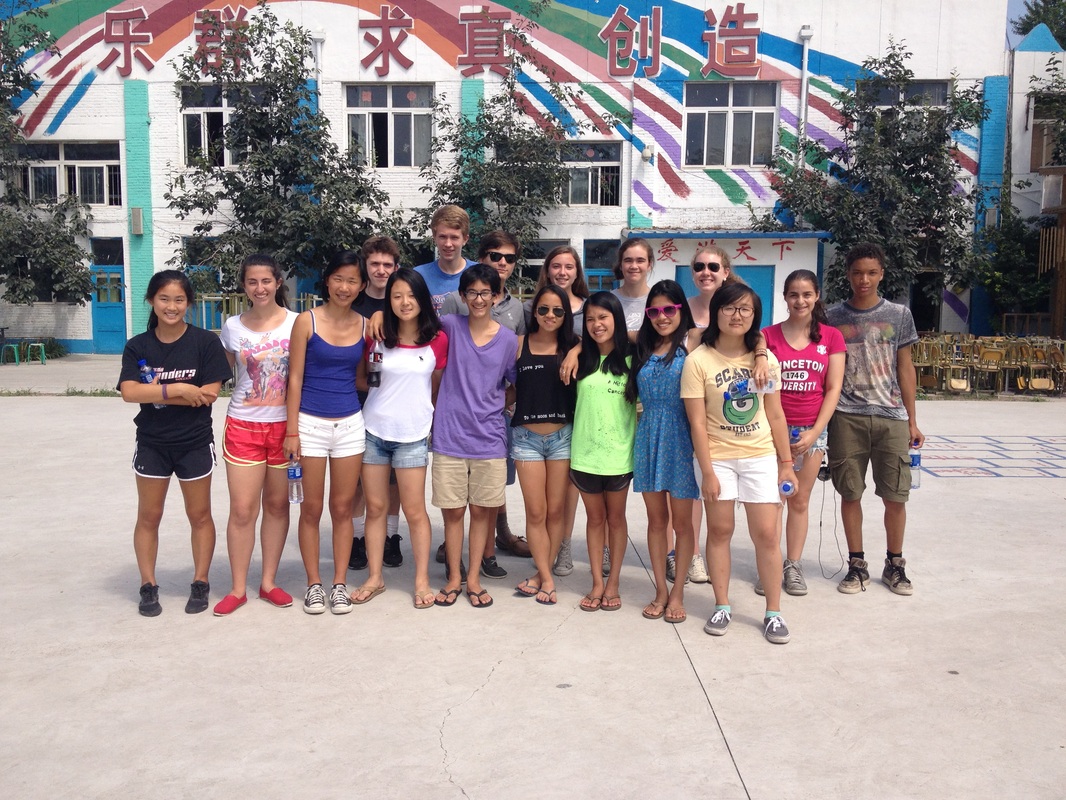
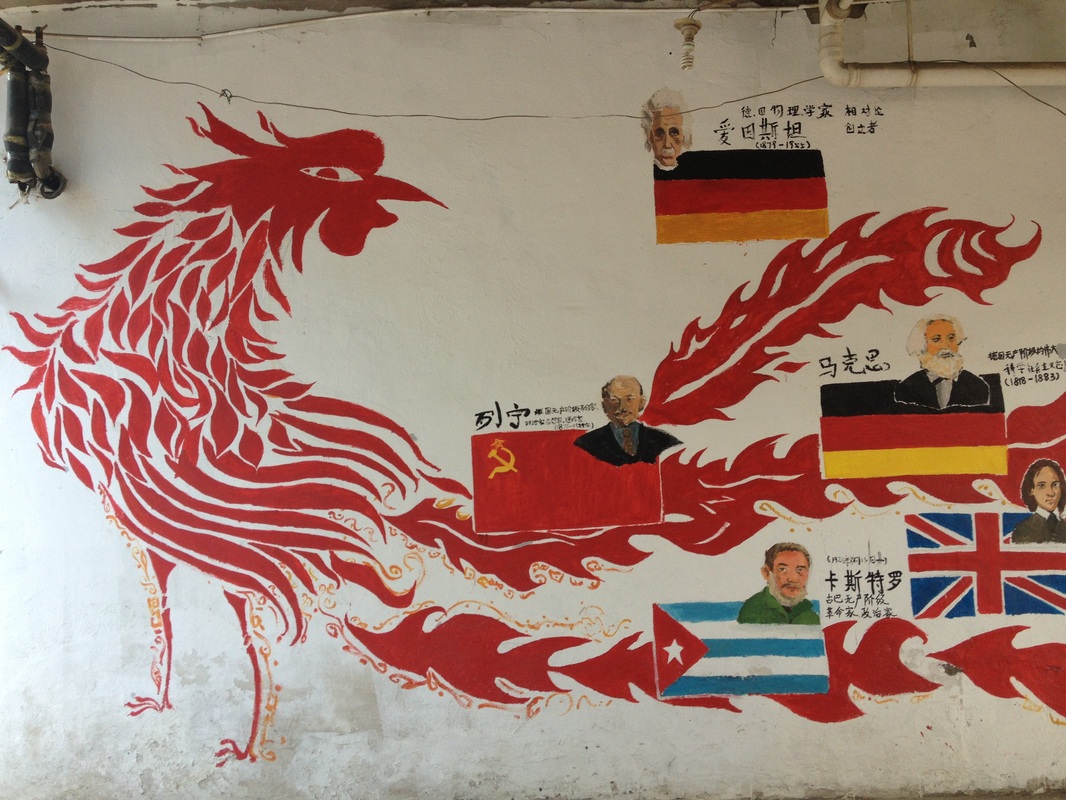
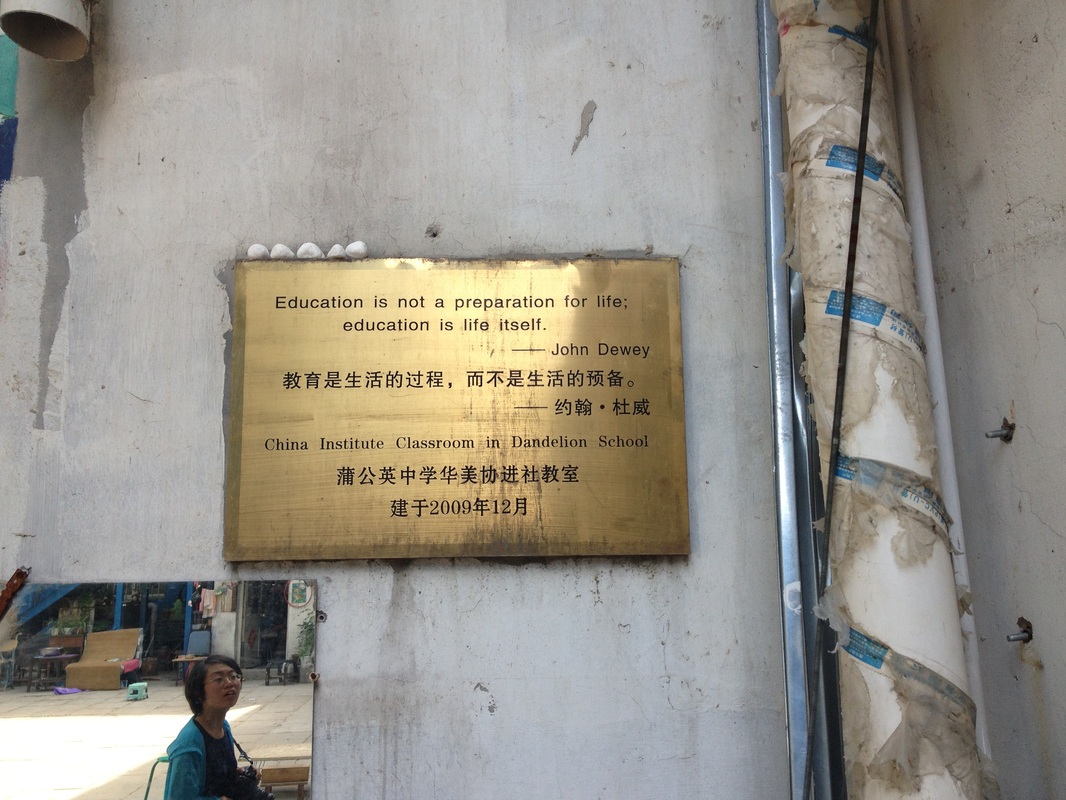
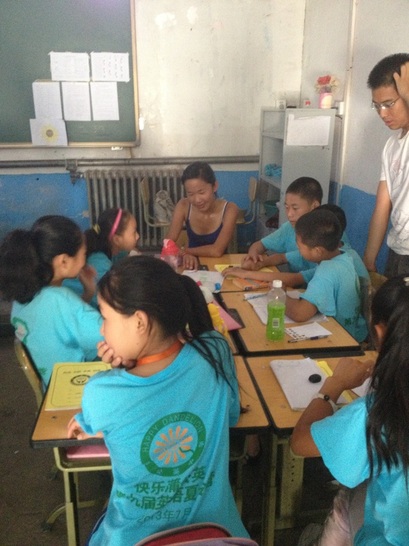
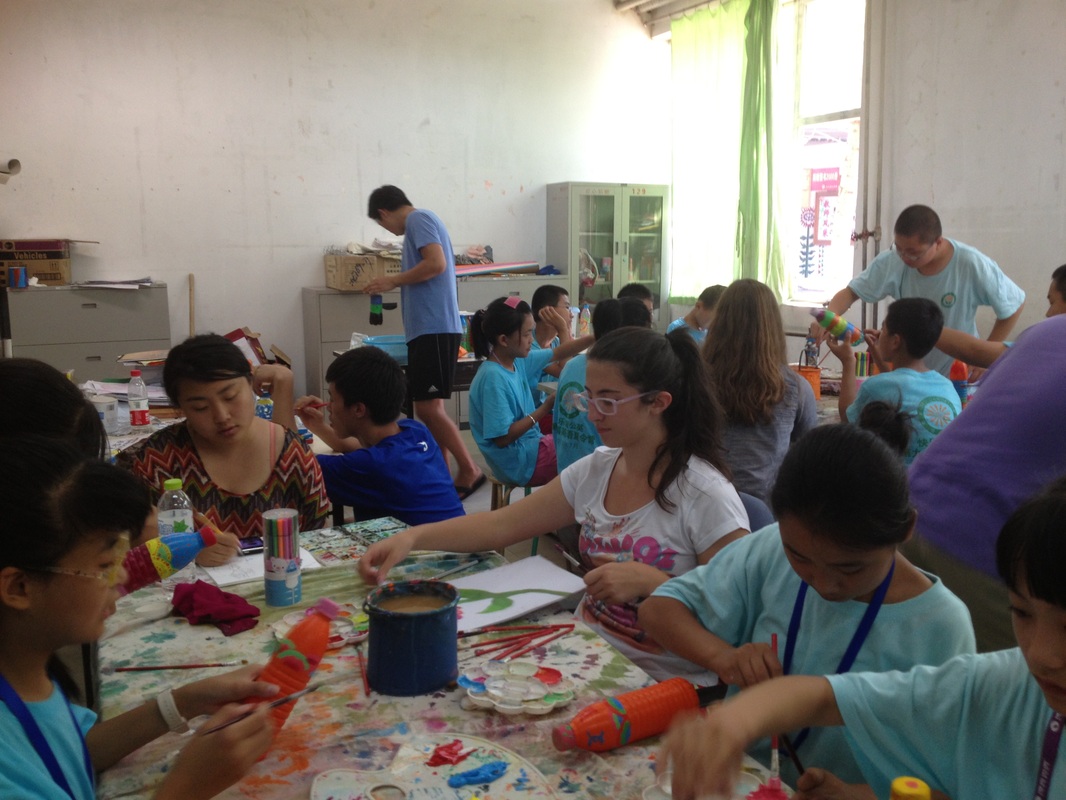
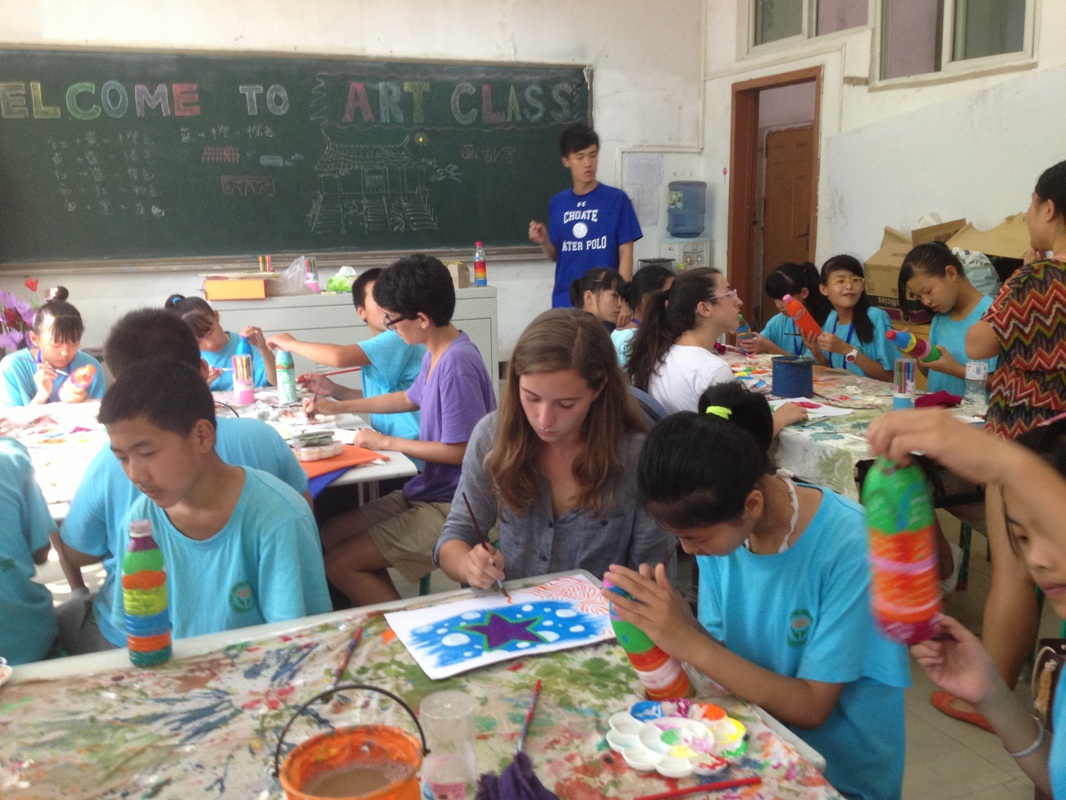
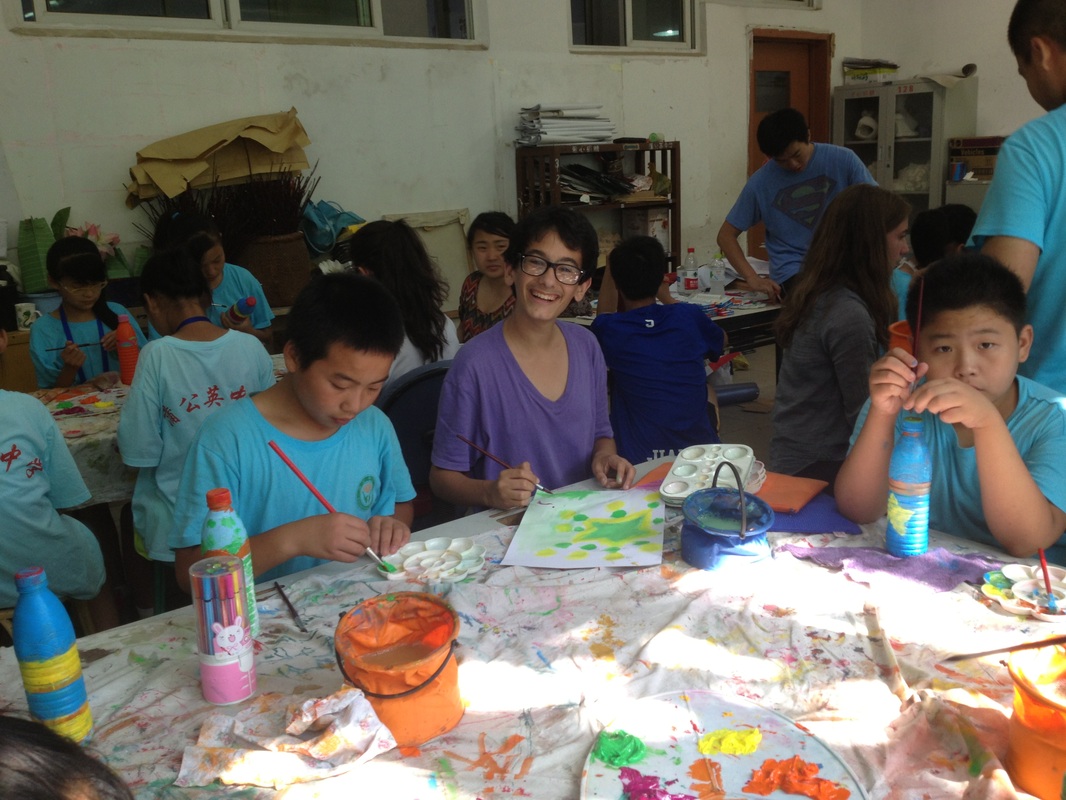
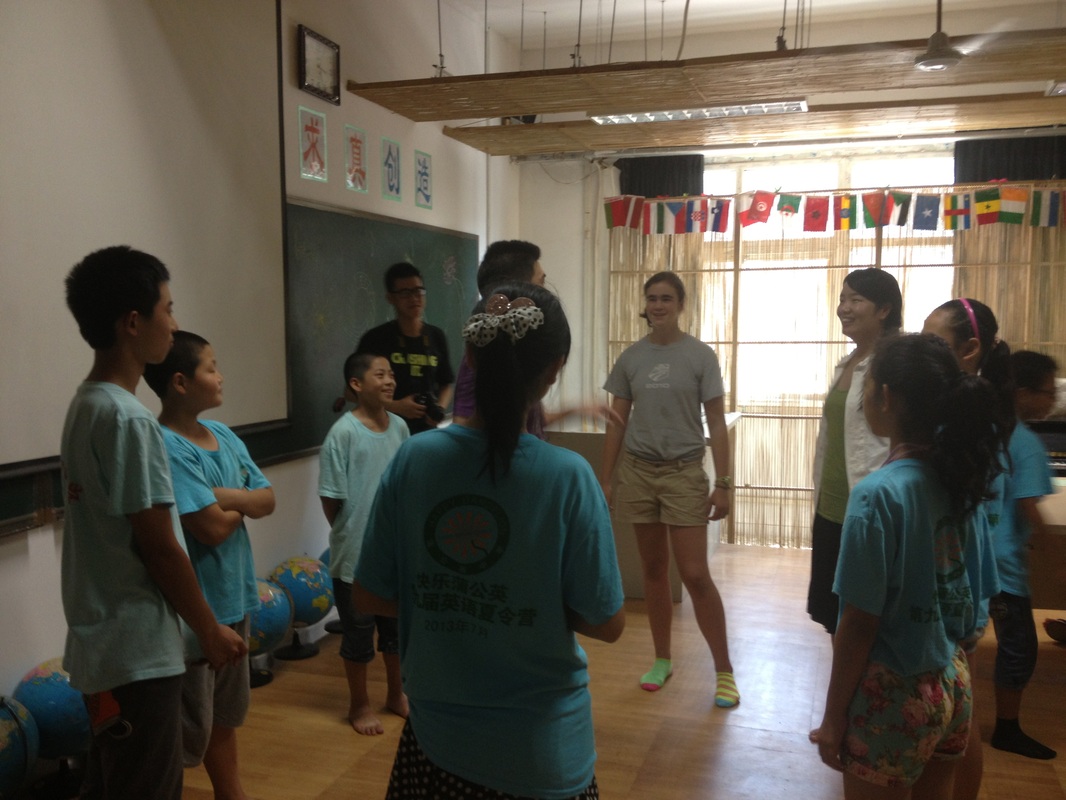
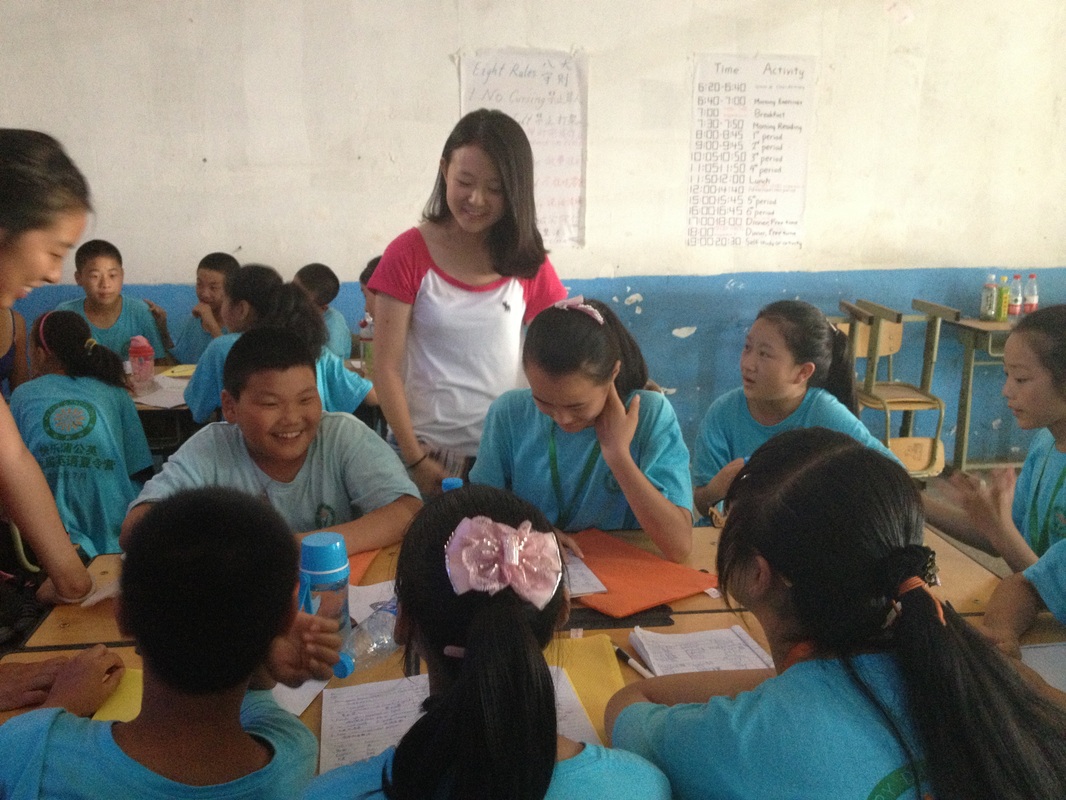
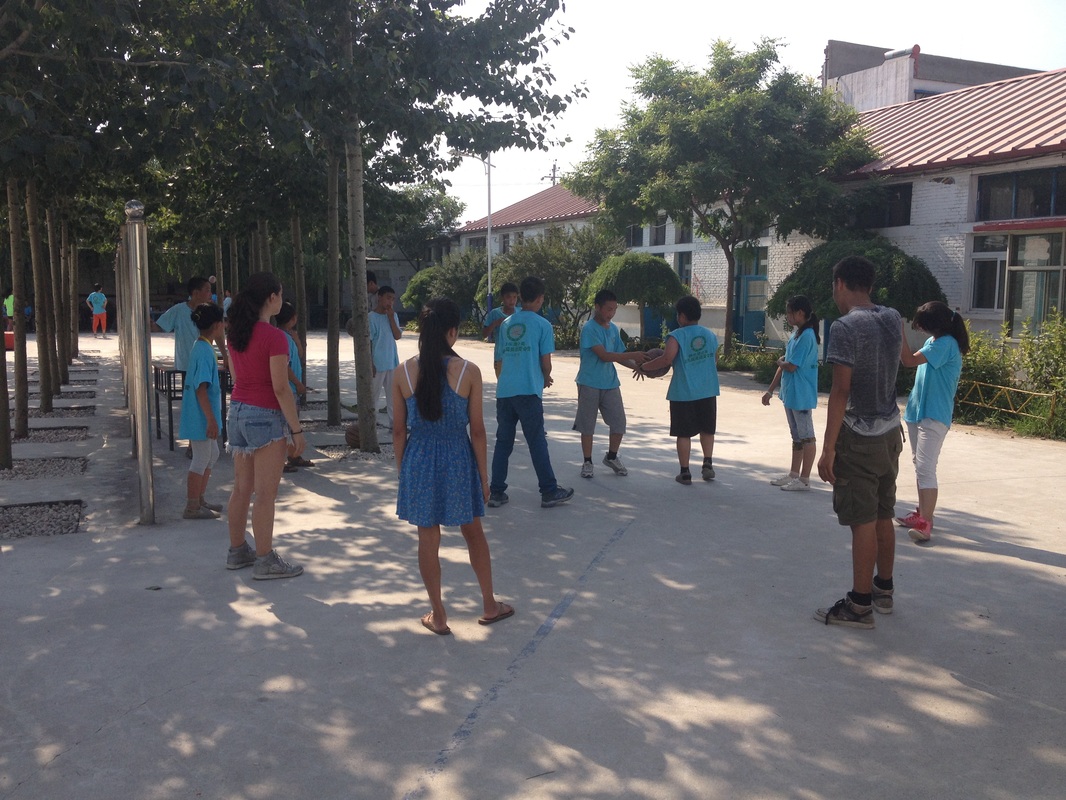
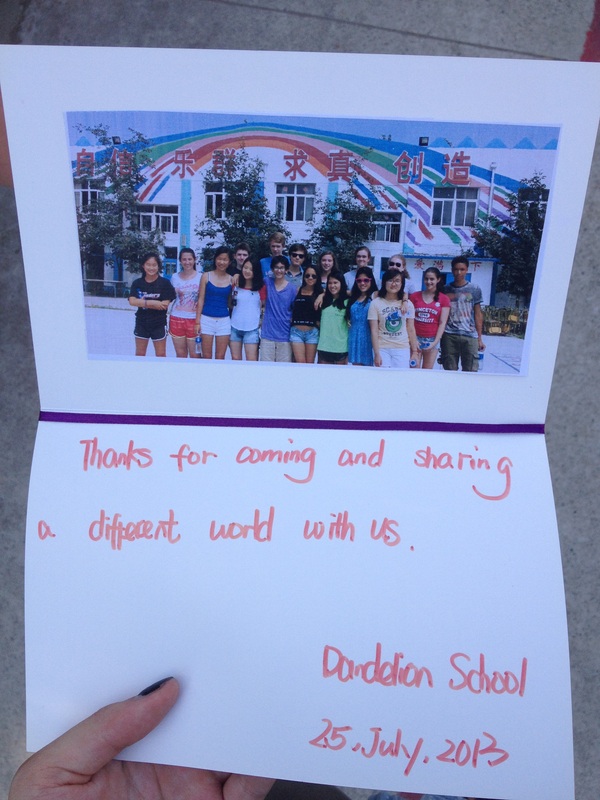
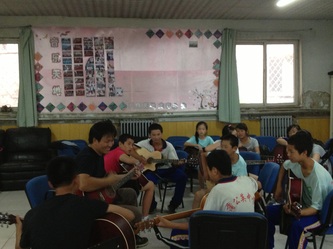
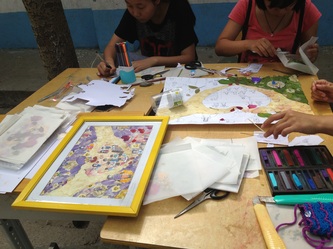
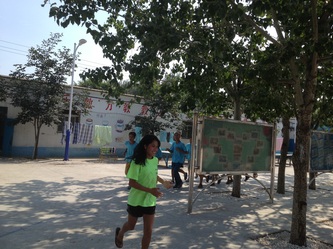
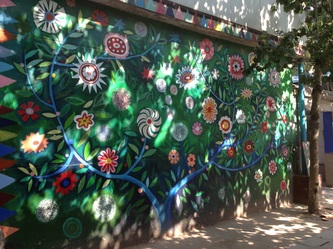
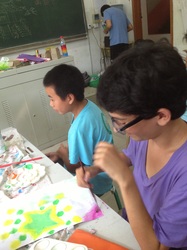
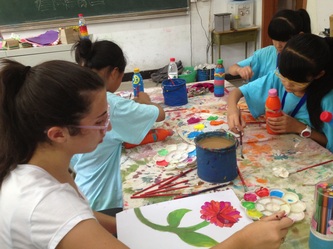
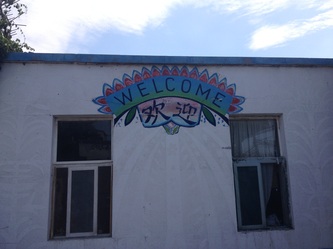
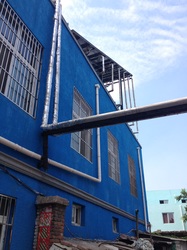
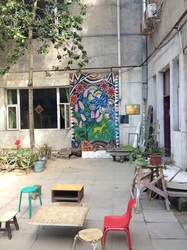
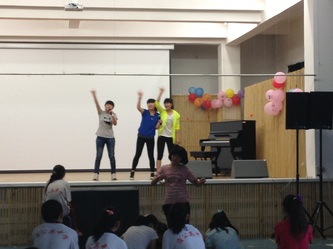
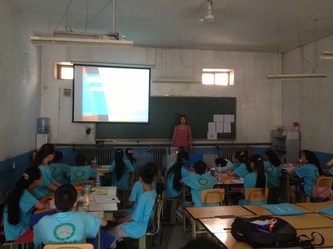
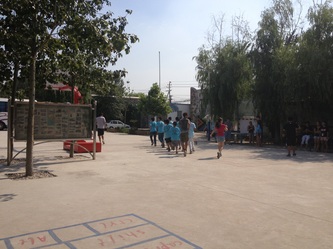
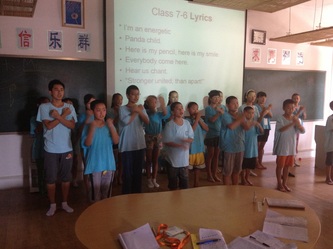
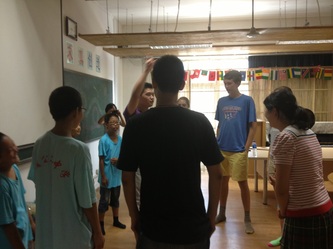
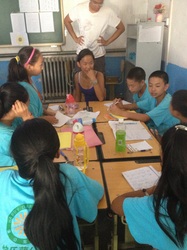
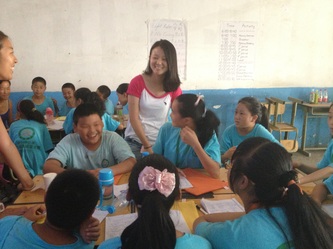

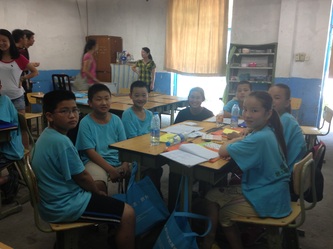
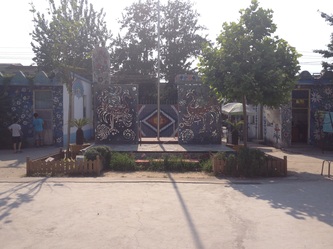
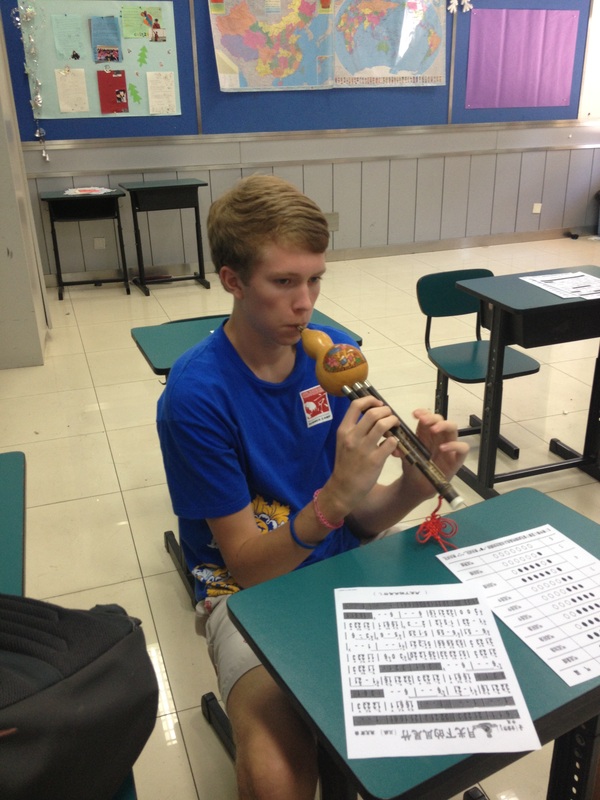
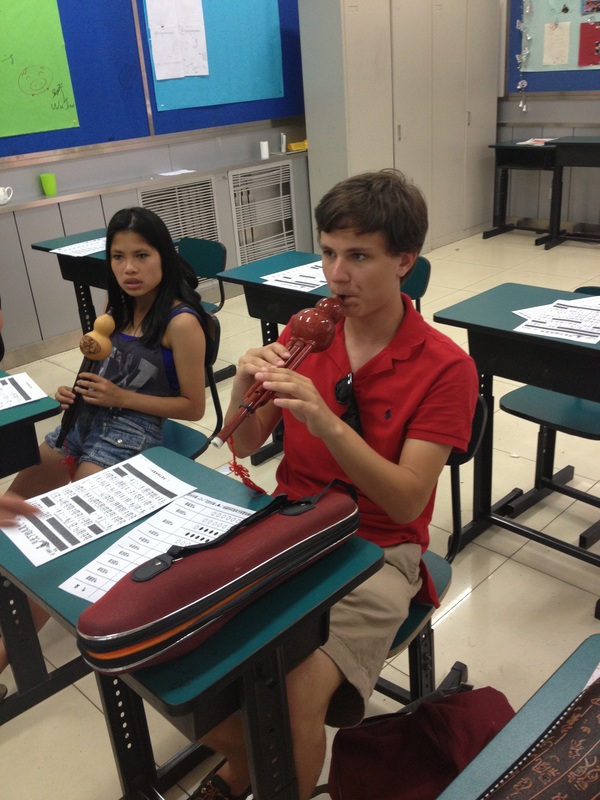
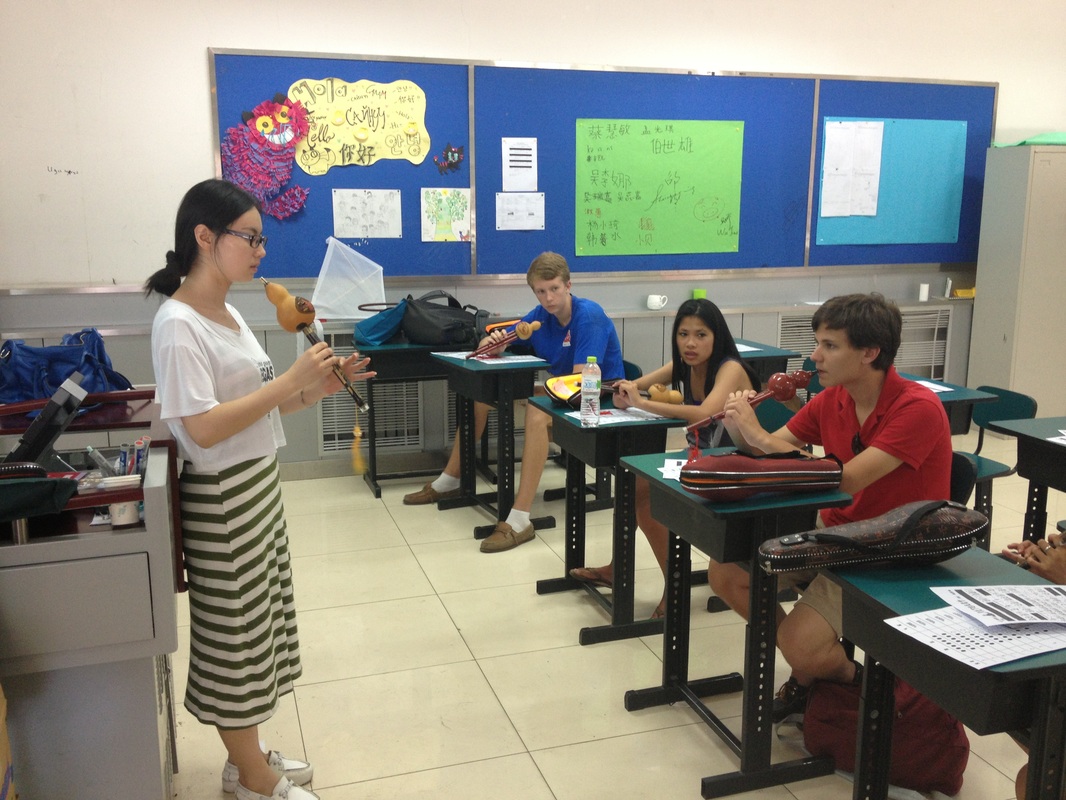
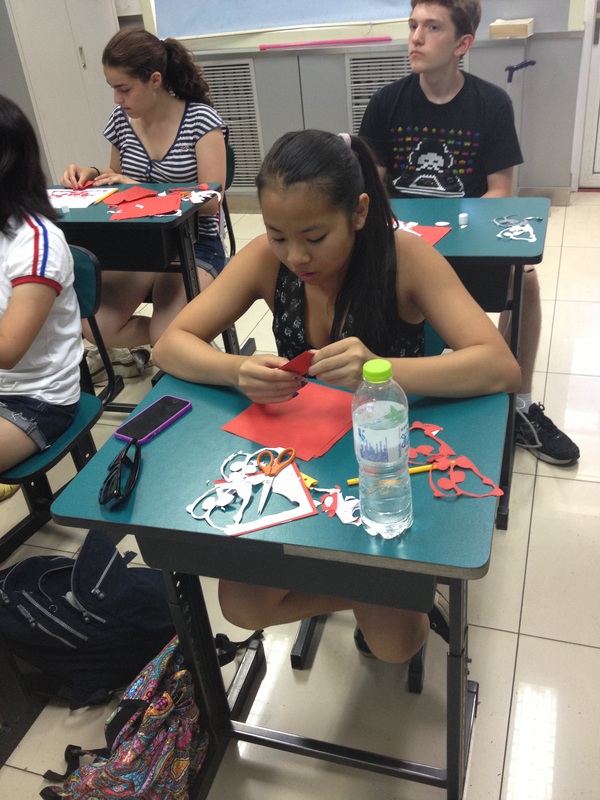
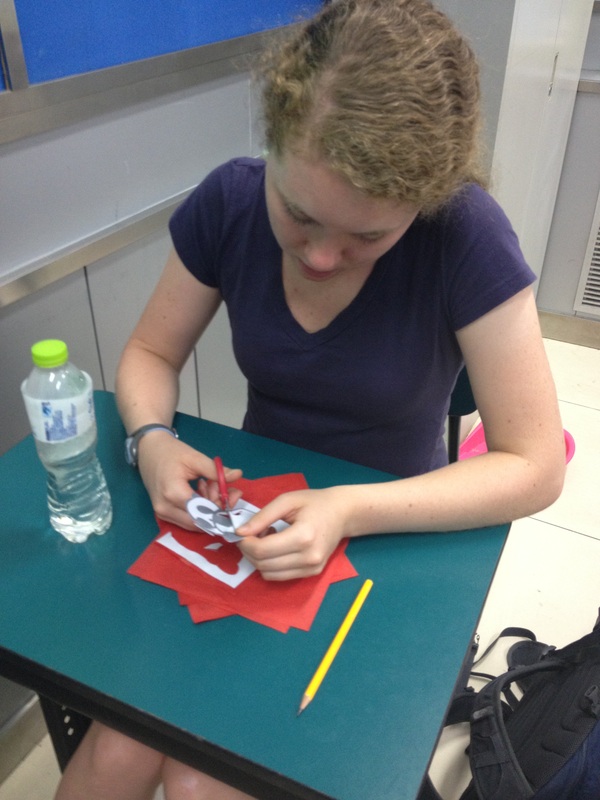
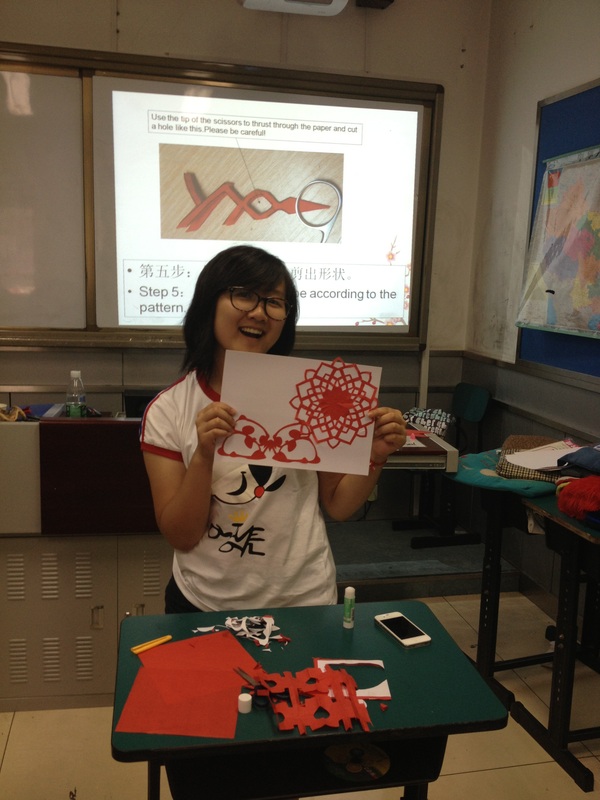
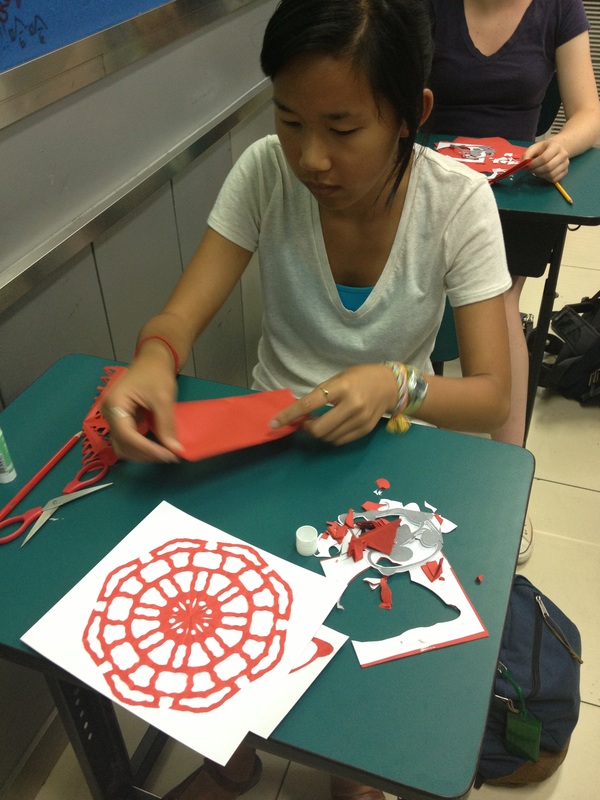
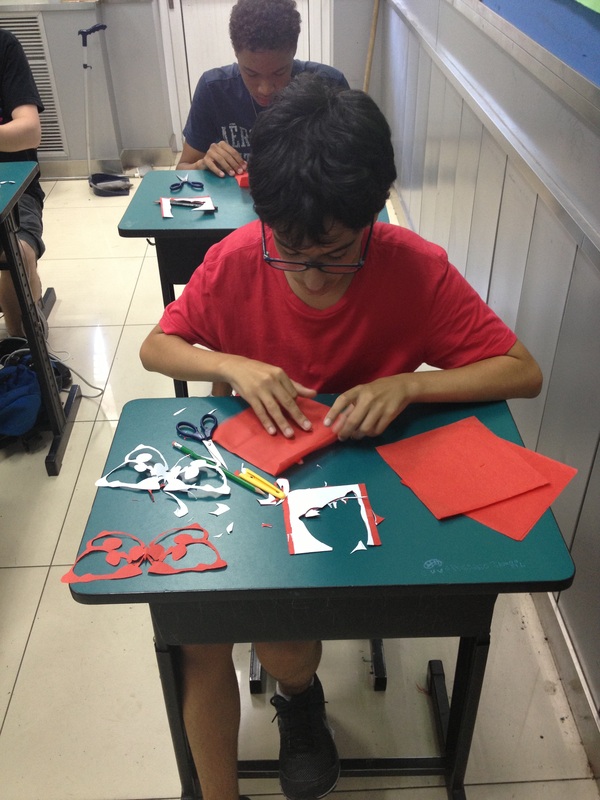
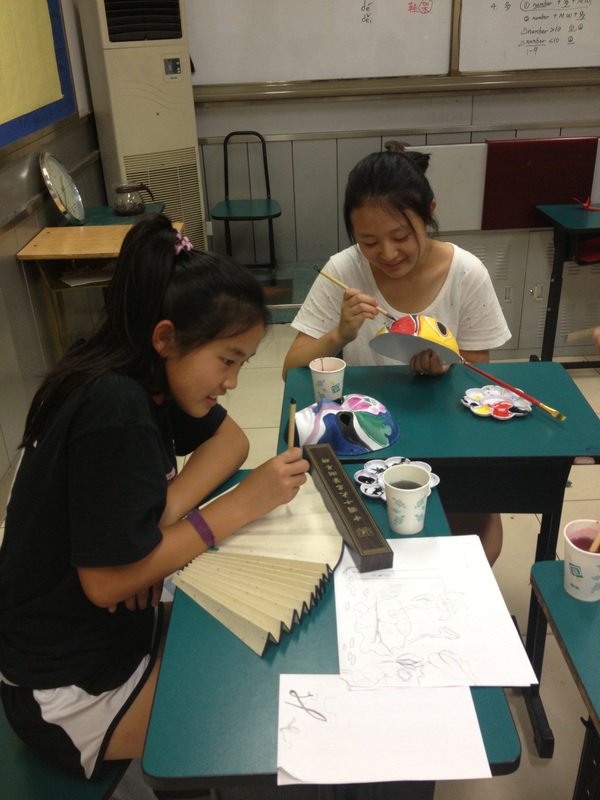
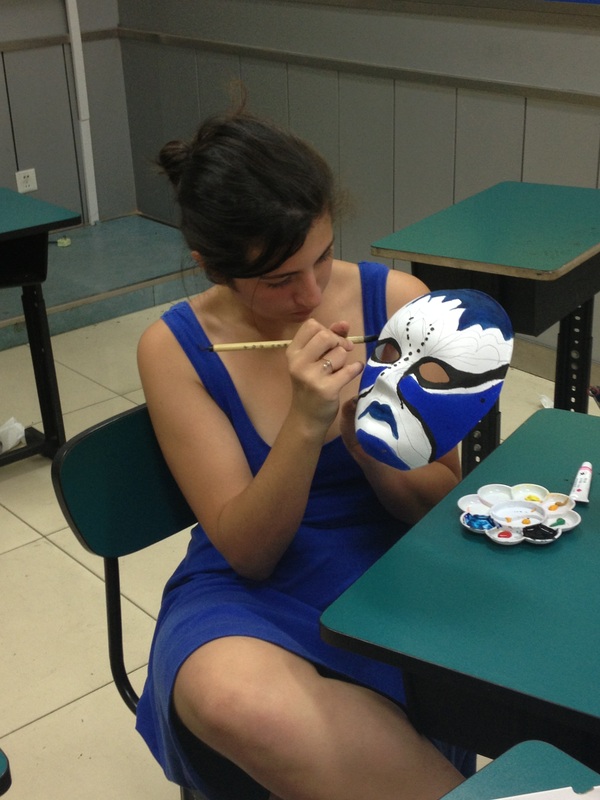
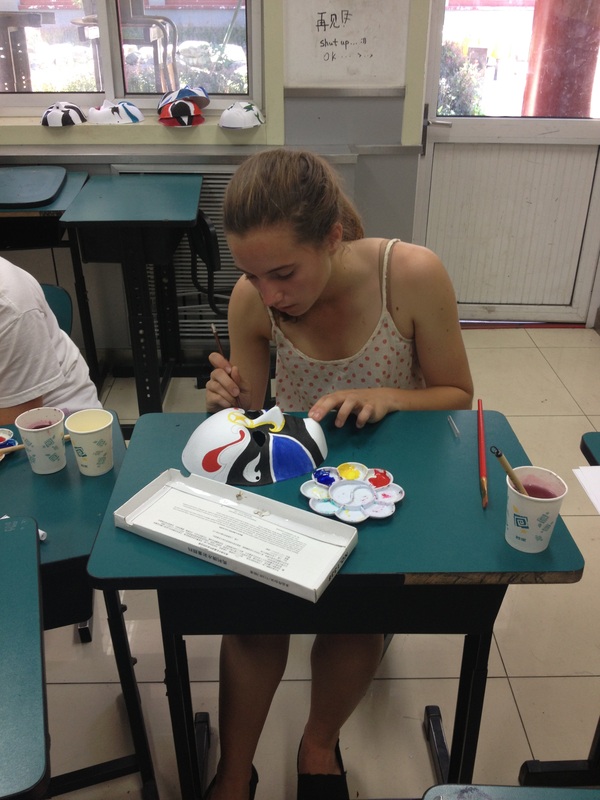
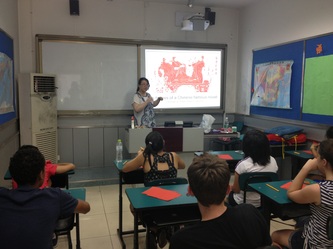
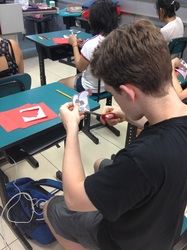
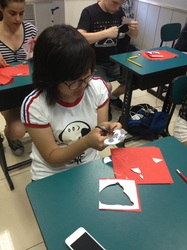
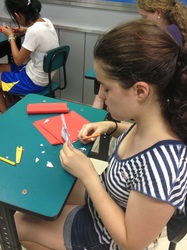
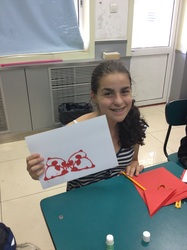
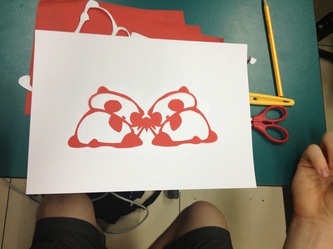
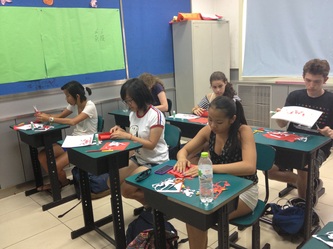
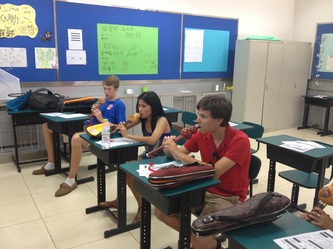
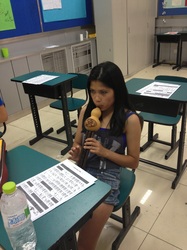
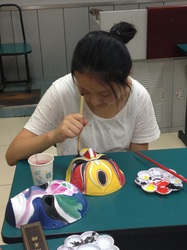
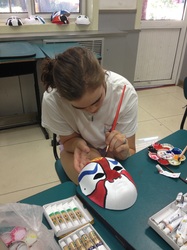
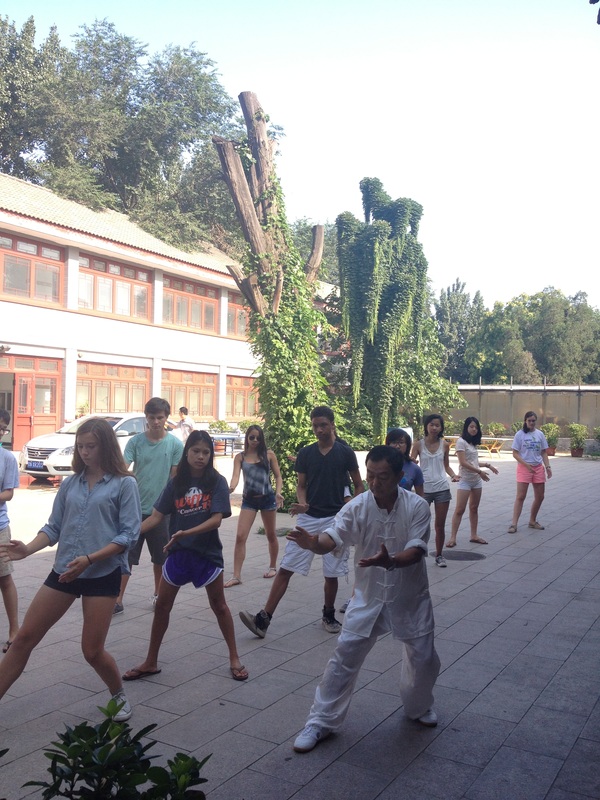
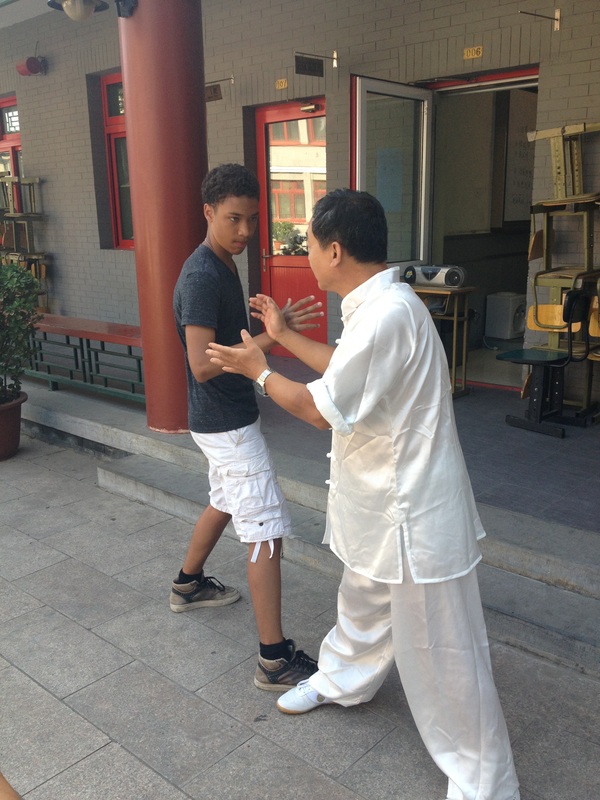
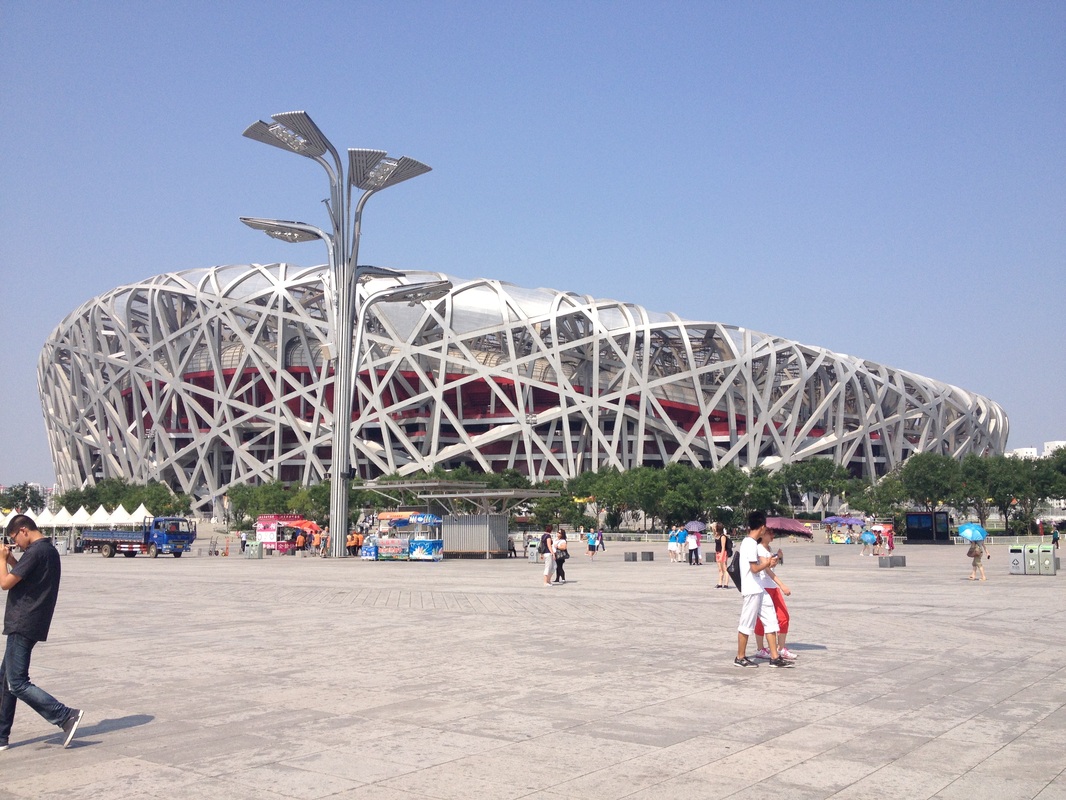
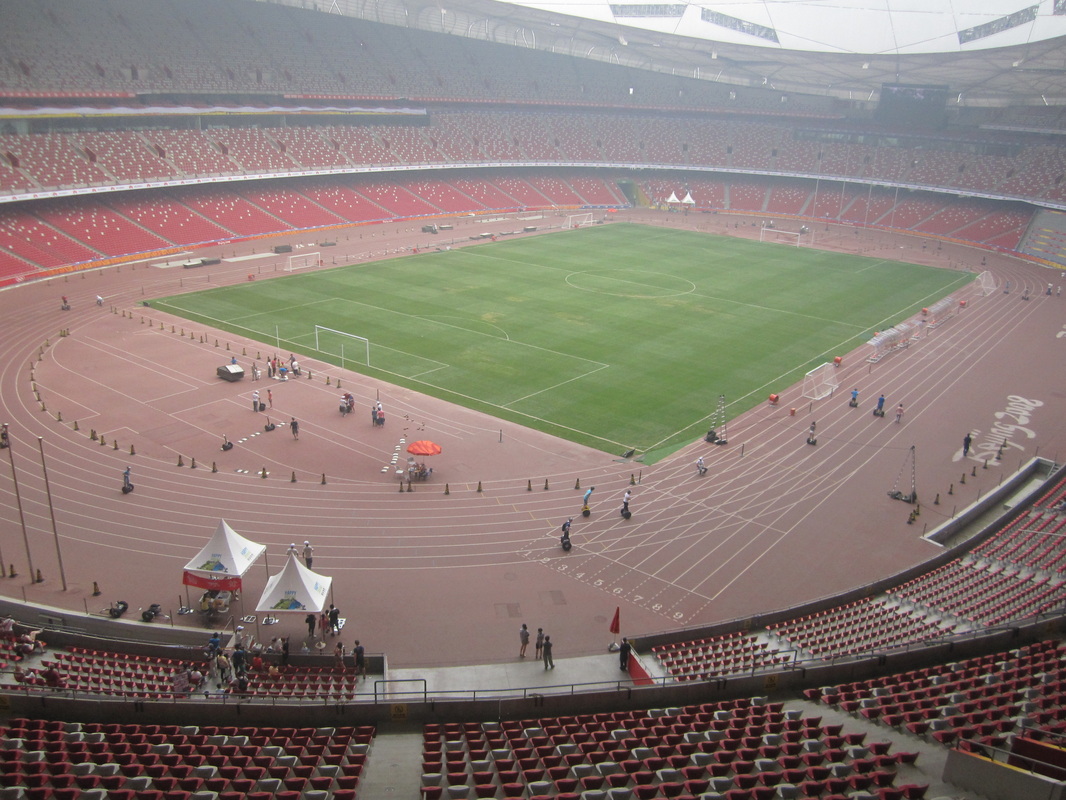
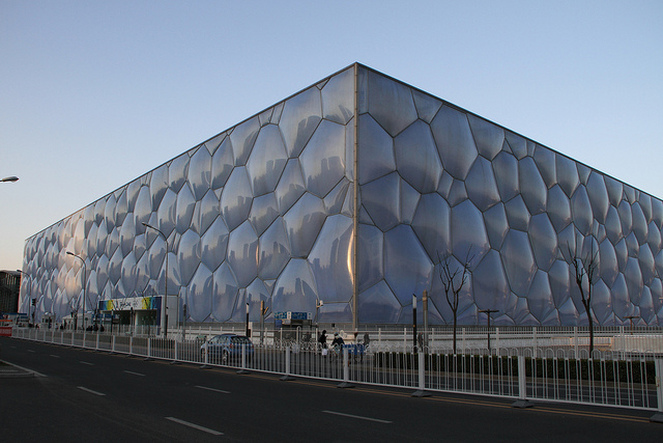
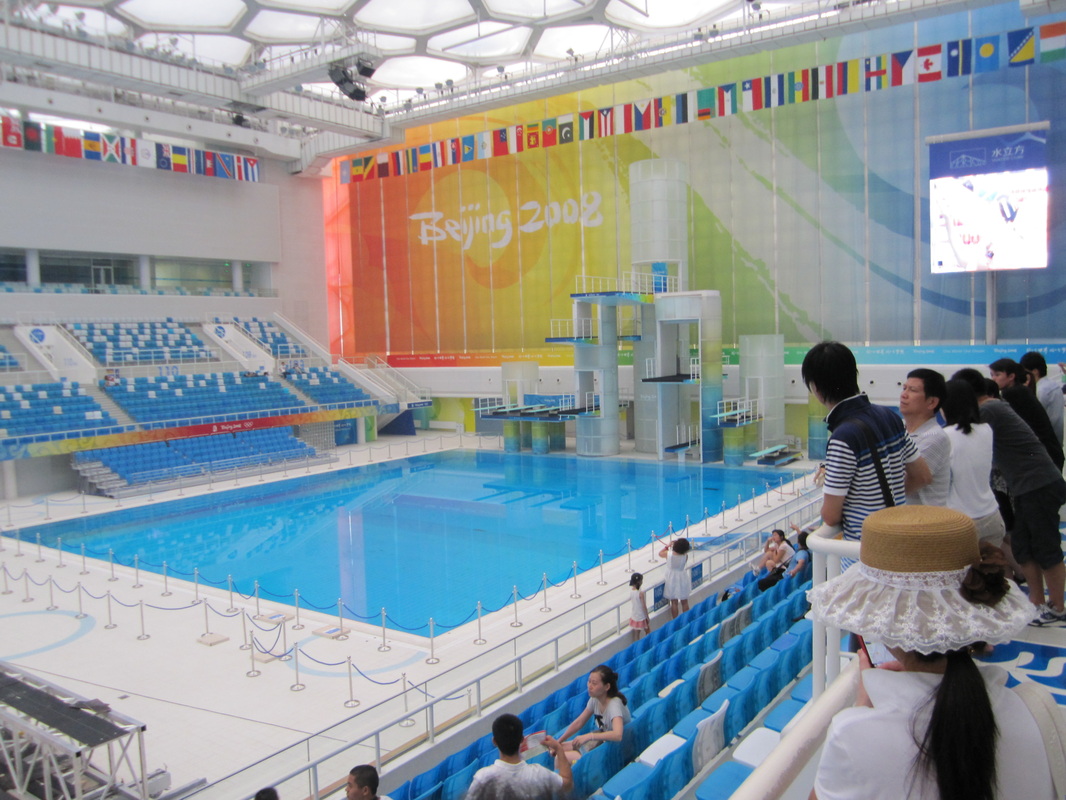
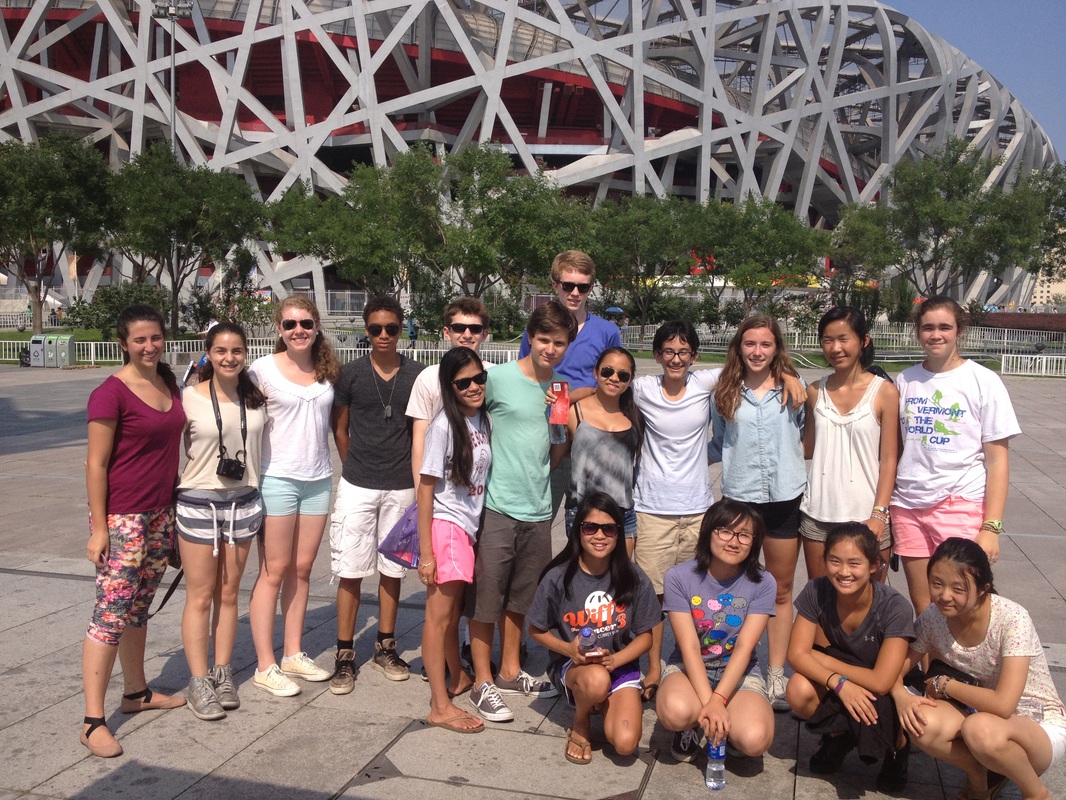
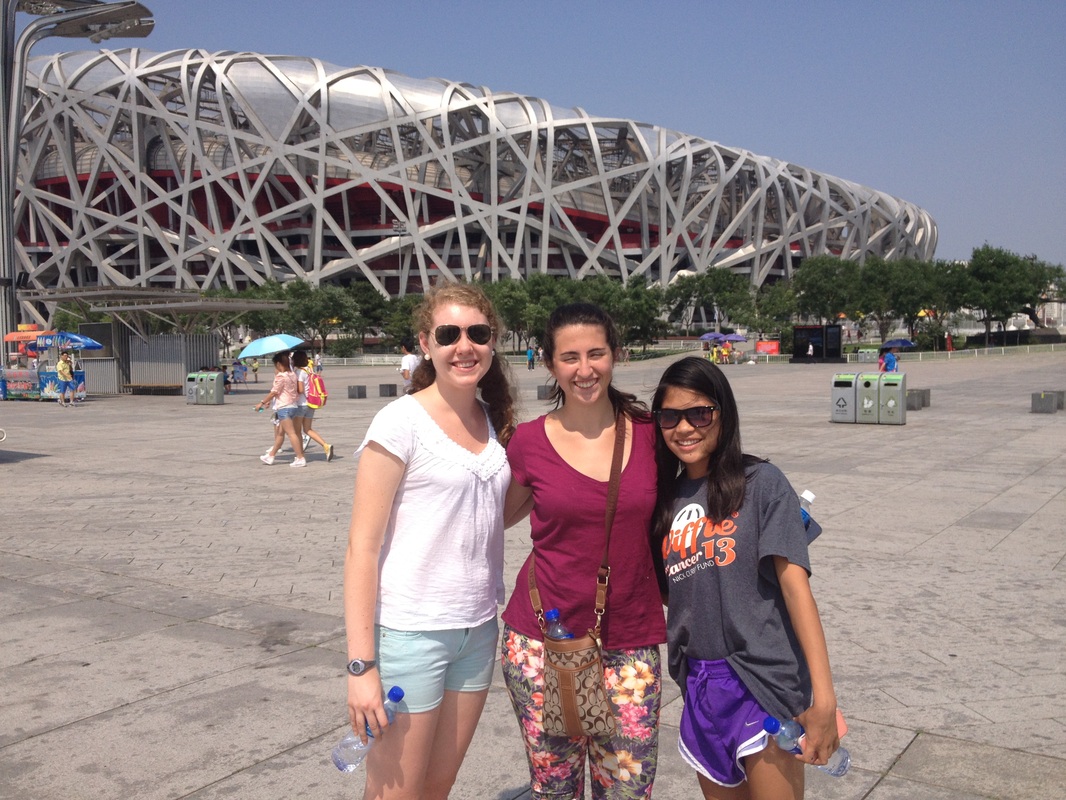
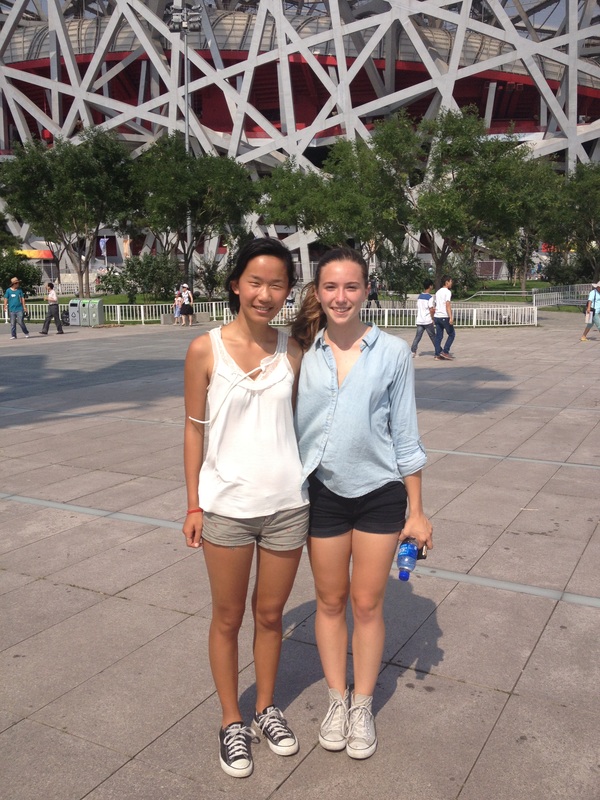
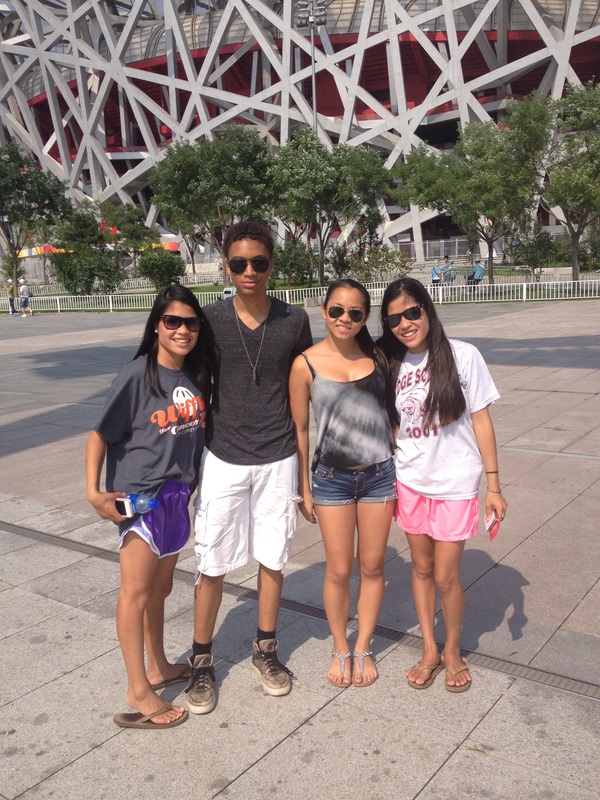
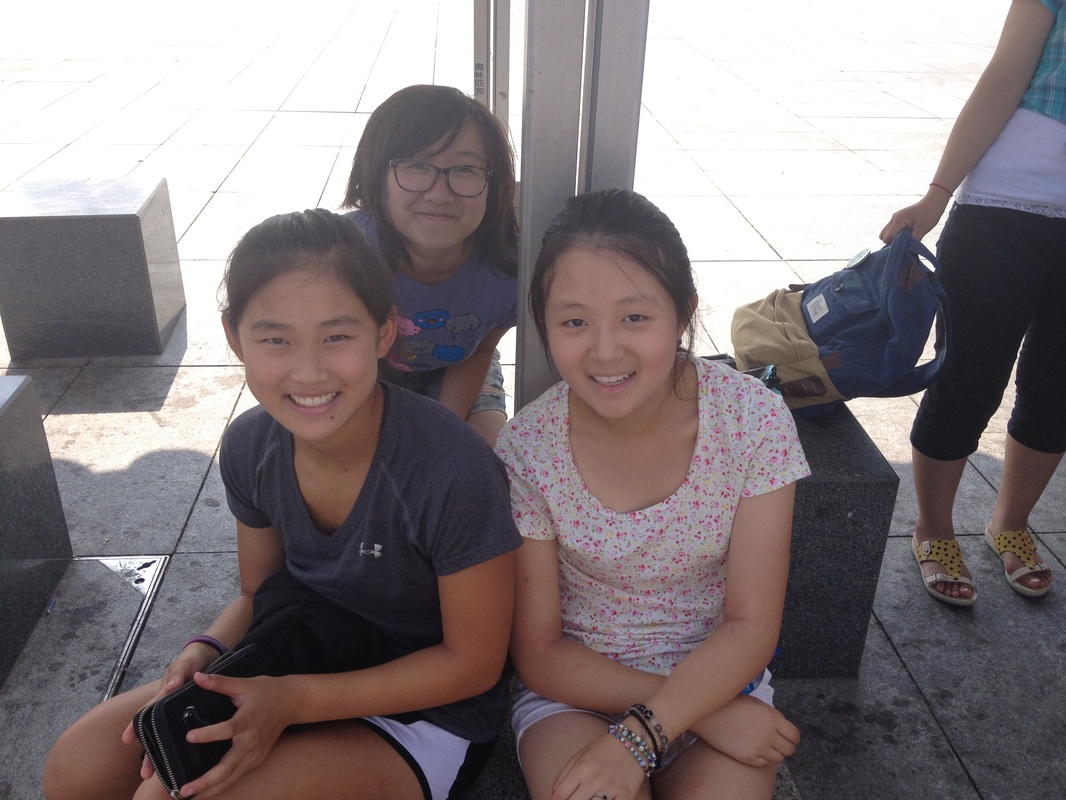
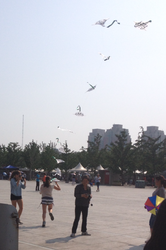
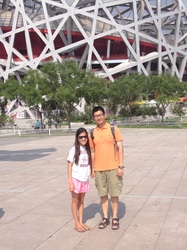
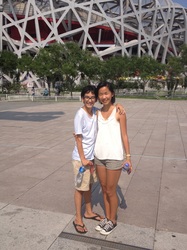
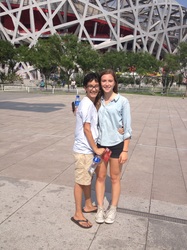
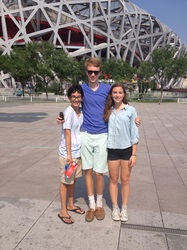
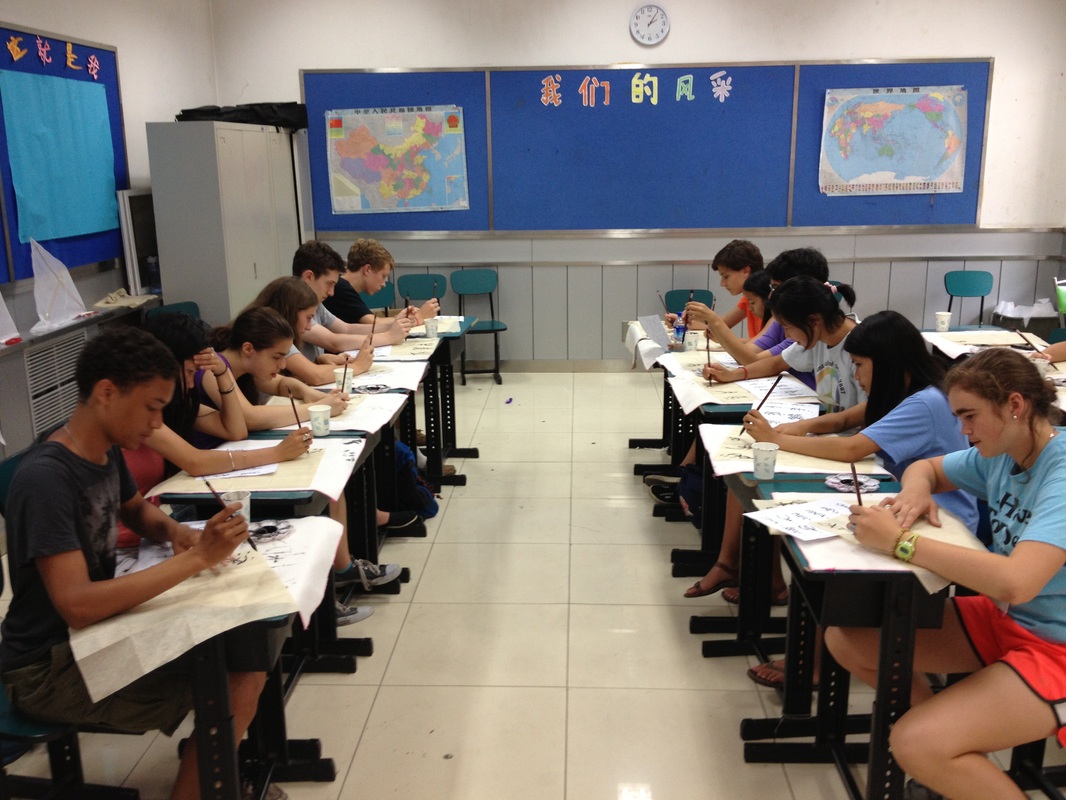
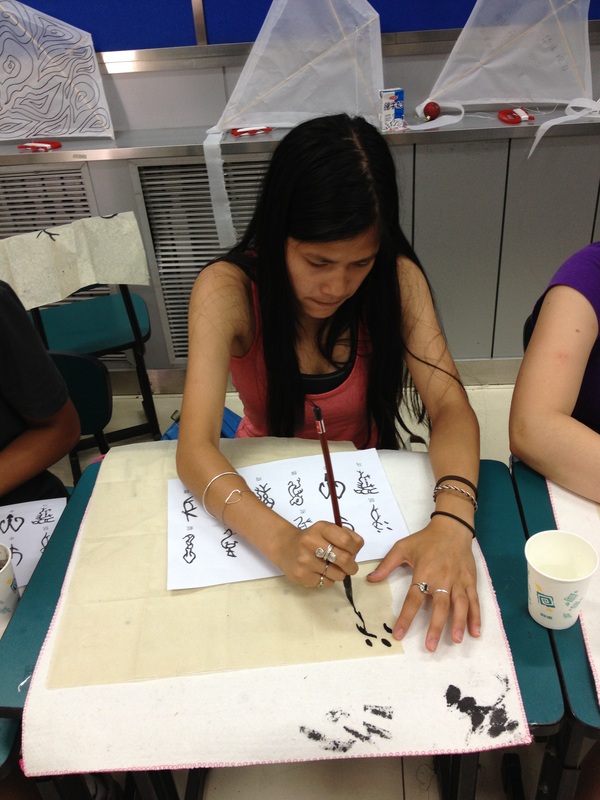
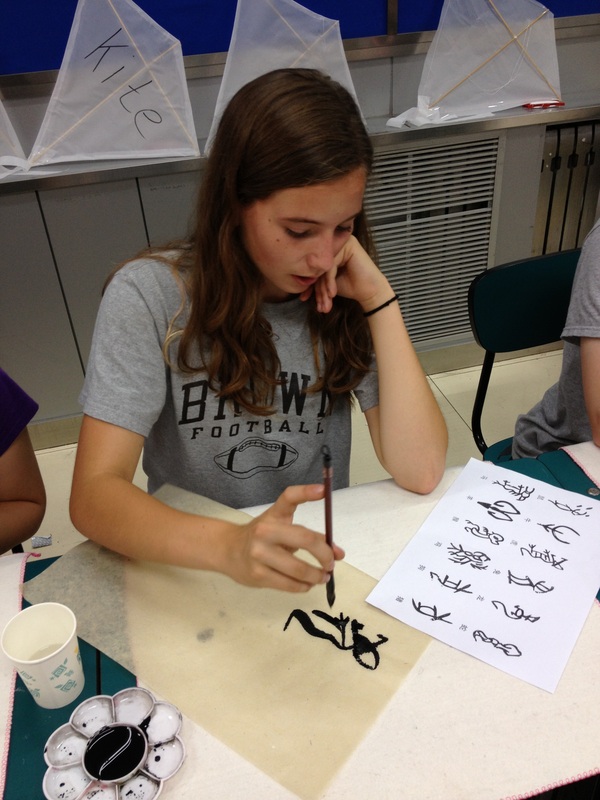
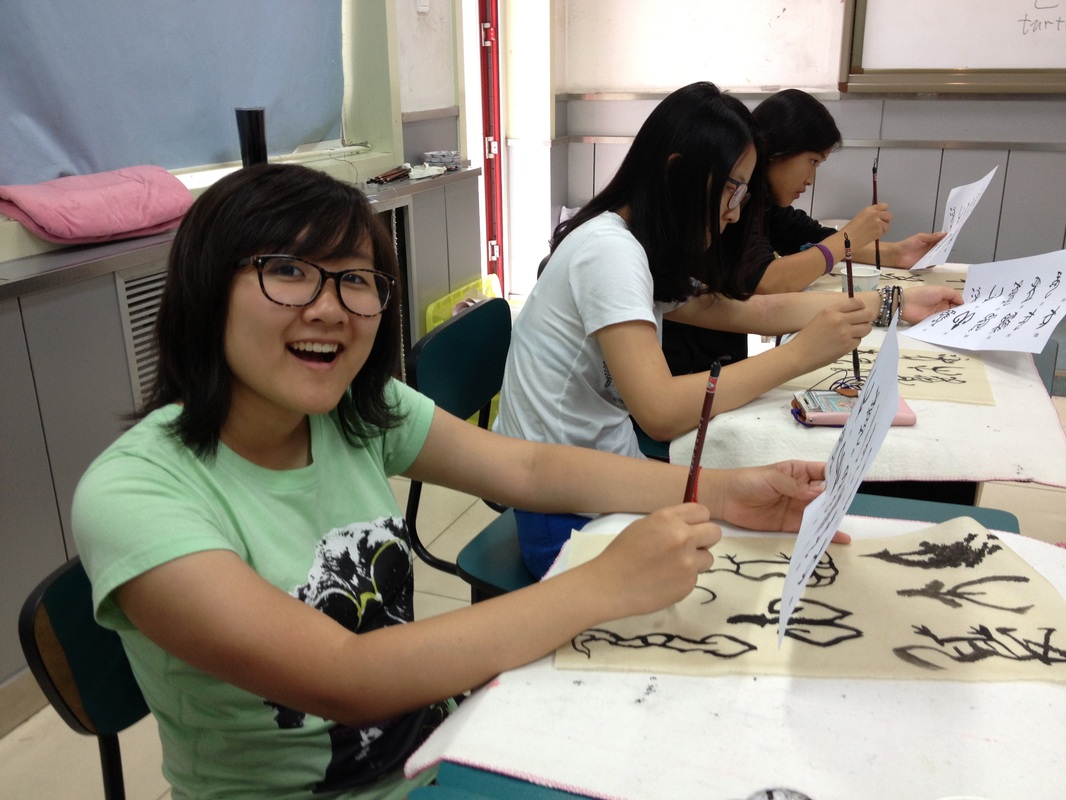
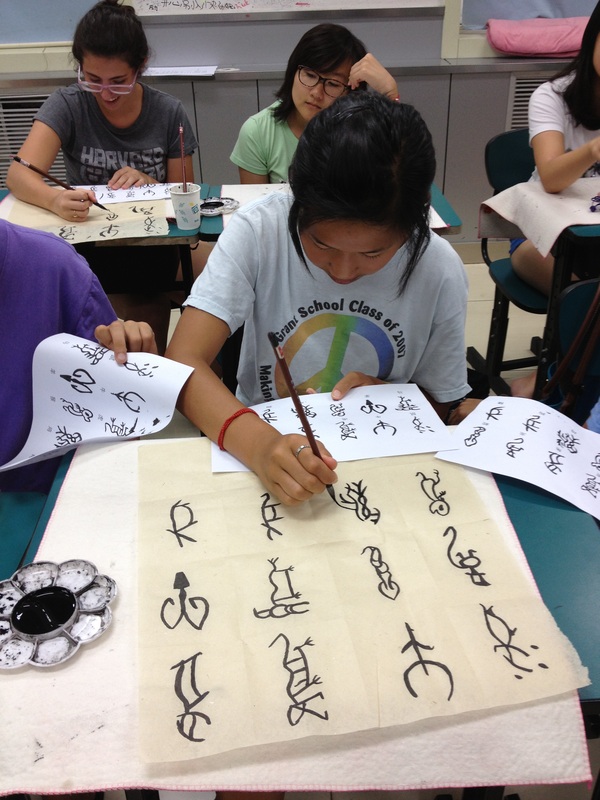
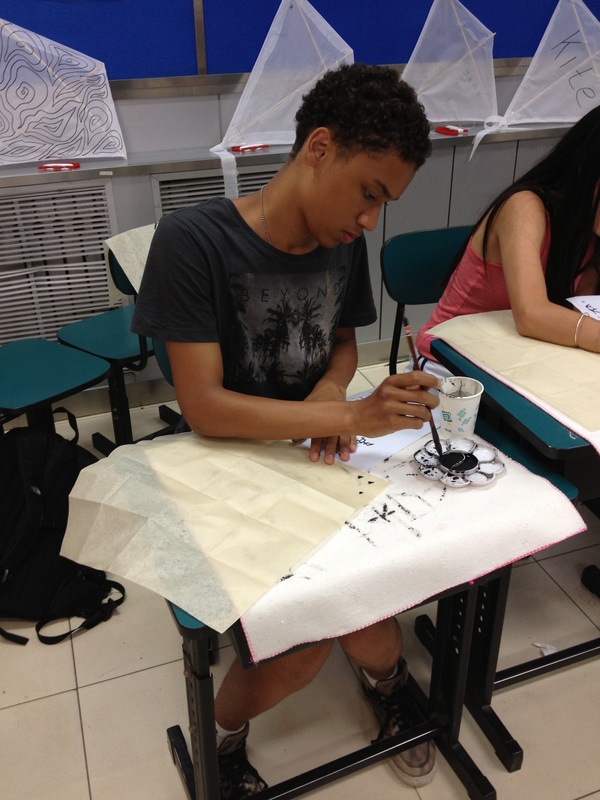
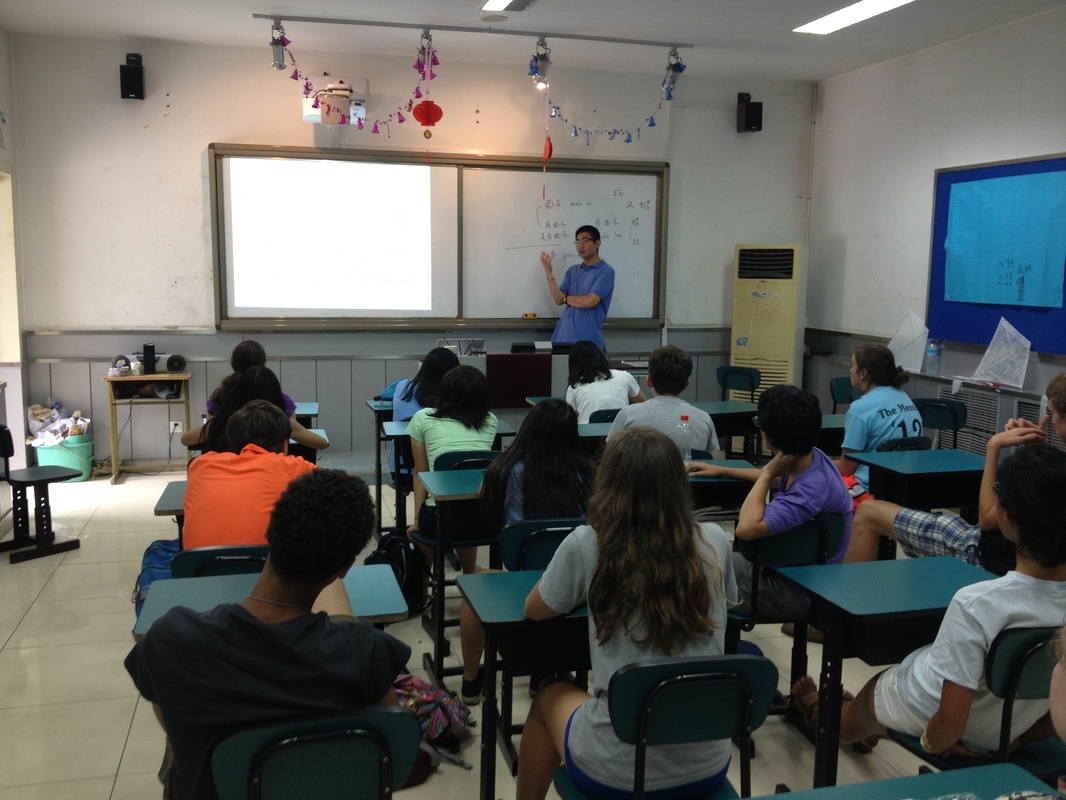
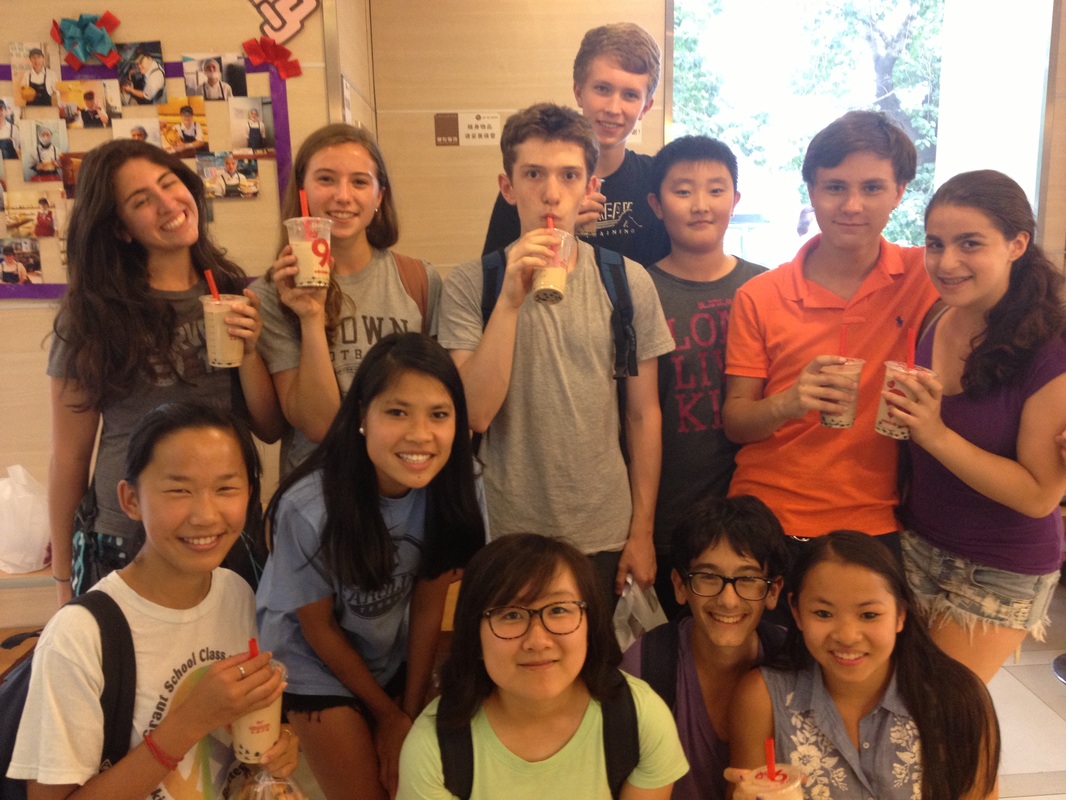

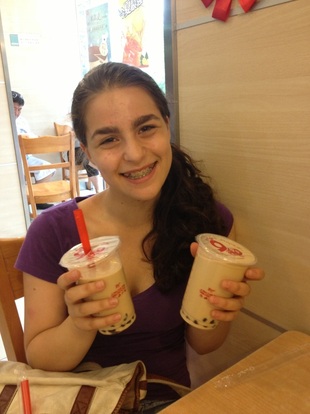
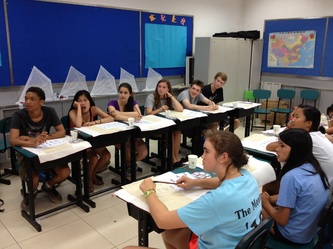
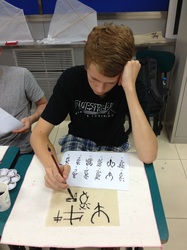
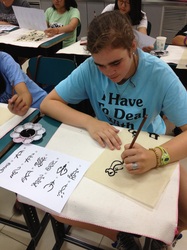
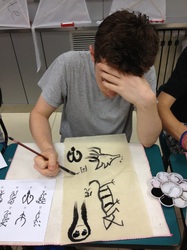
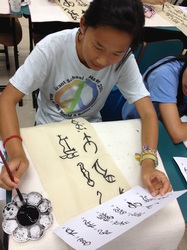
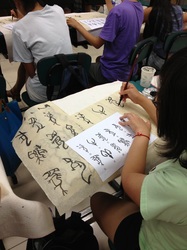
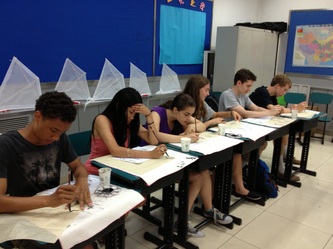
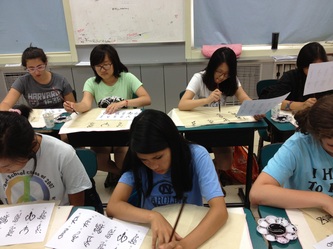
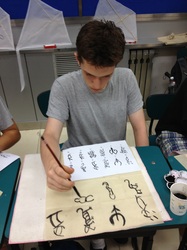
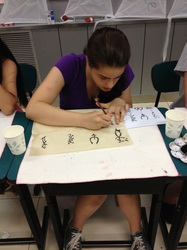
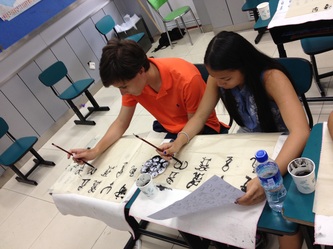
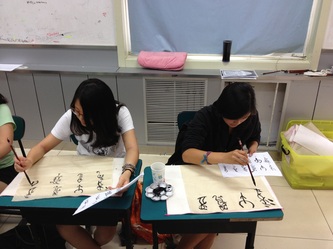
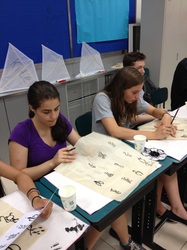

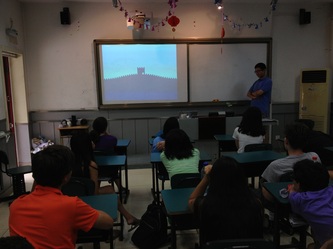
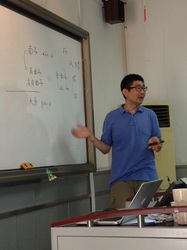
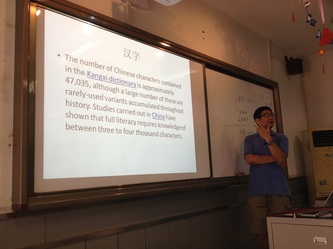


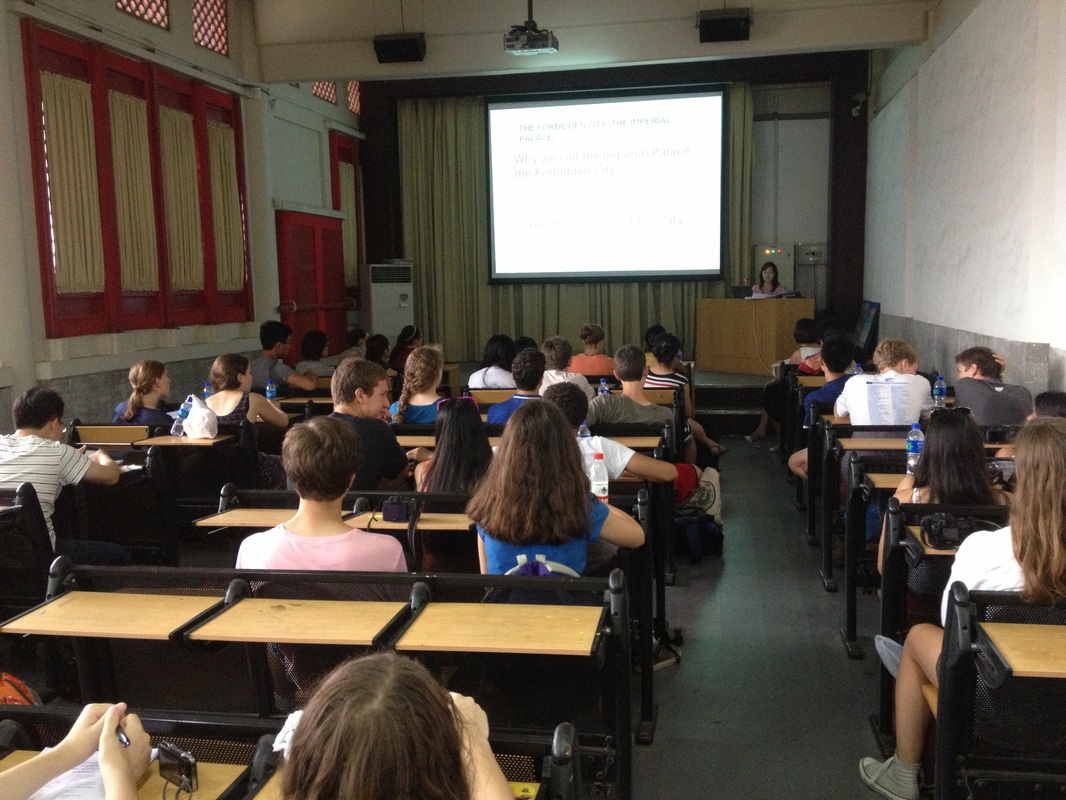
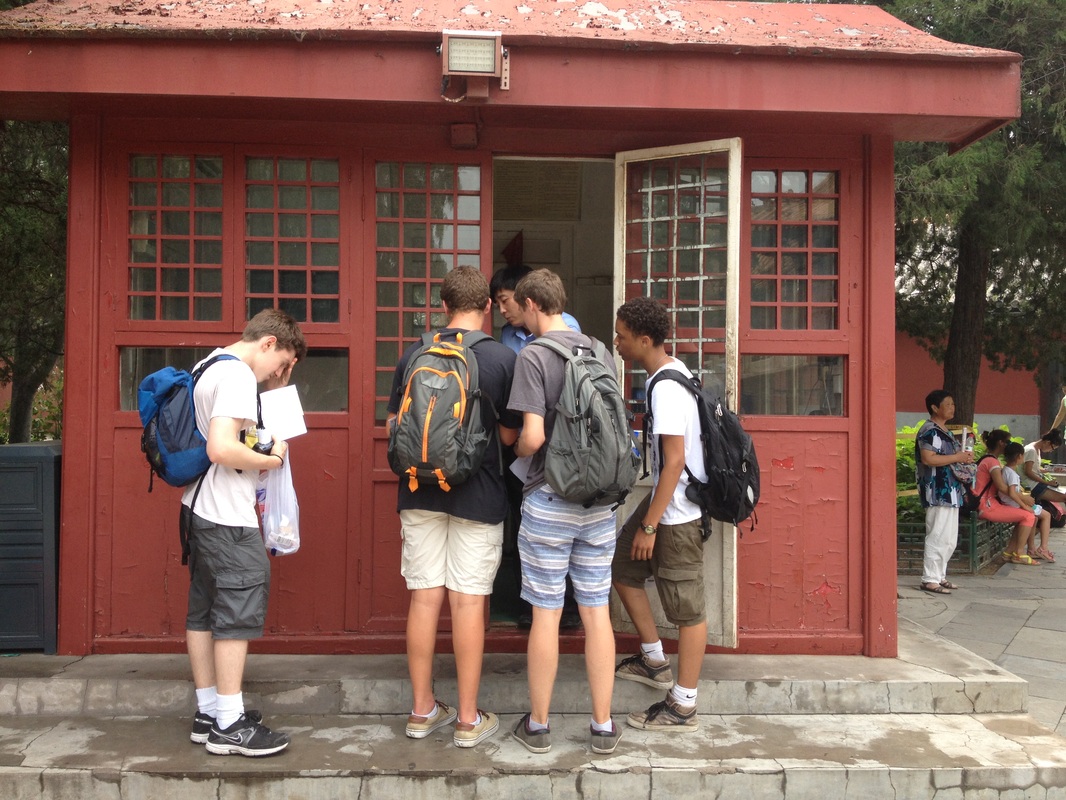
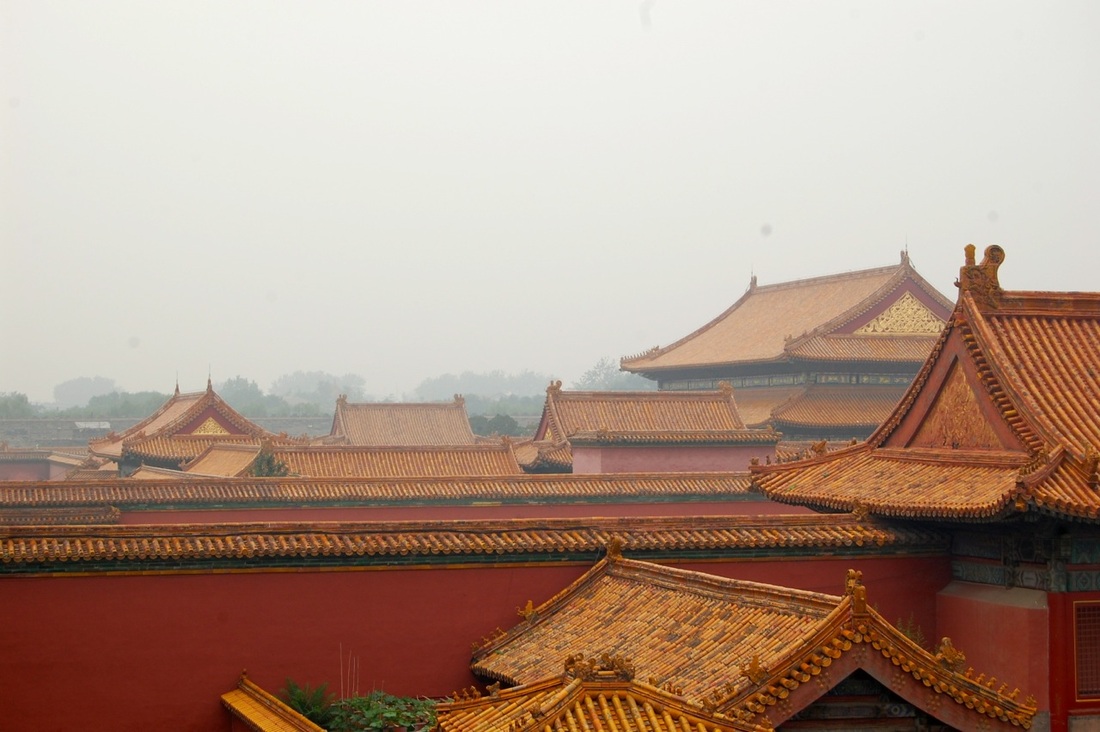
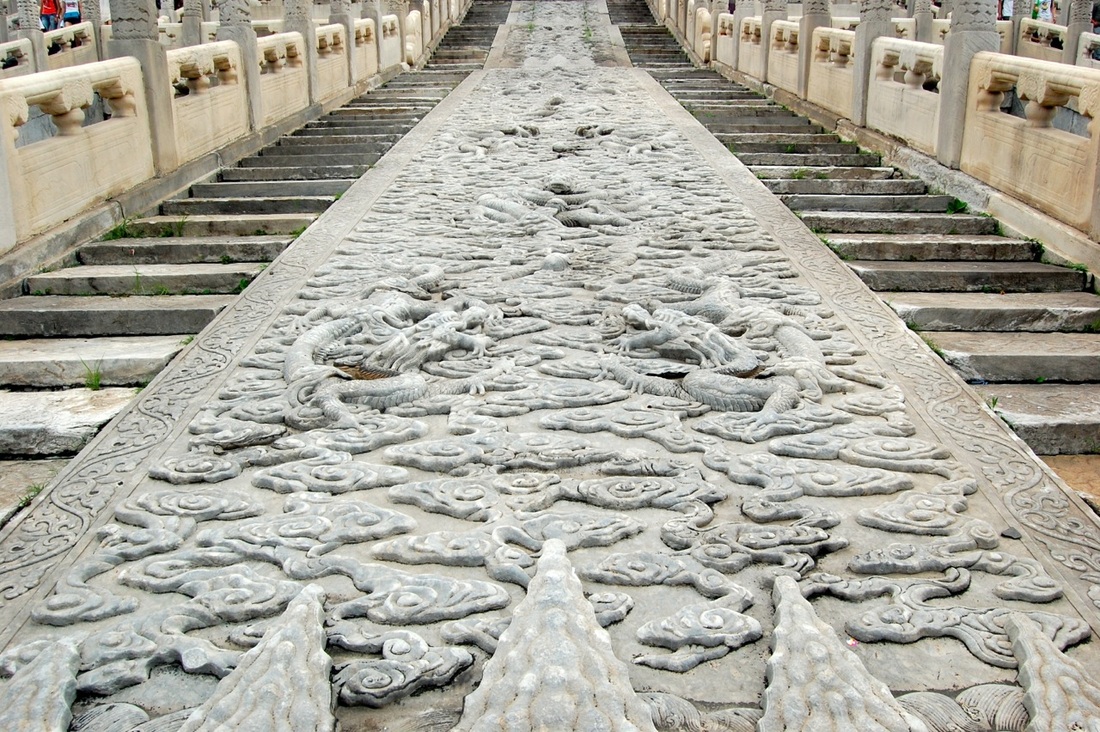
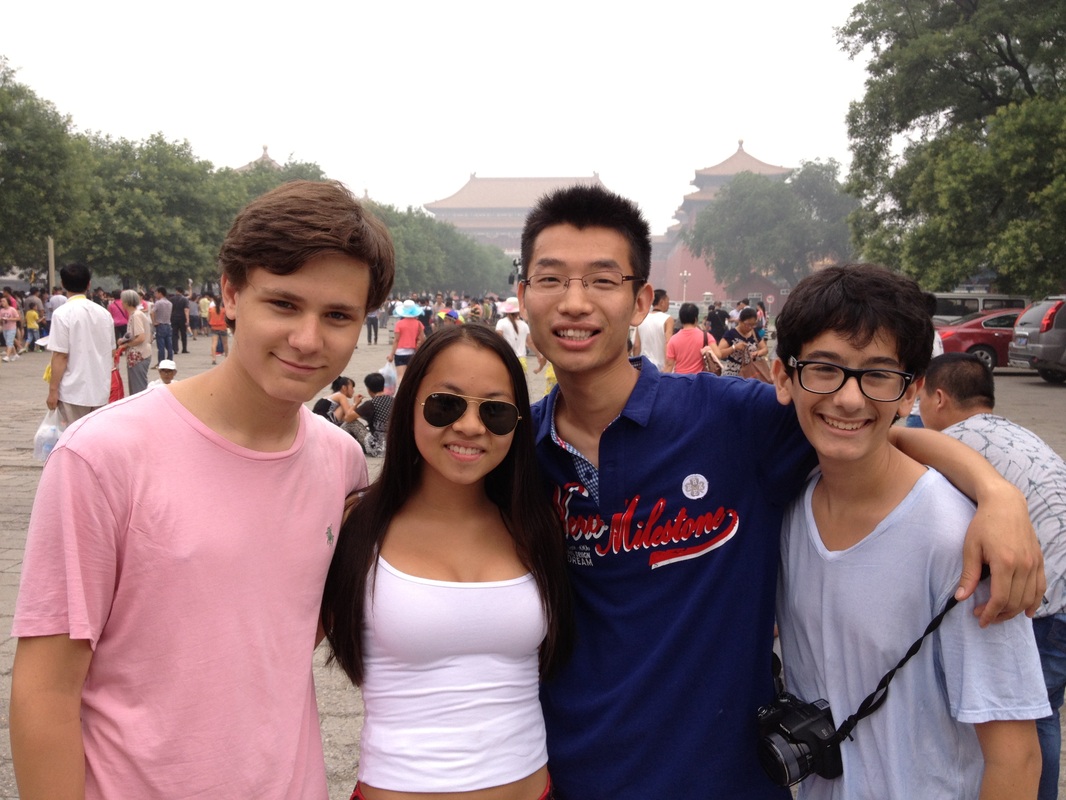
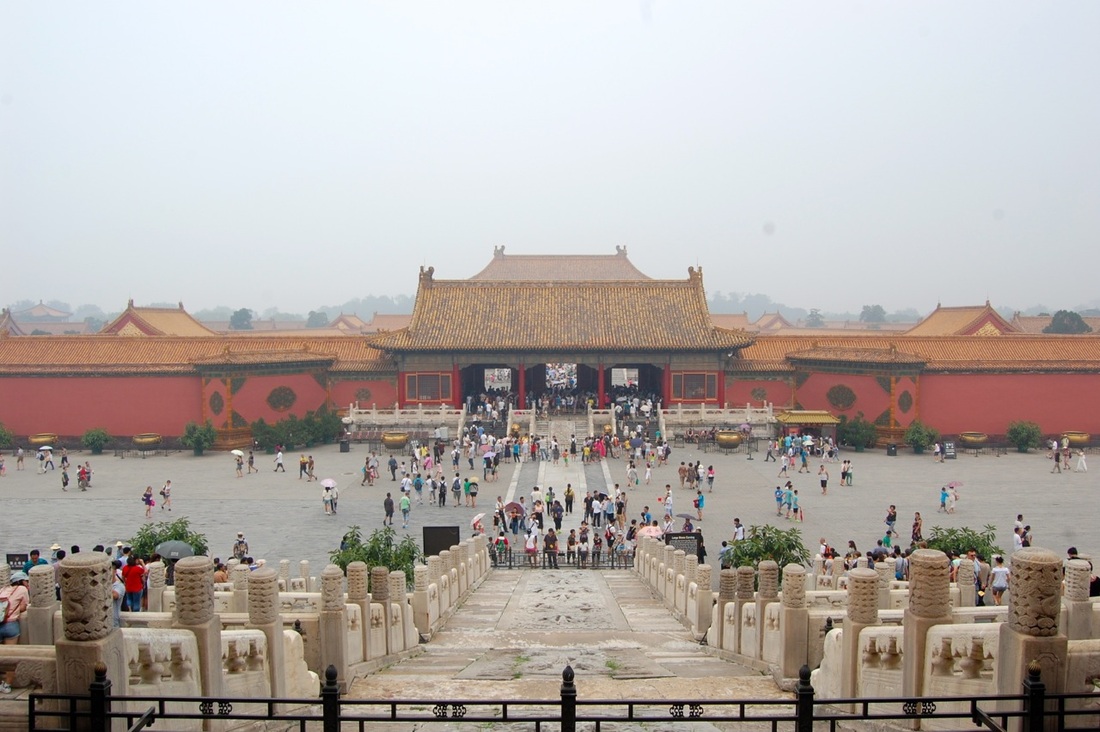
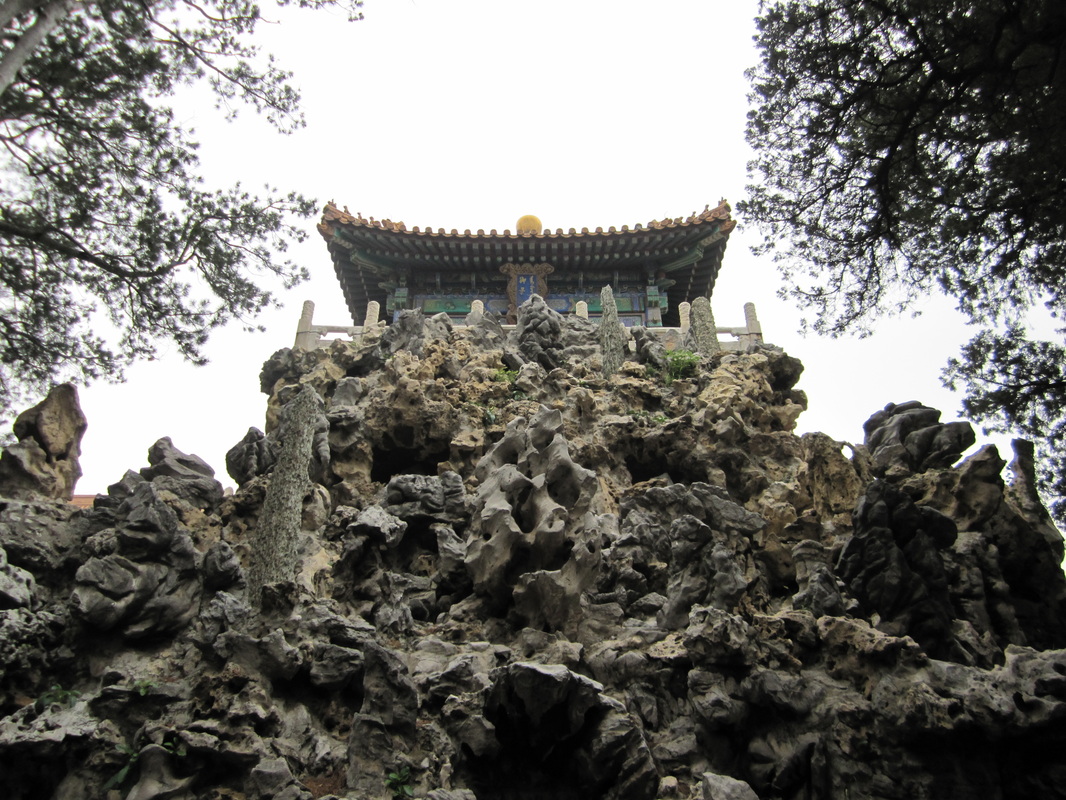
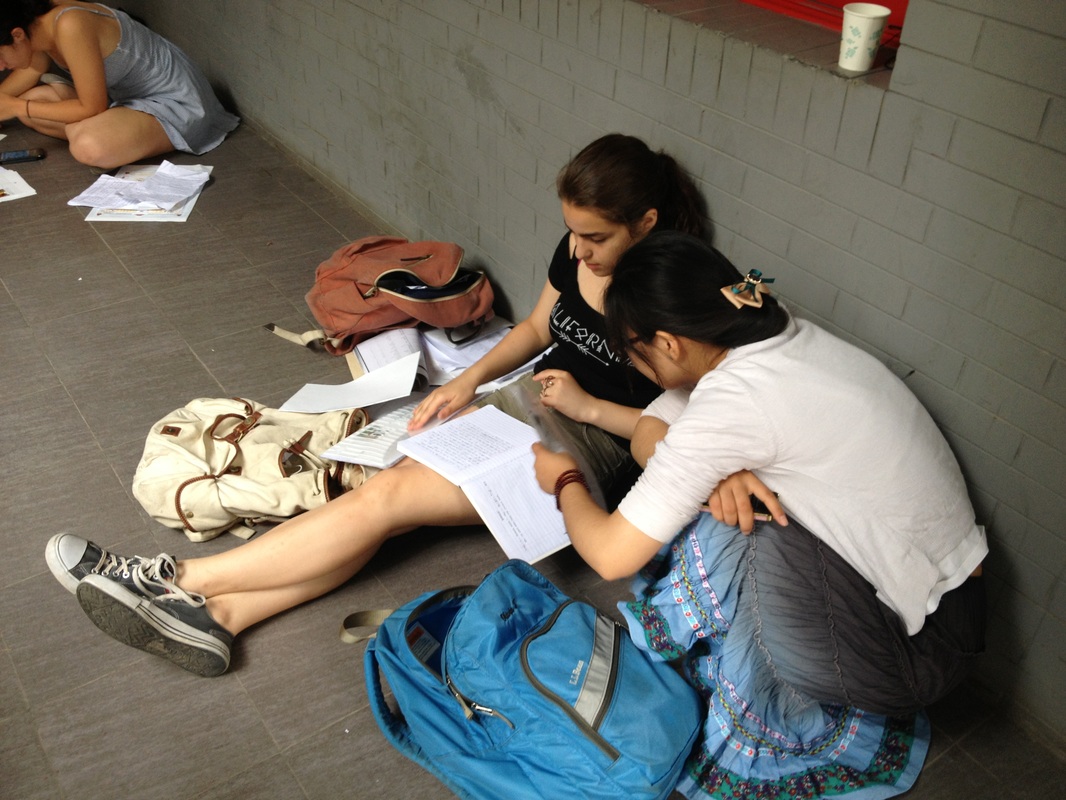
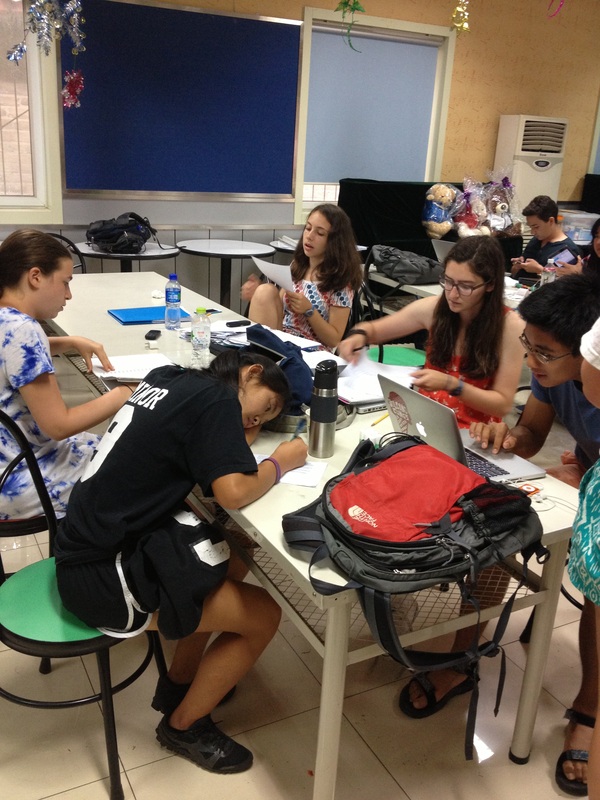
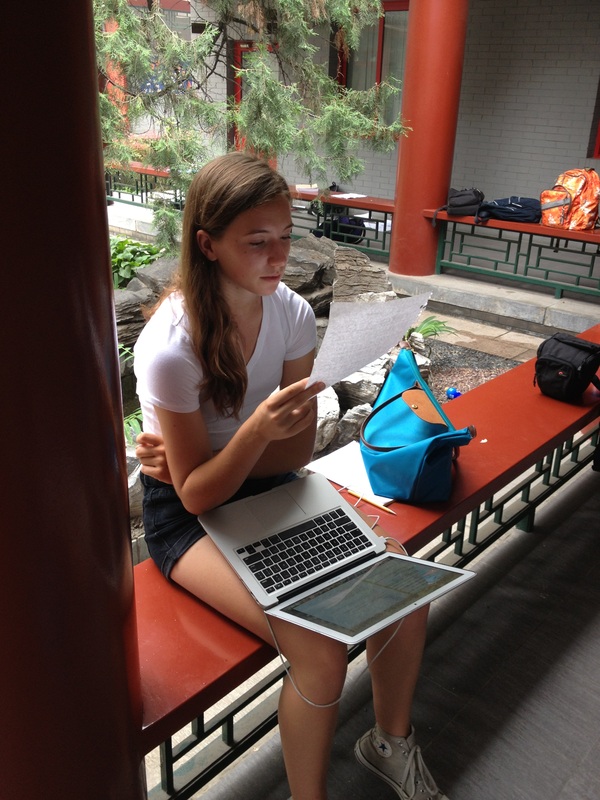
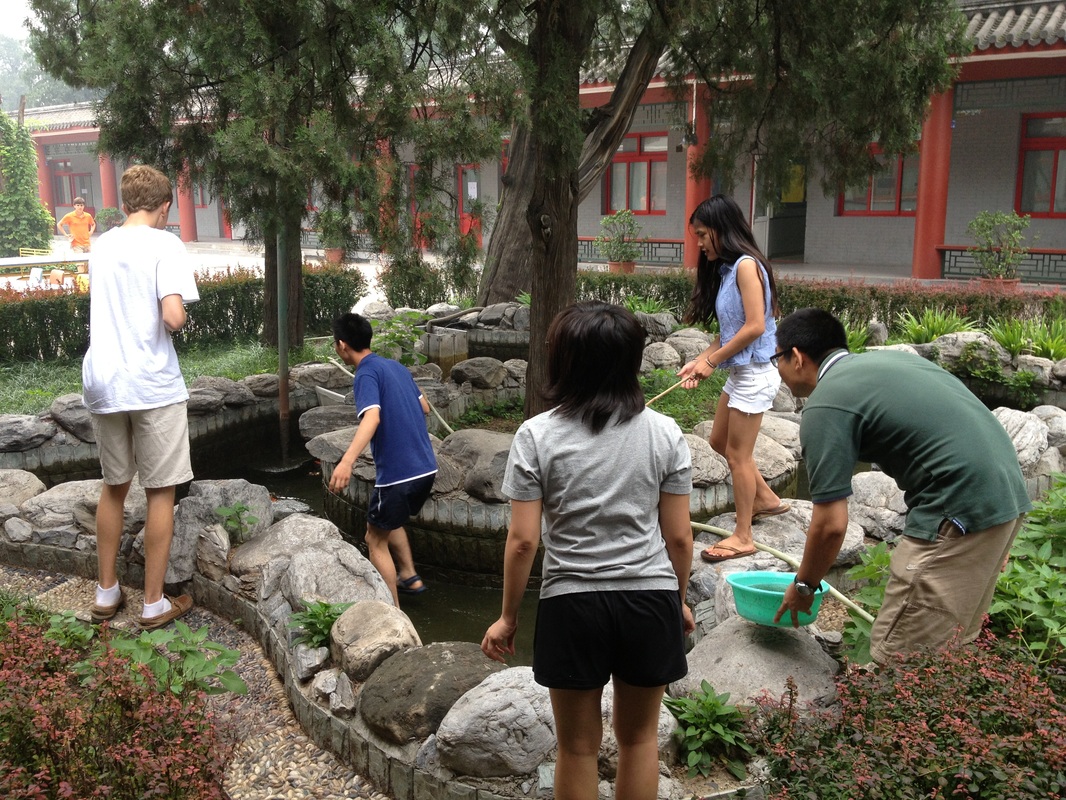
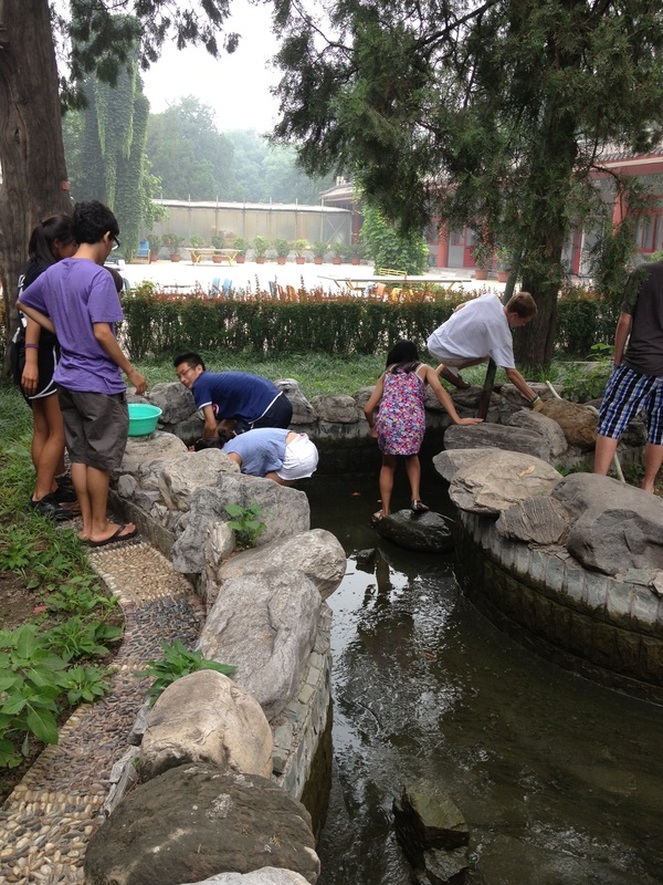
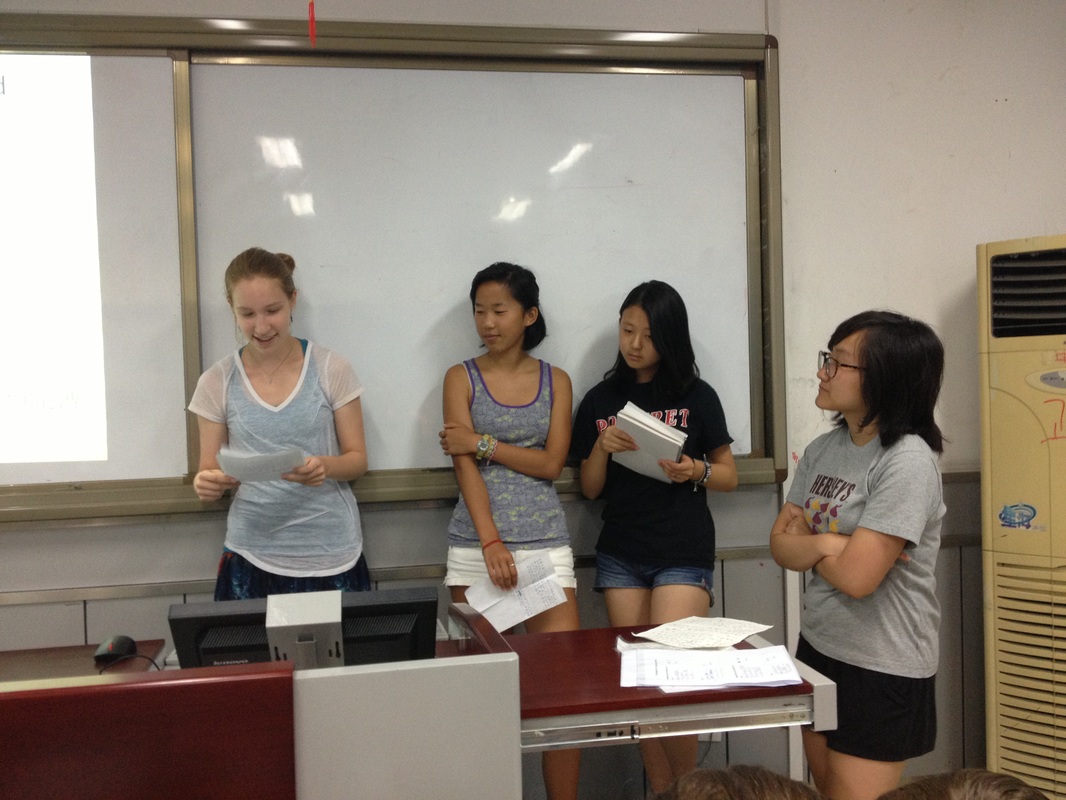
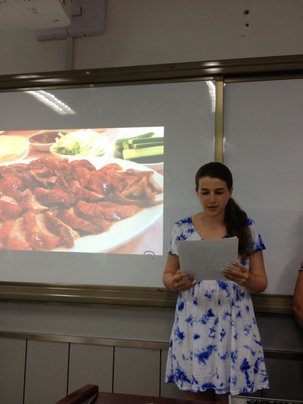
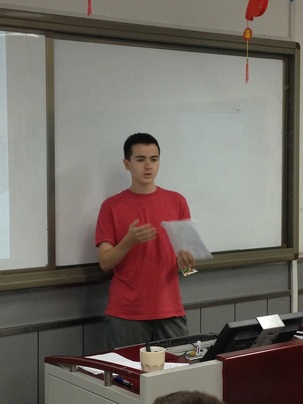
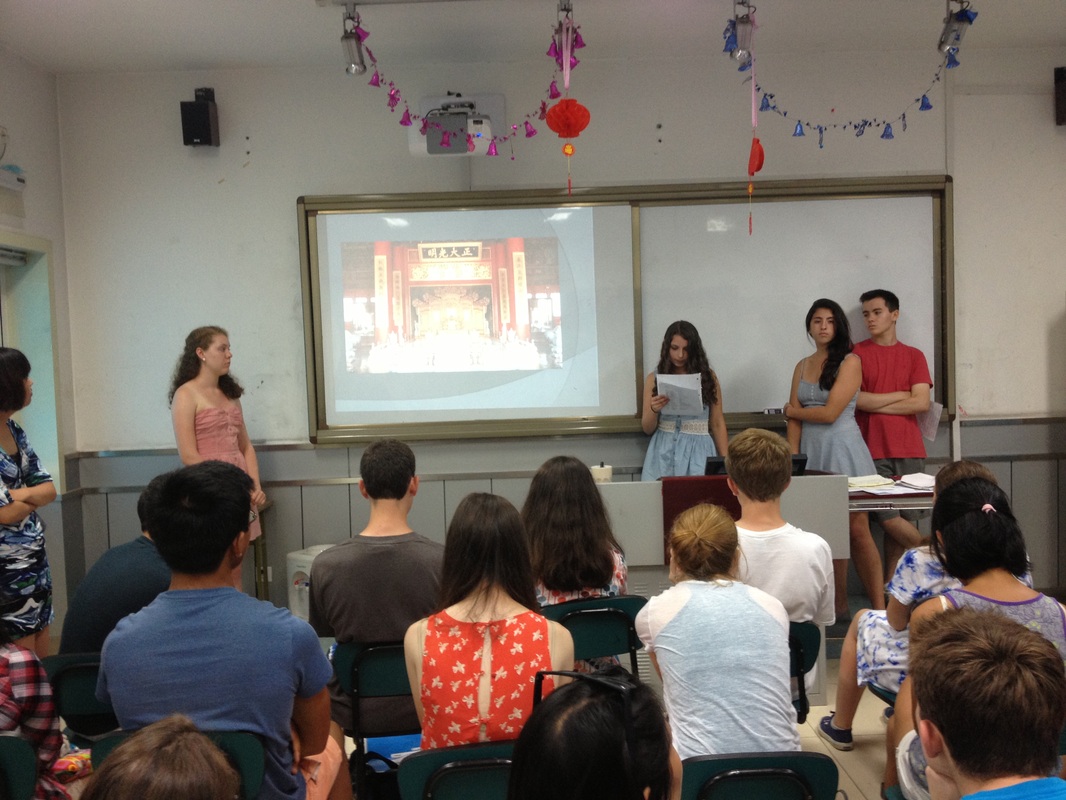
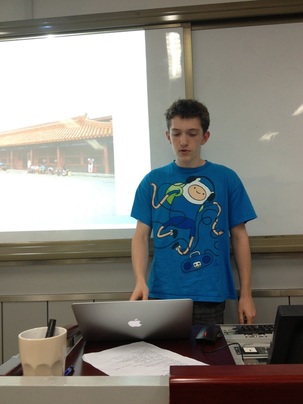
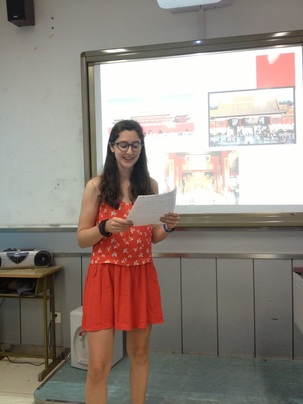
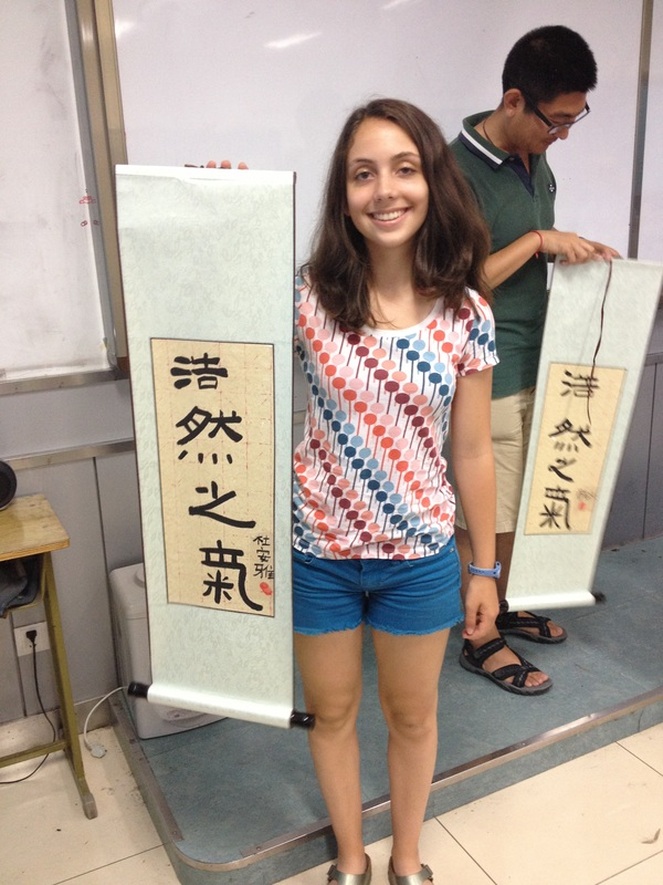
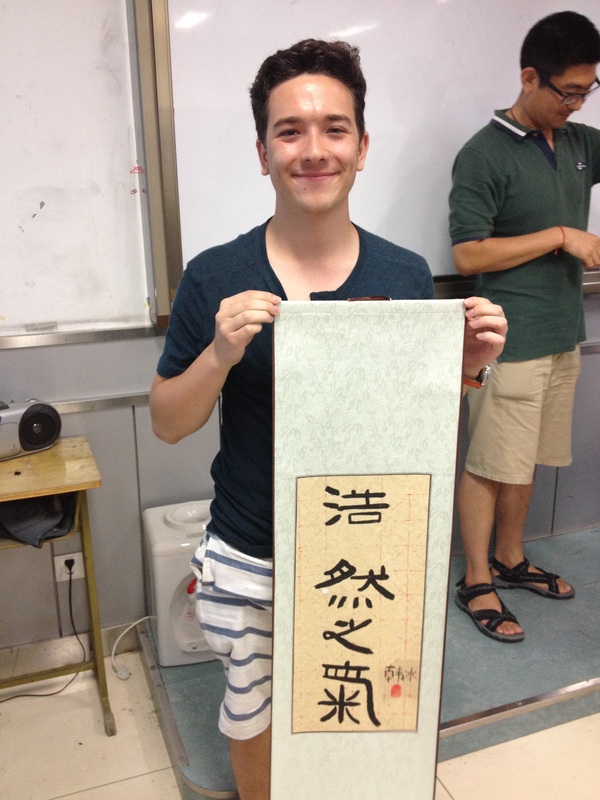
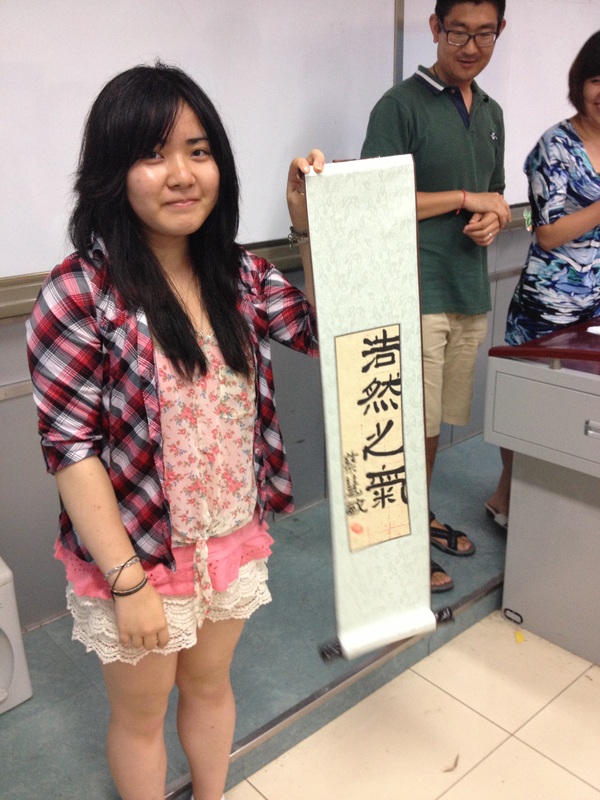
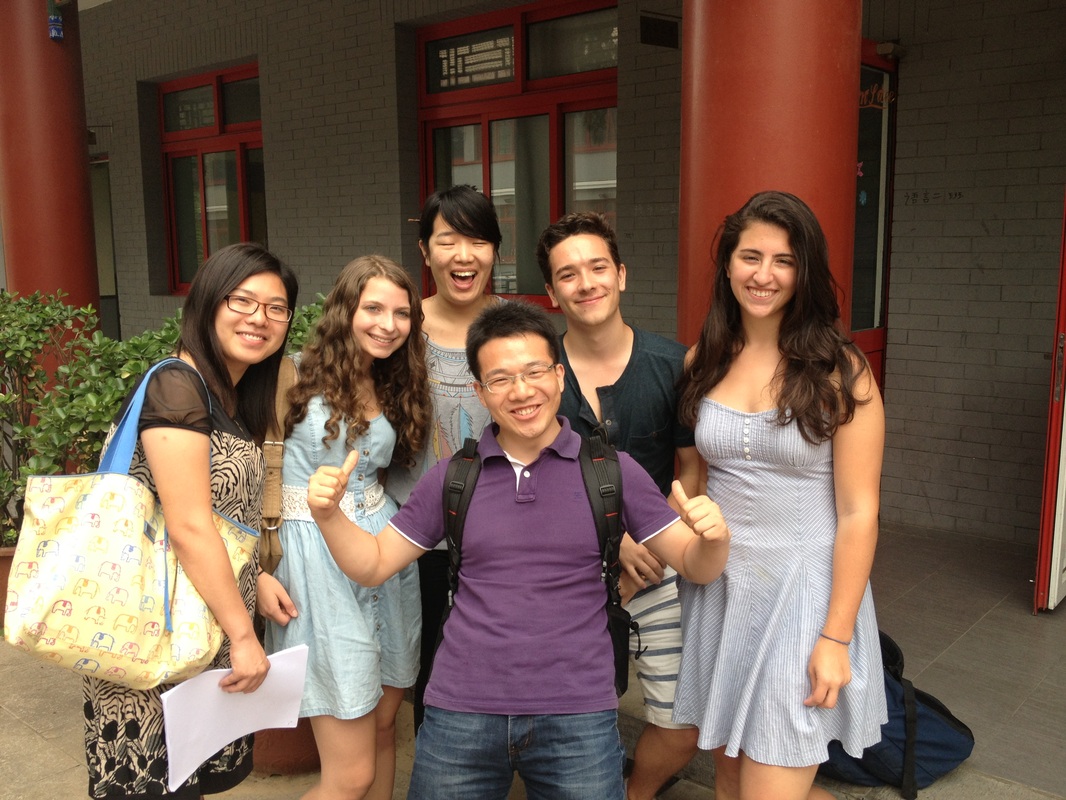
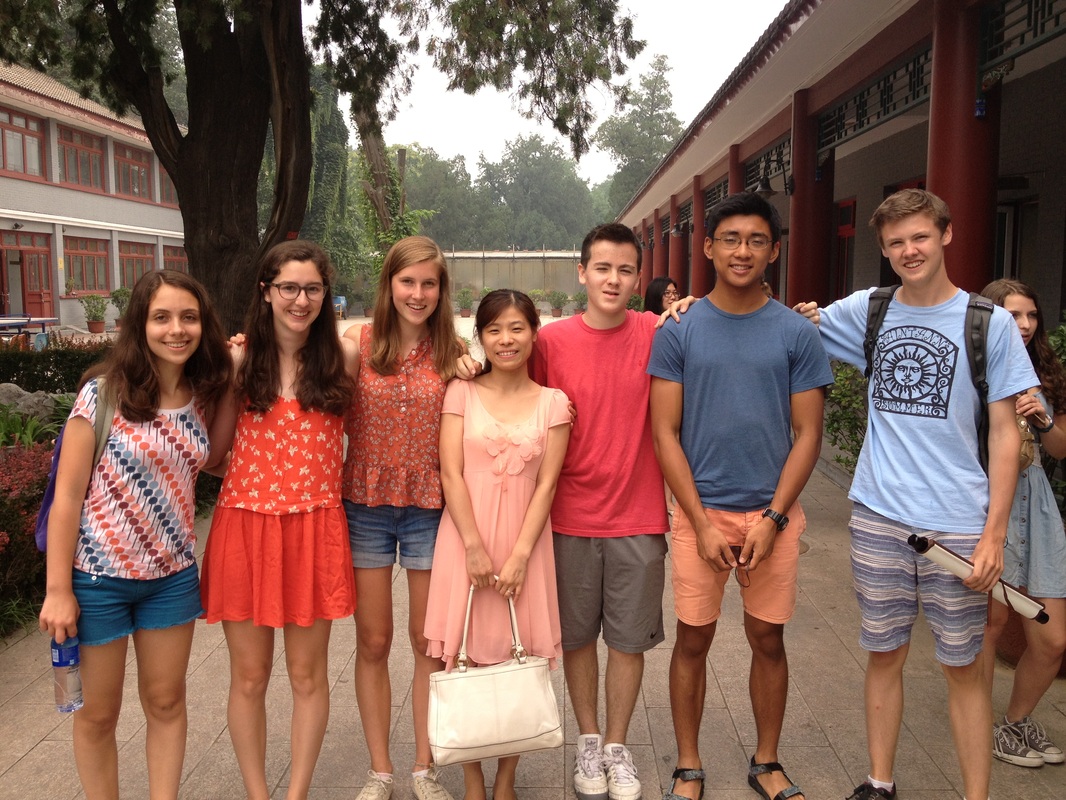
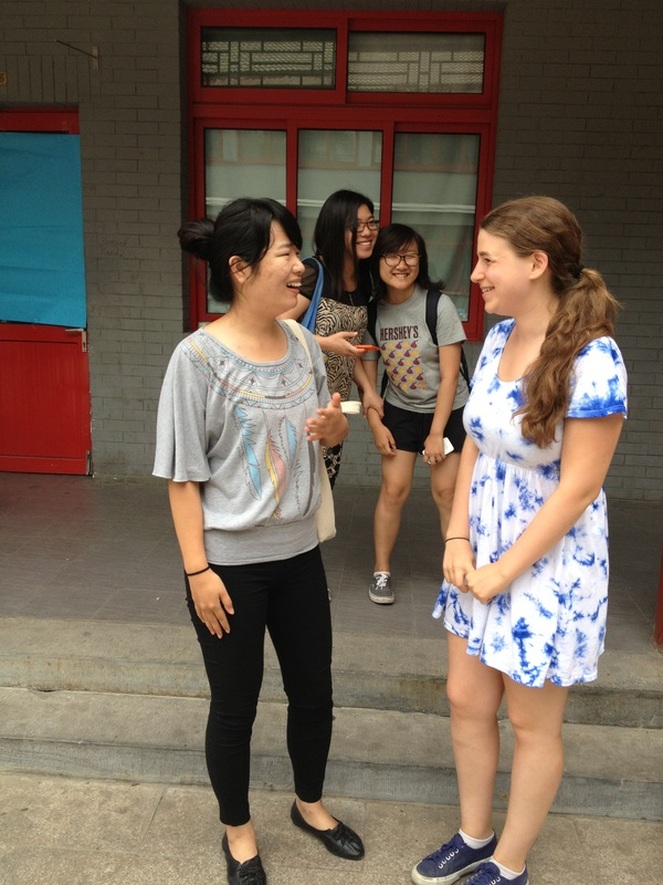
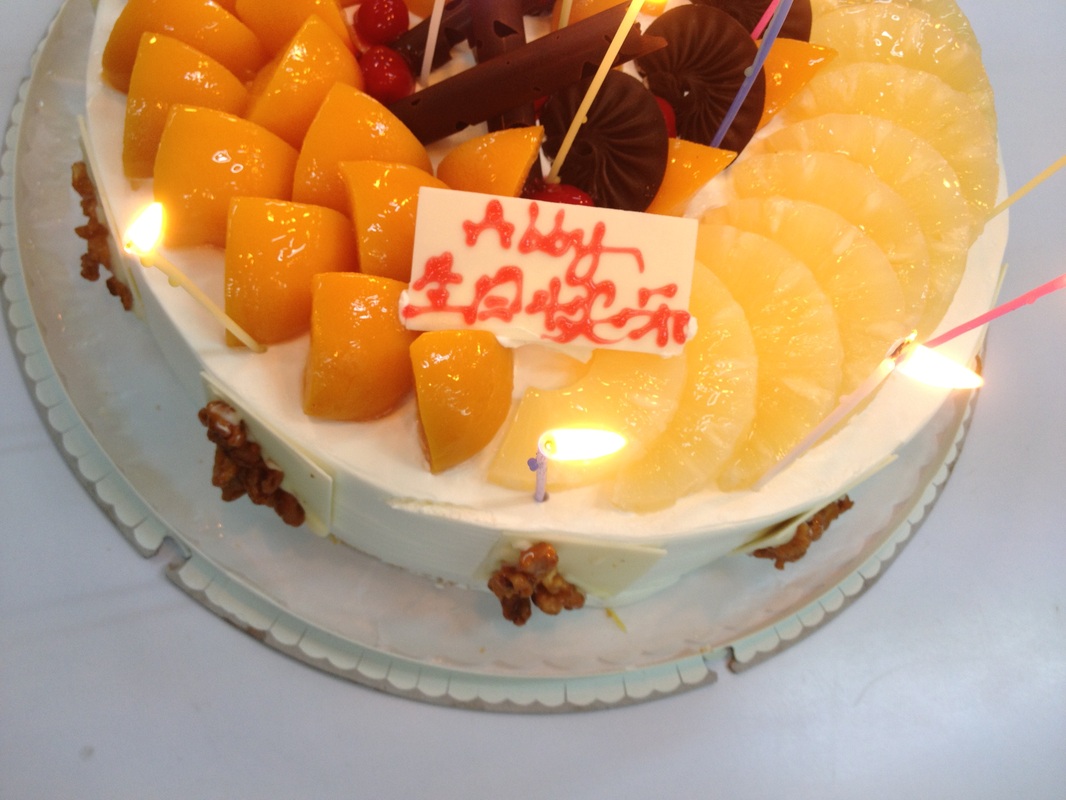
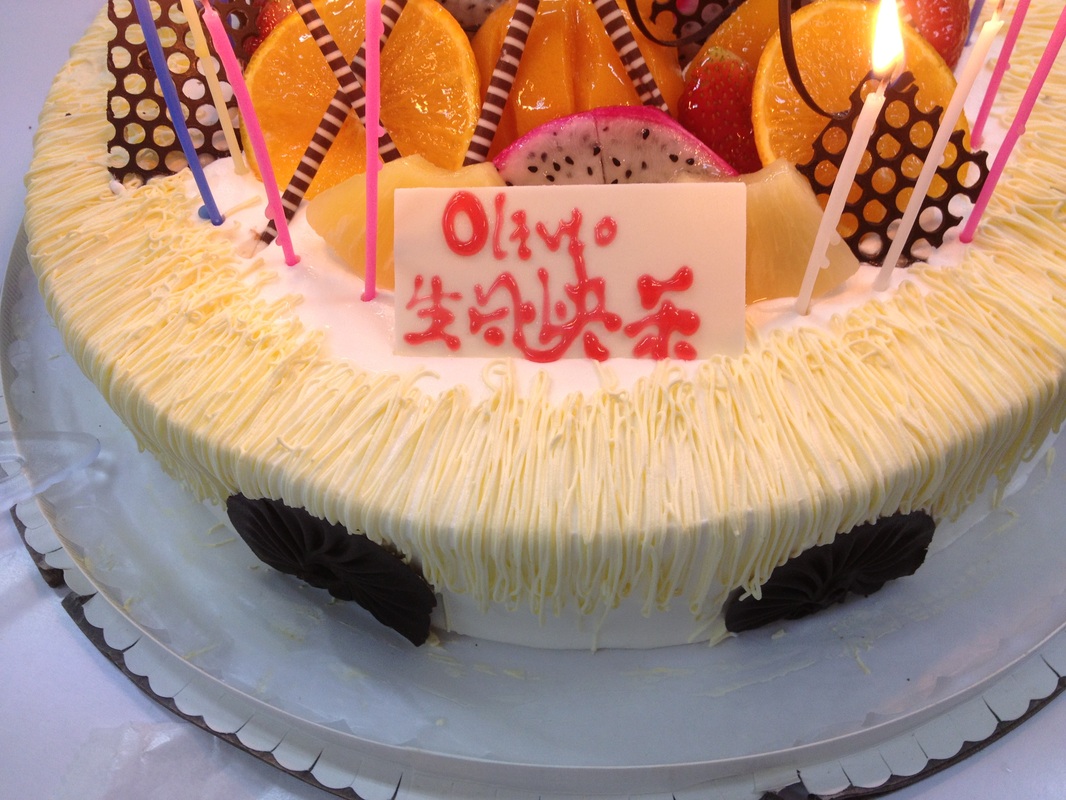
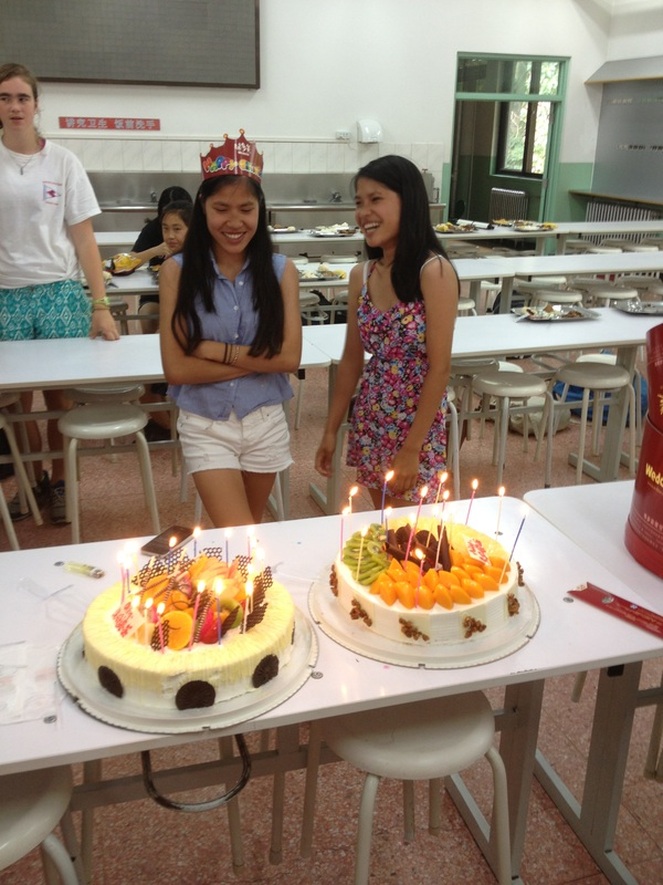
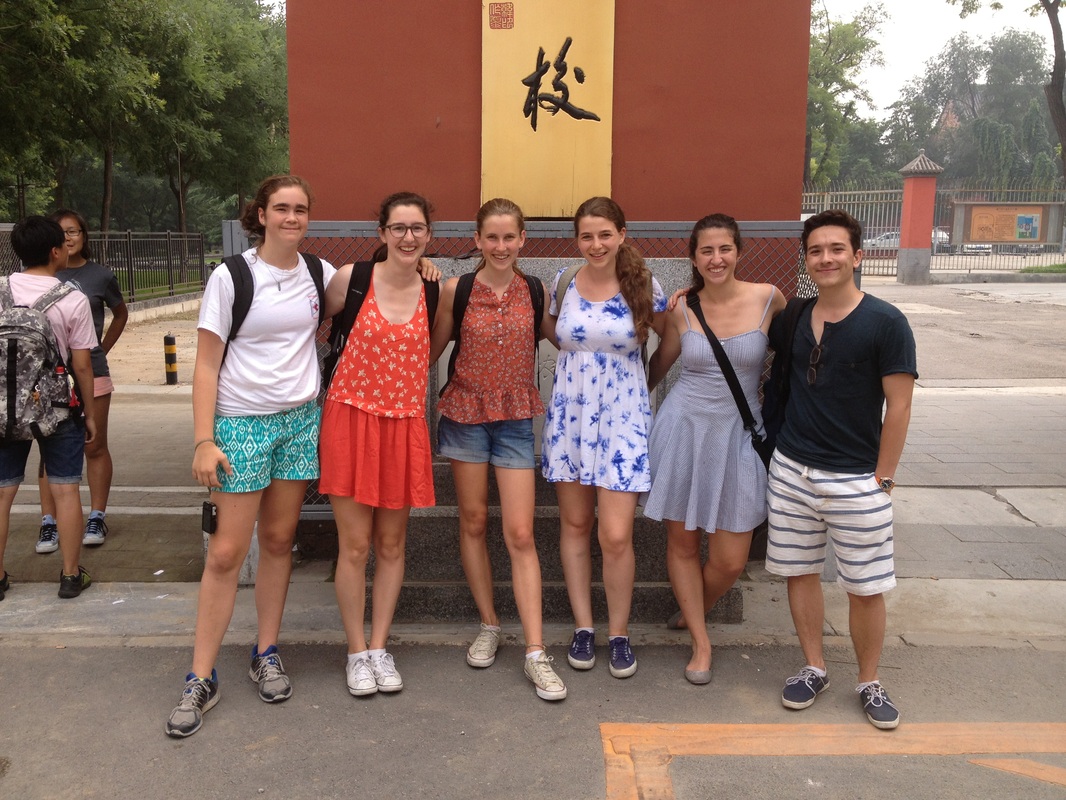
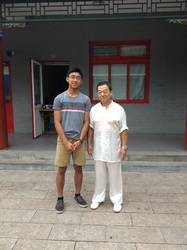
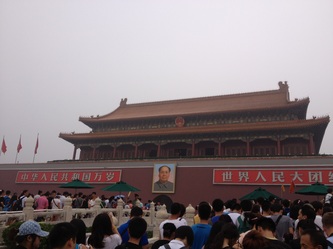
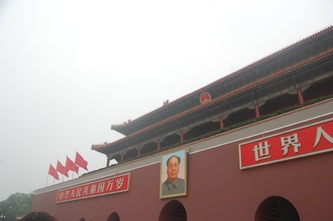
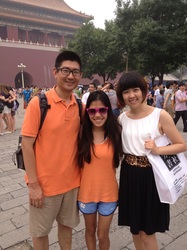
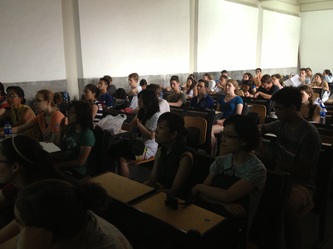
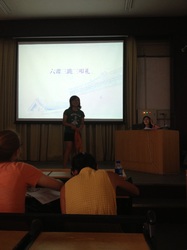
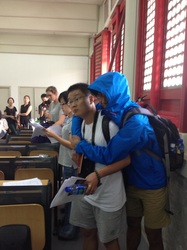
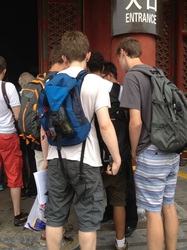
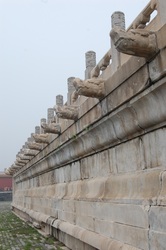
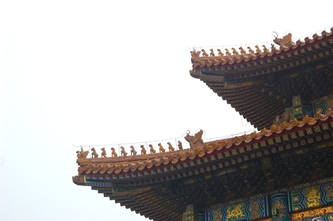
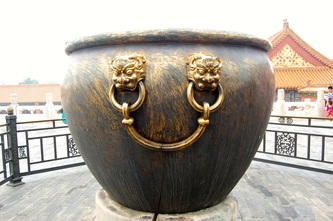
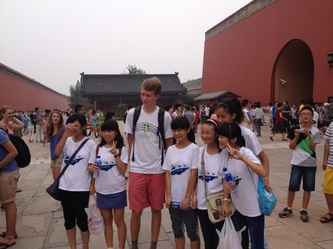
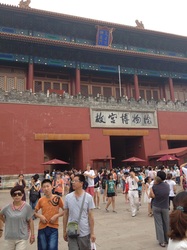
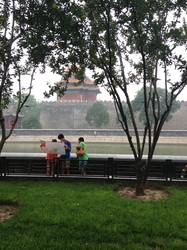
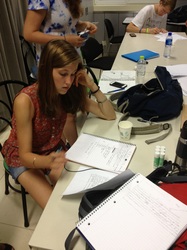
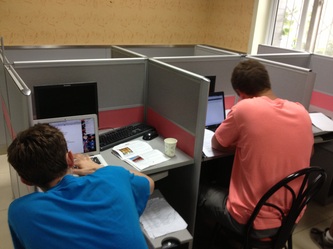
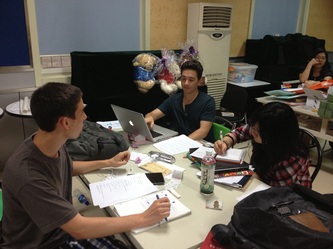
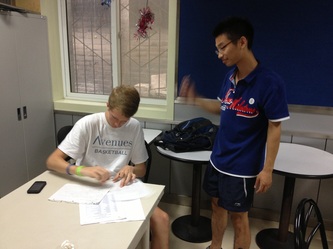
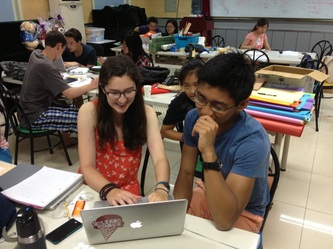
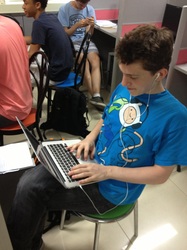
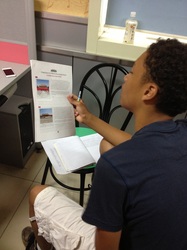
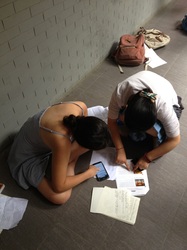
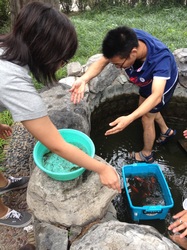
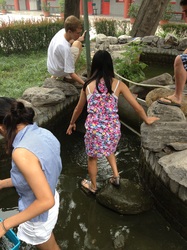
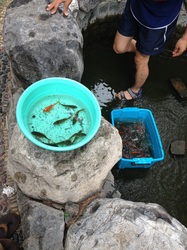
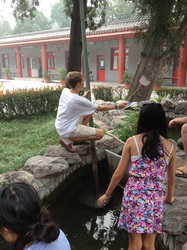
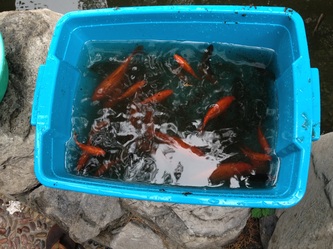
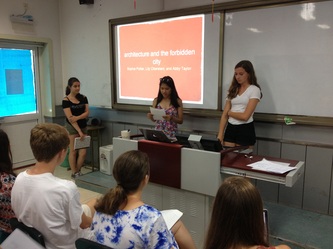
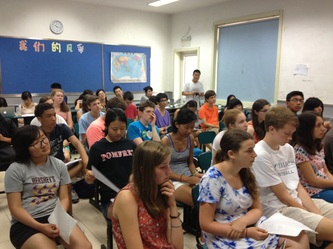
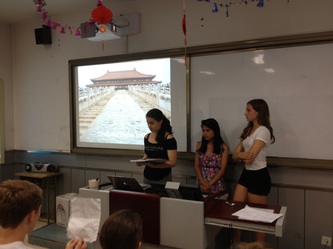
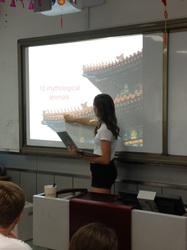
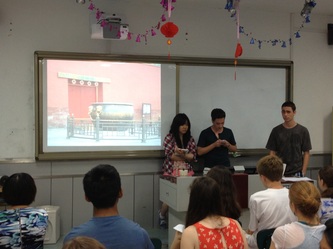
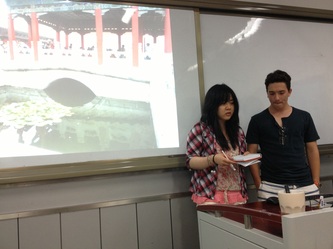
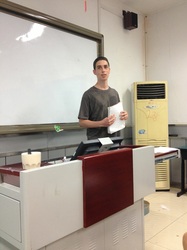
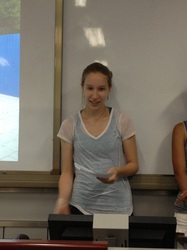
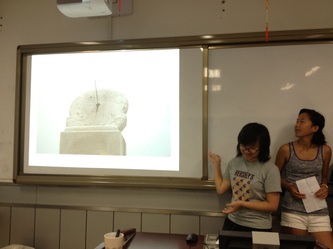
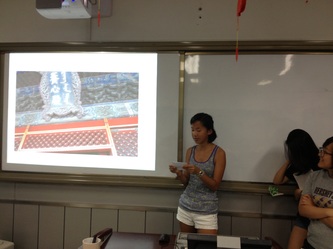
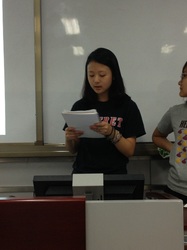
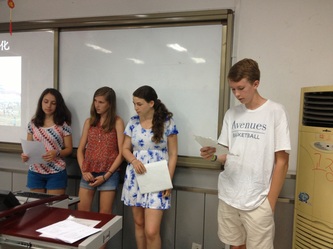
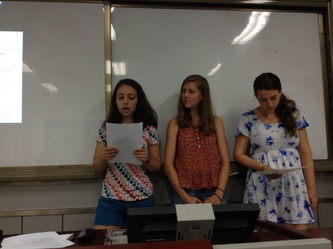
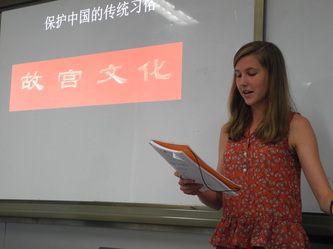
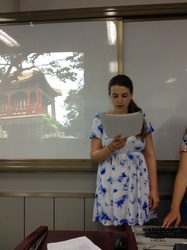
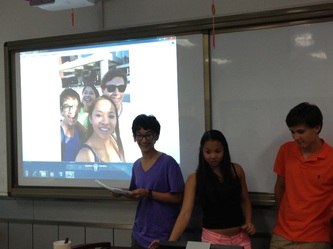
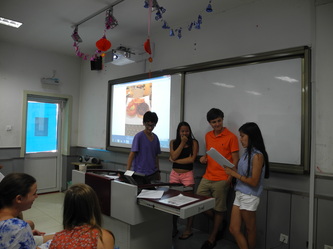
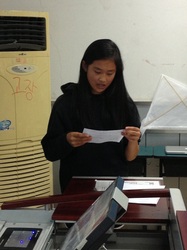
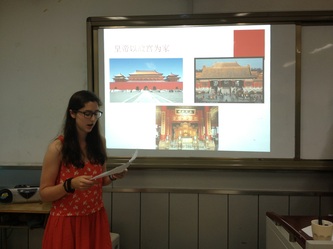
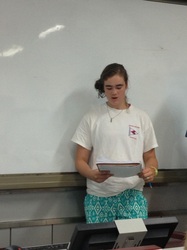
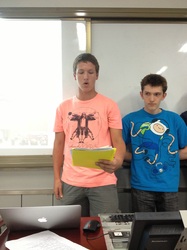
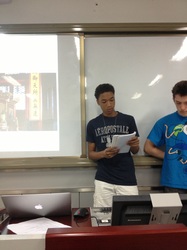
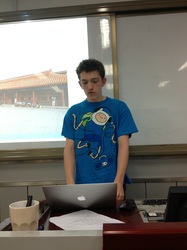
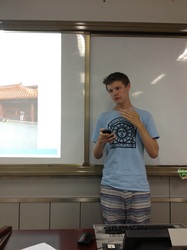
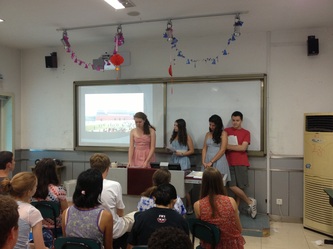
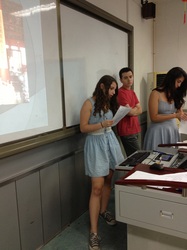
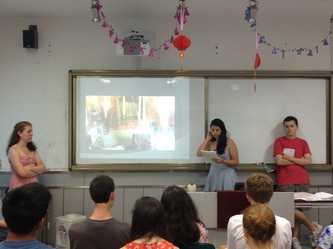
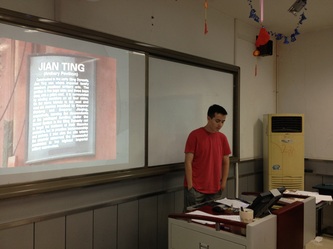
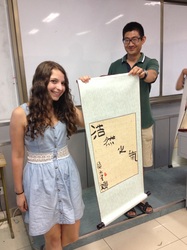
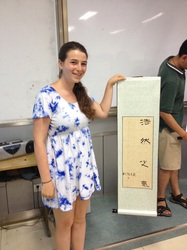
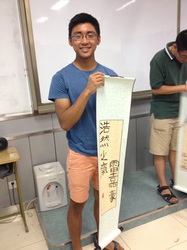
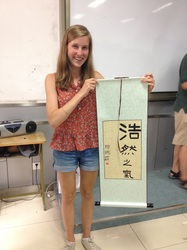
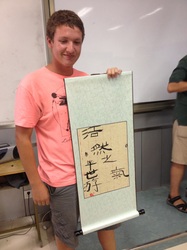
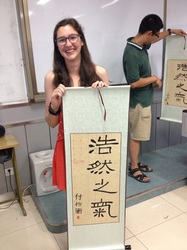
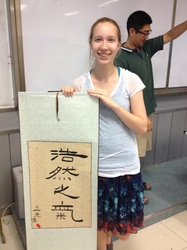
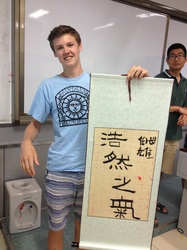
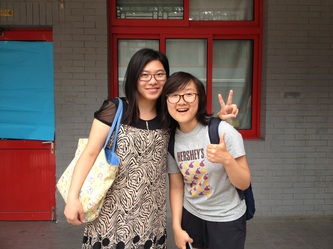
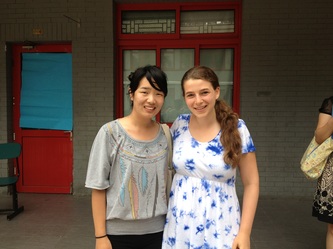
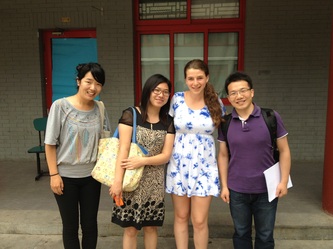
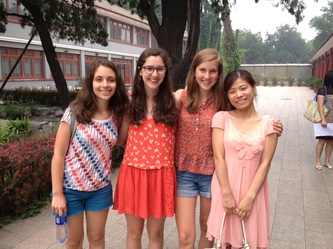
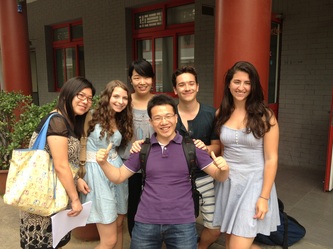
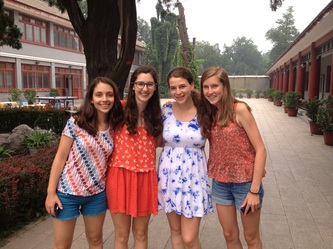
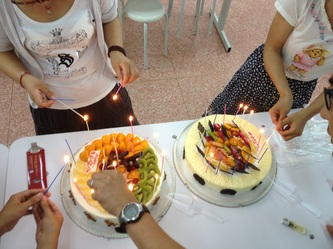
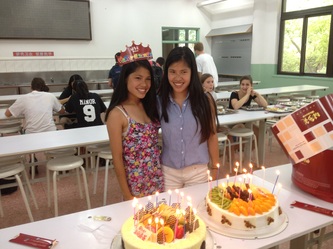
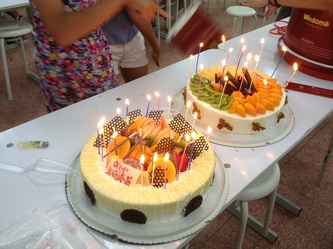
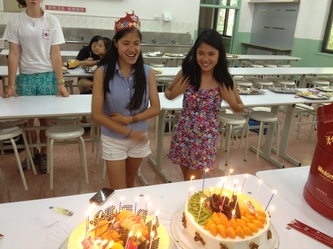
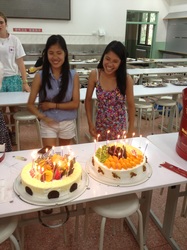
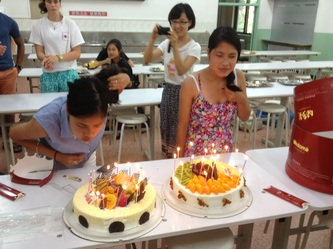
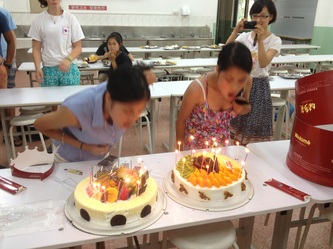
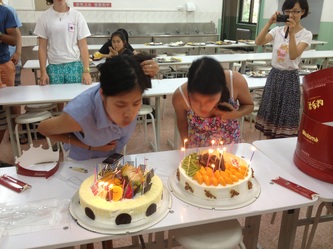
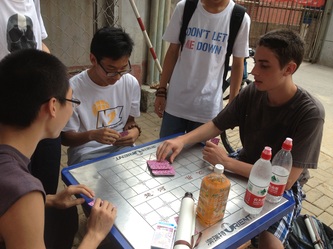
 RSS Feed
RSS Feed